Improvised Boundaries
site visit to castlefield viaduct

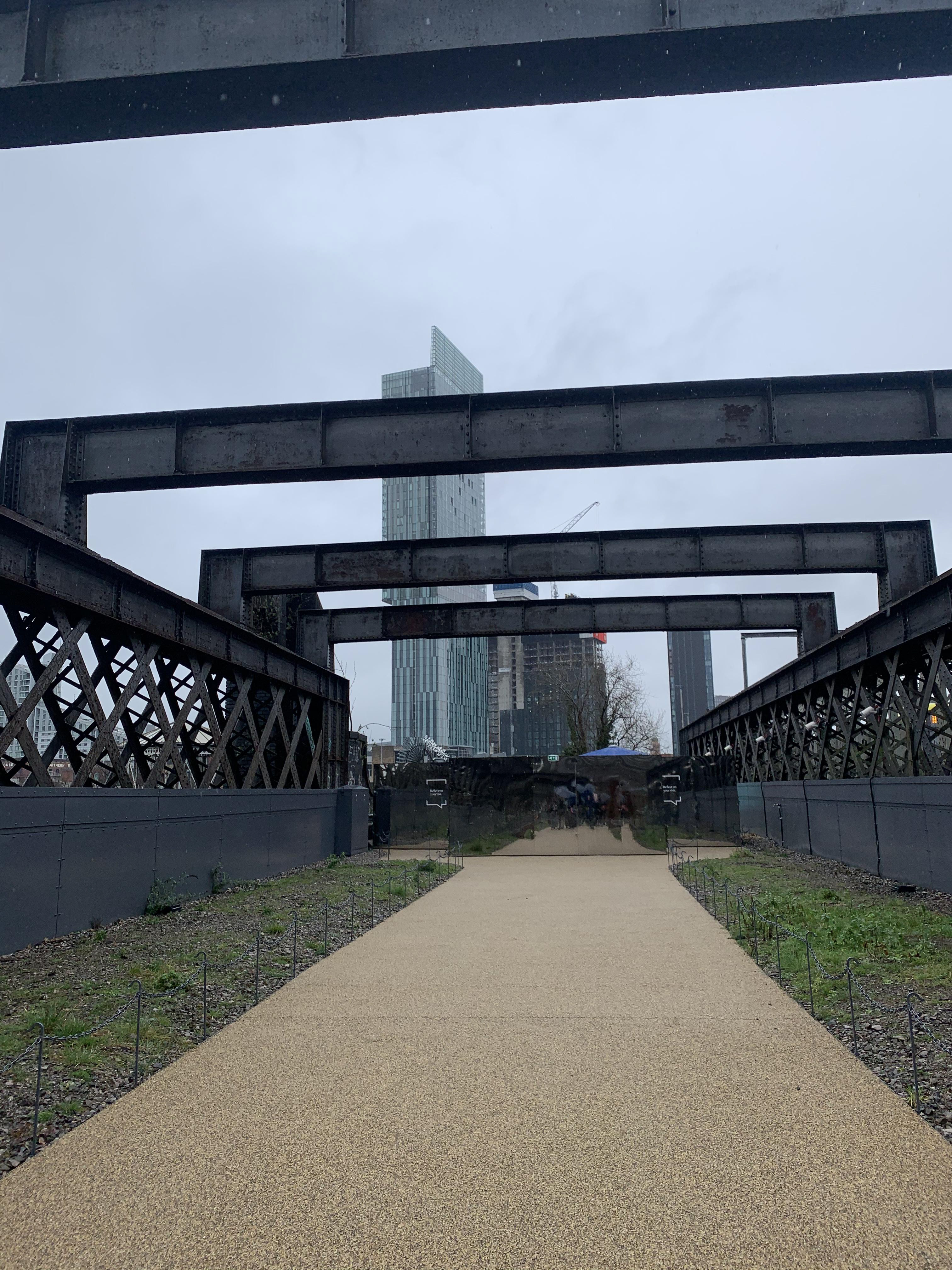

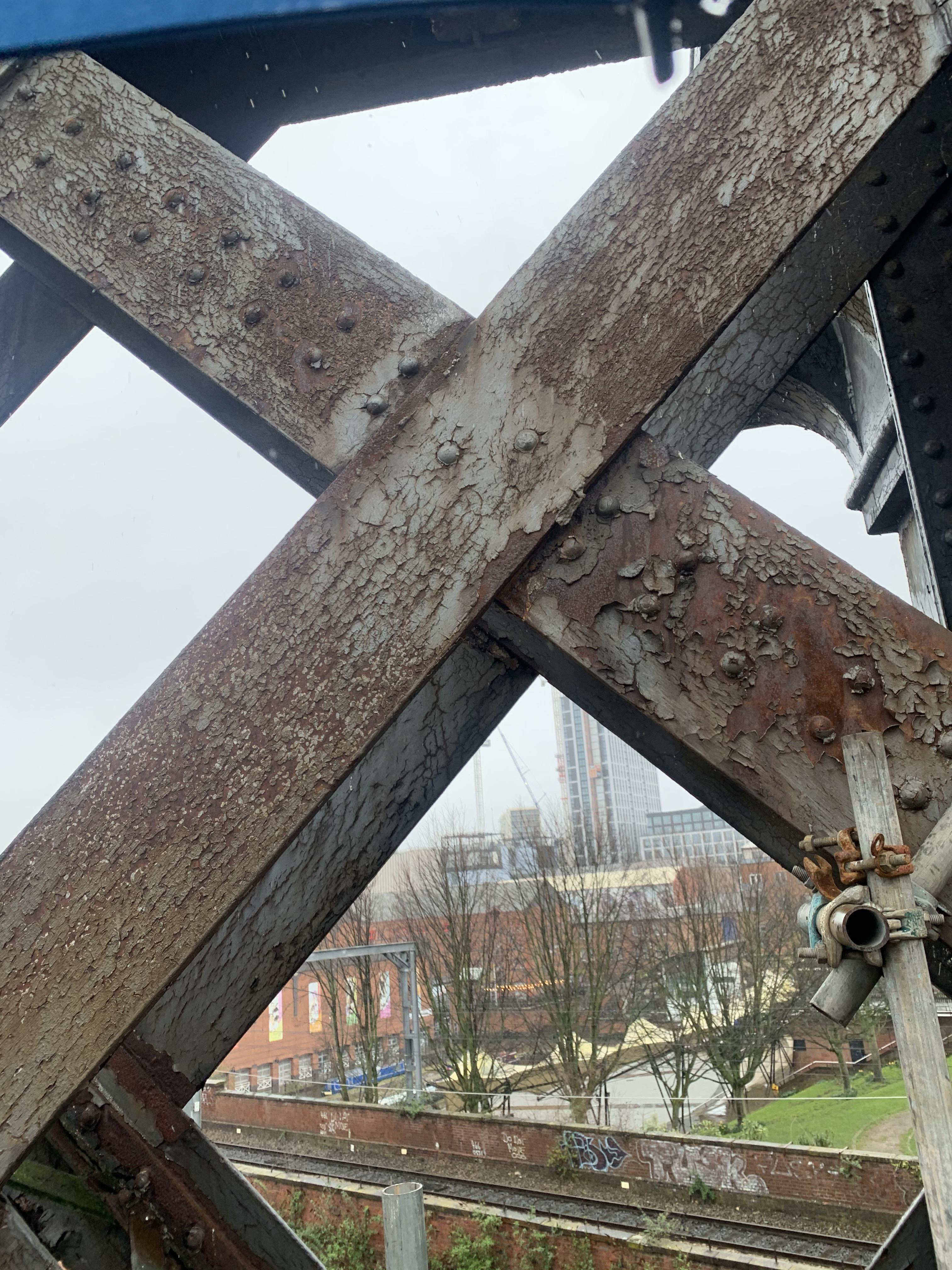
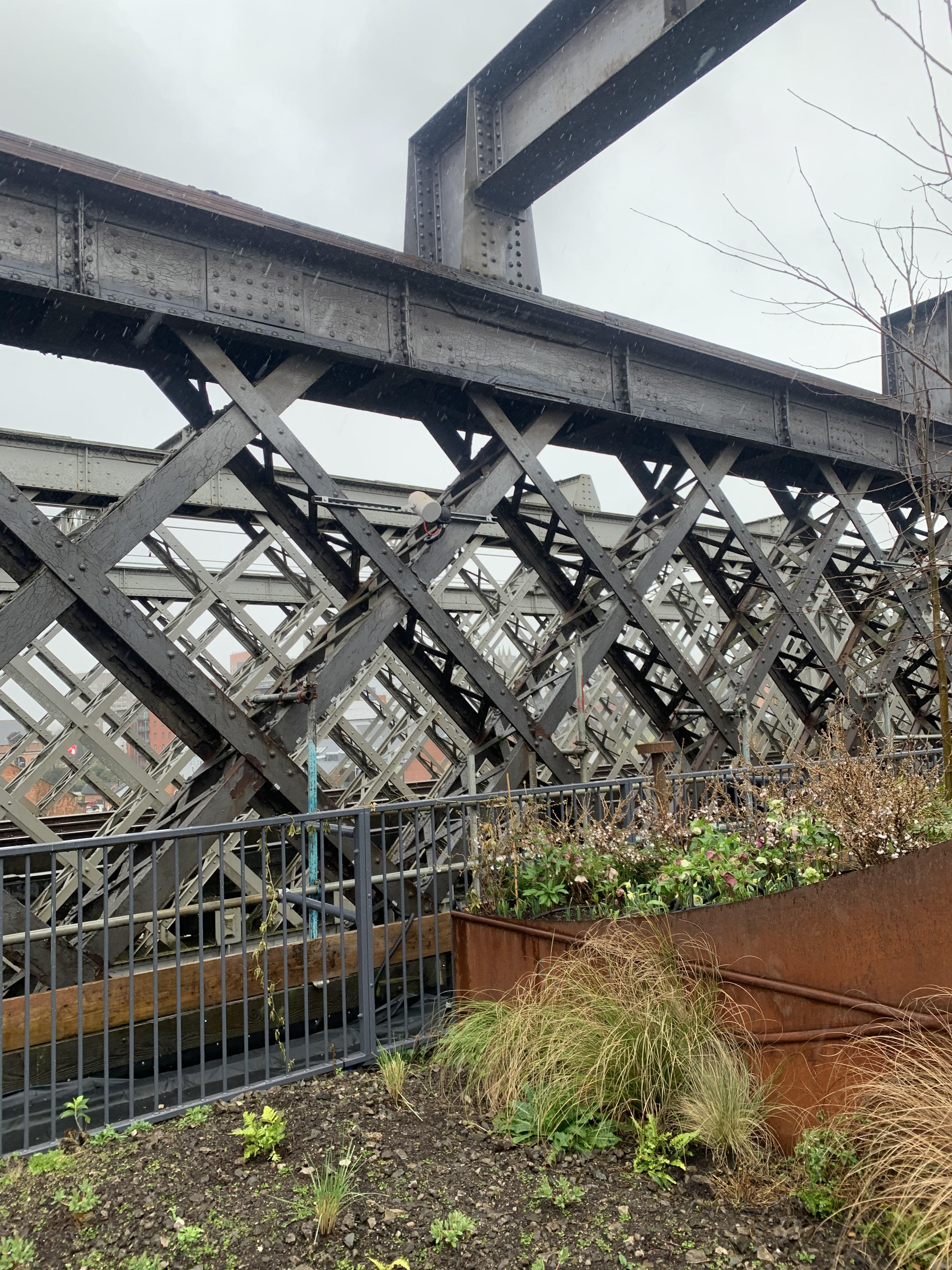

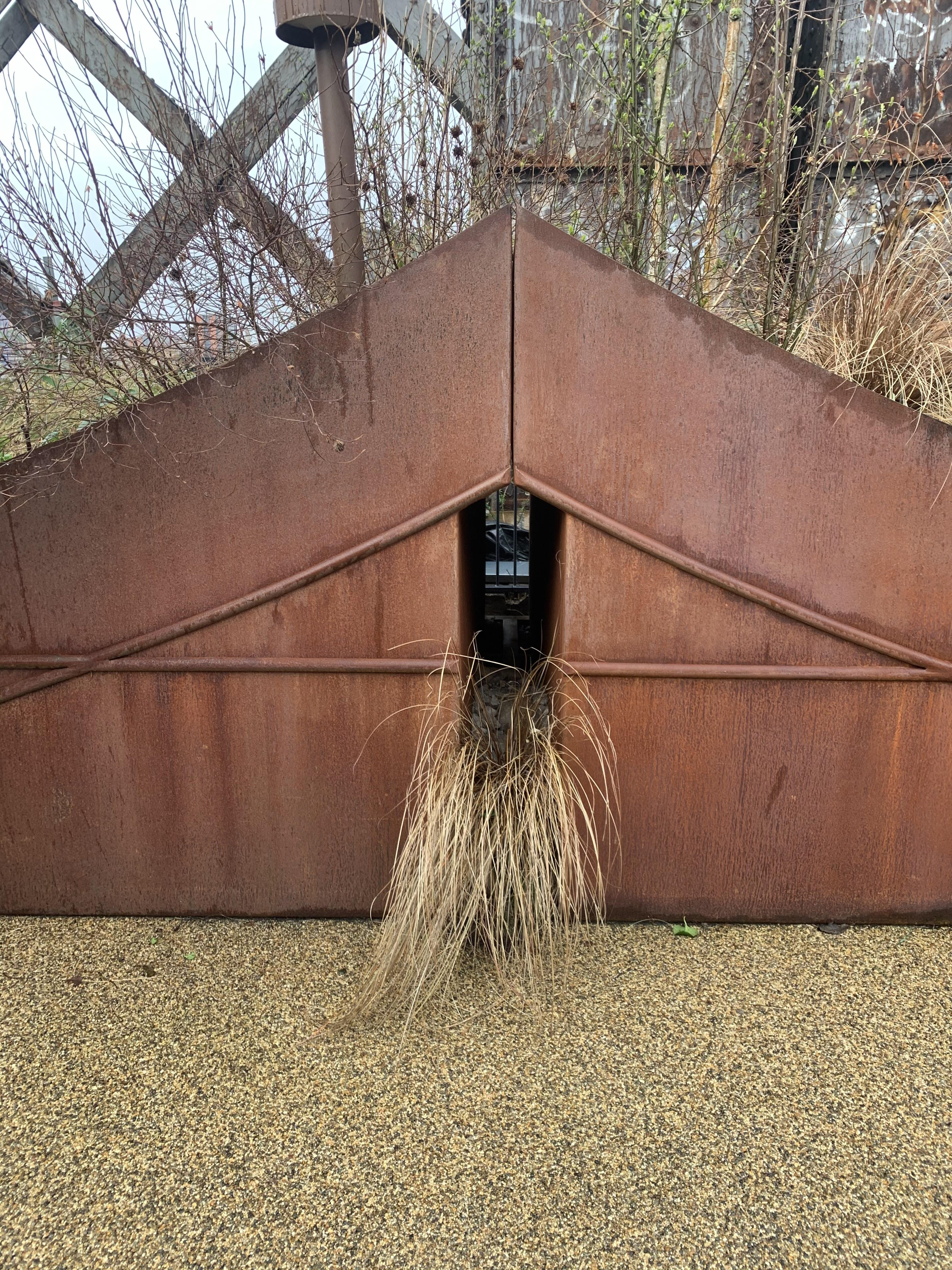


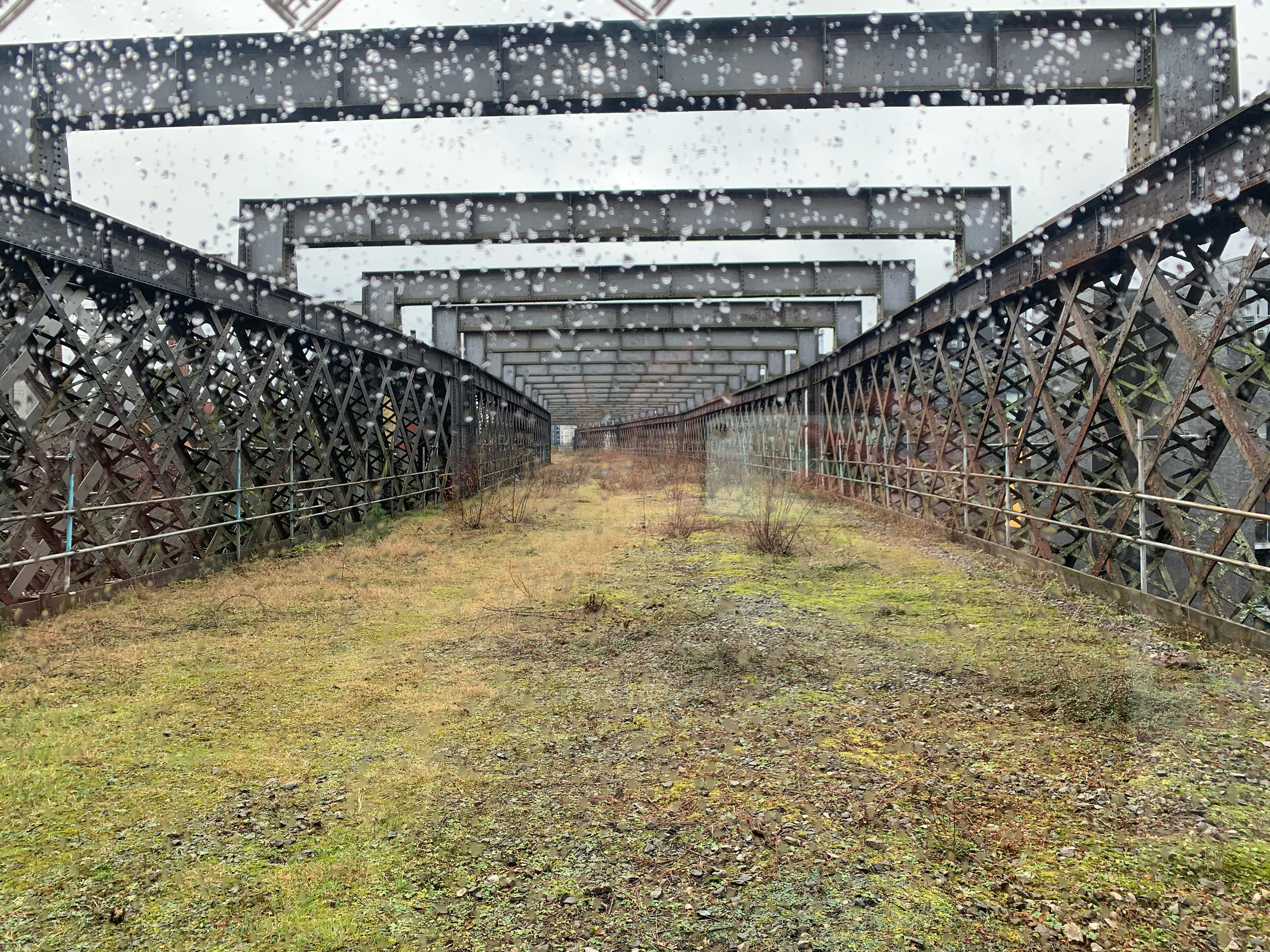

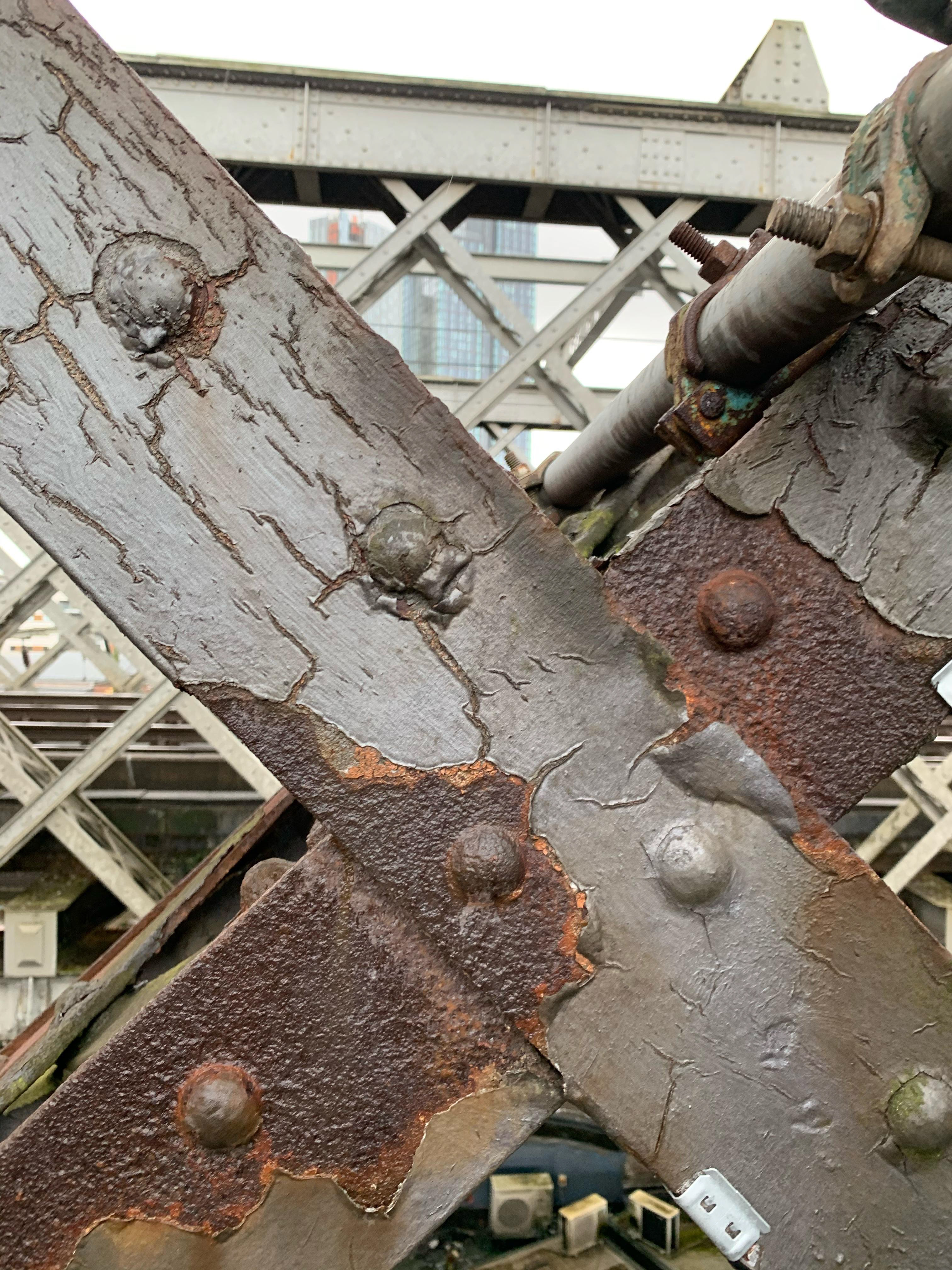
doing a site visit around Castlefield Viaduct, which is a 330 m disused railway viaduct built in 1892, which used to carry heavy rail traffic in and out of the Great Northern Warehouse. It closed in 1969 and is now being developed into a 'sky garden' above the city centre, taken over by national trust the viaduct has been transformed into a public area with a public garden which highlights the original constructions. inviting wildlife and creating a city green we explored the boundaries within the viaduct from the large metal structures that hold the track up to the boundaries of the green within a busy city centre.
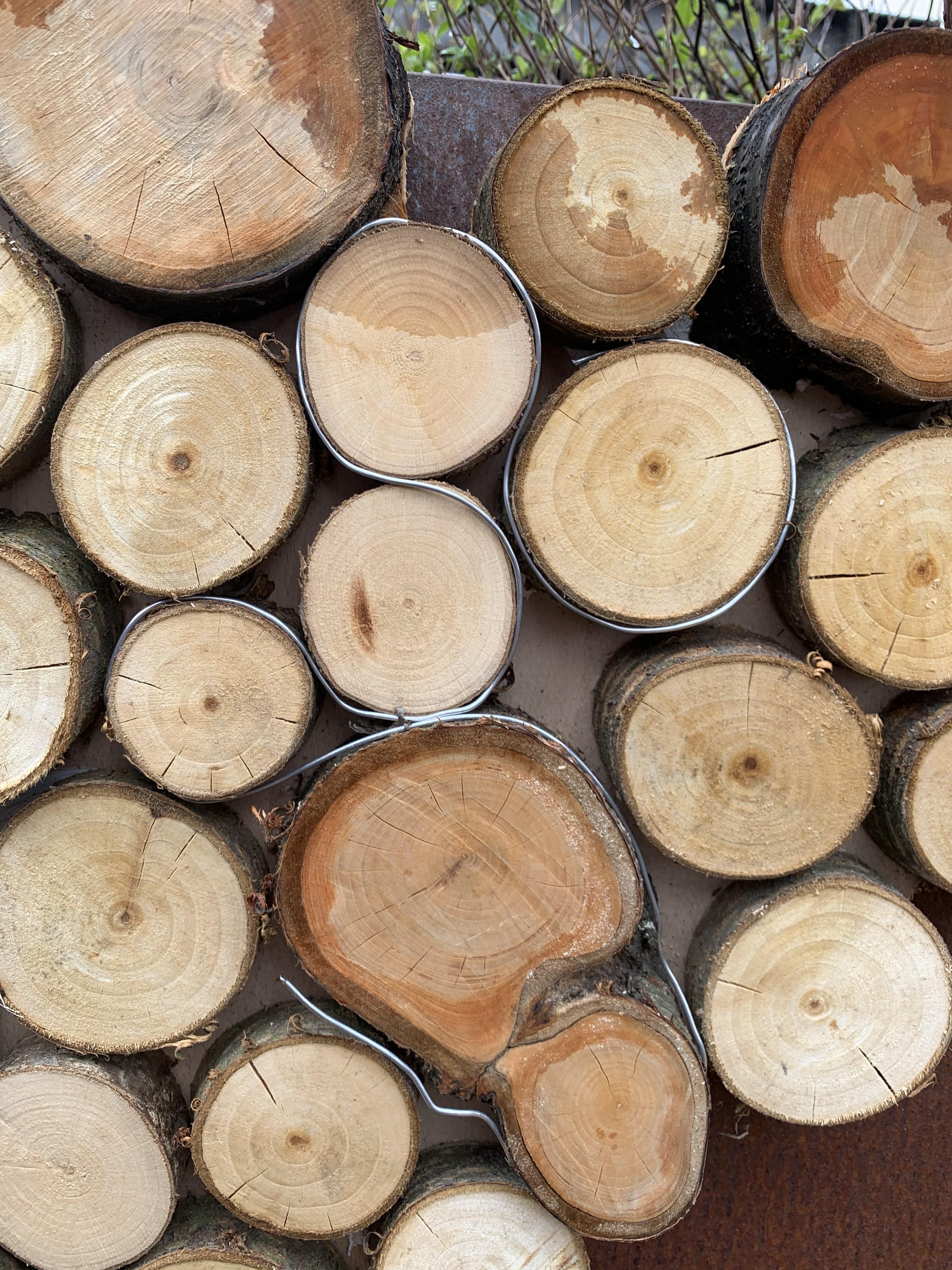
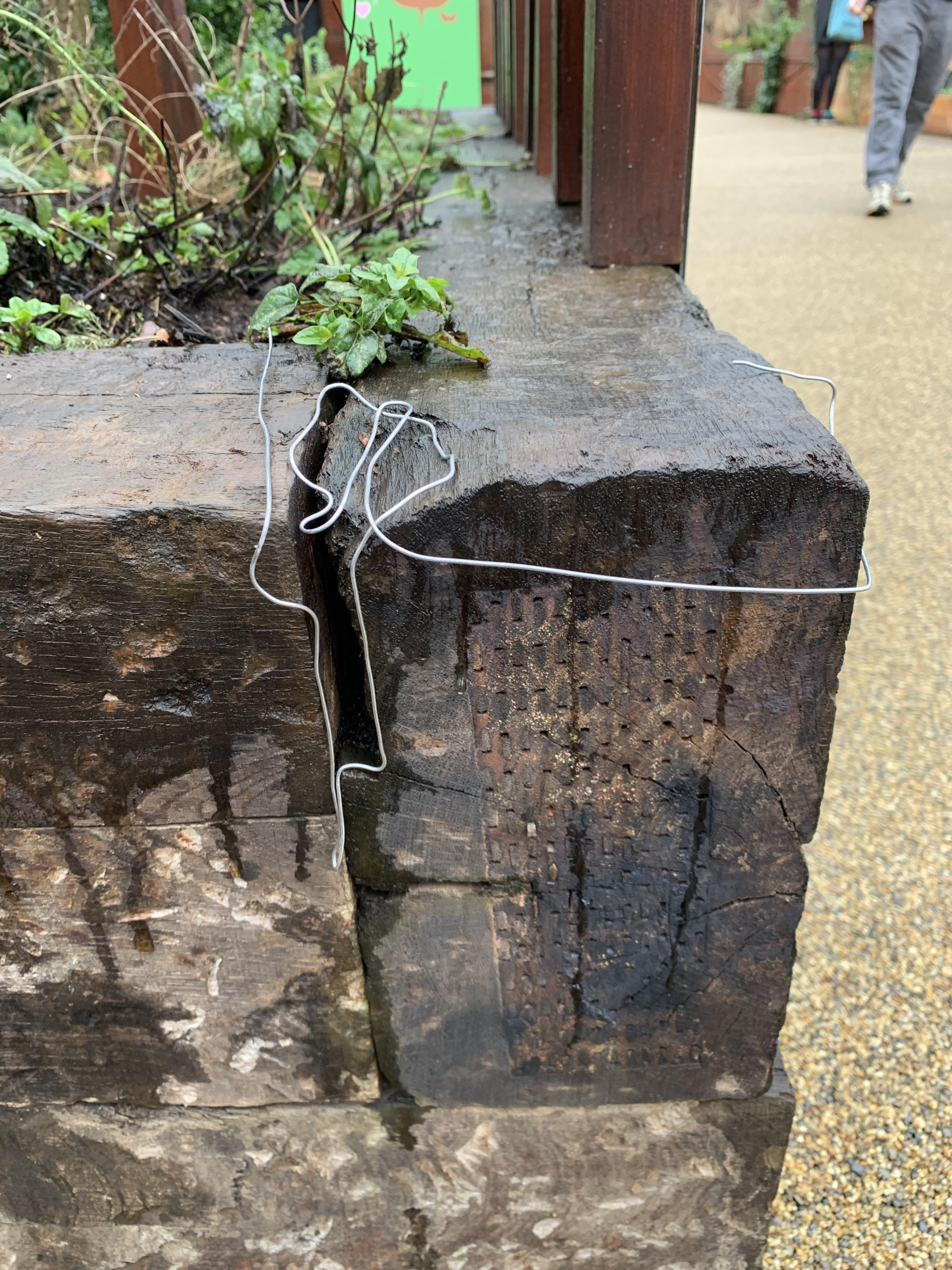
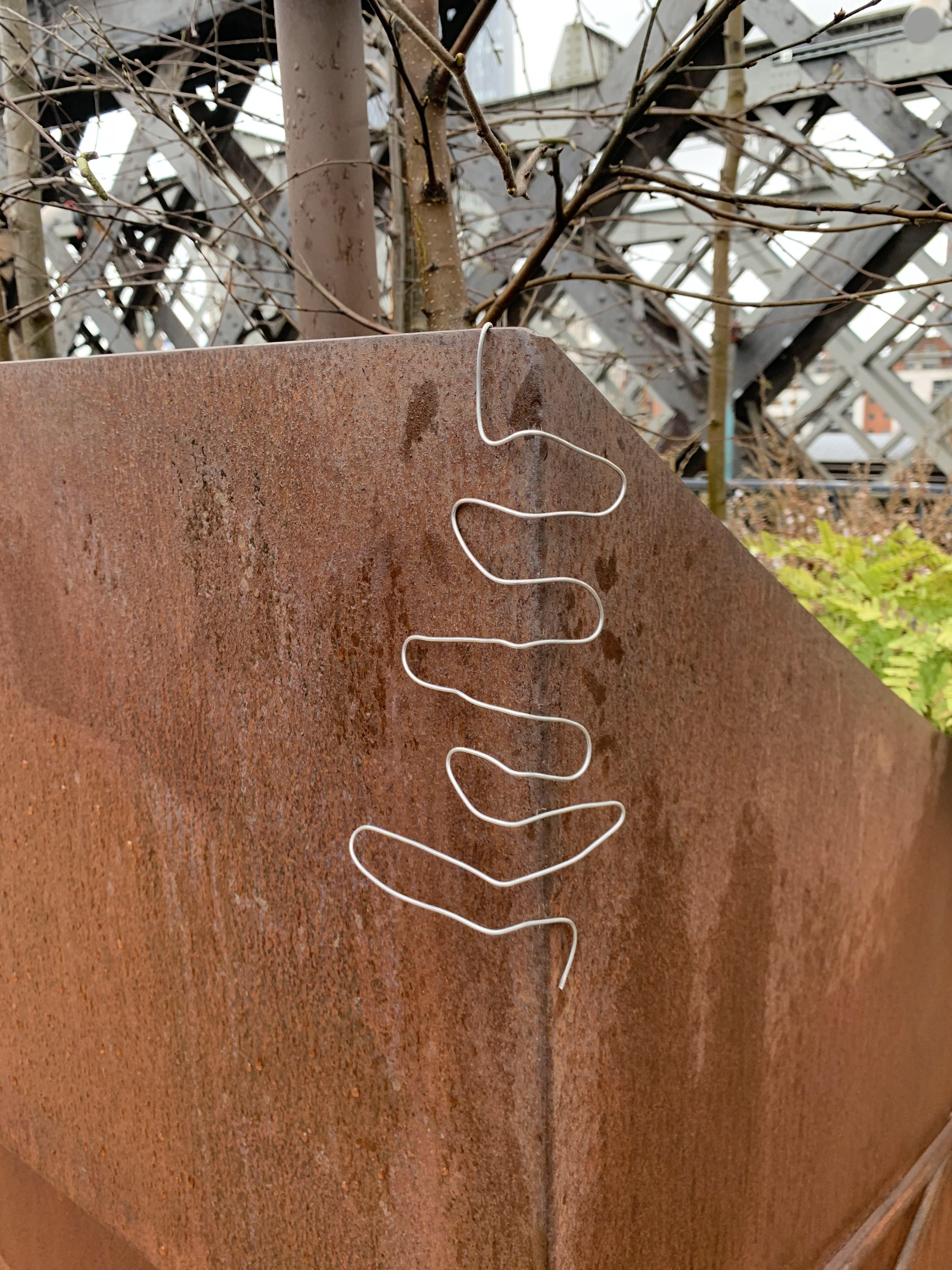
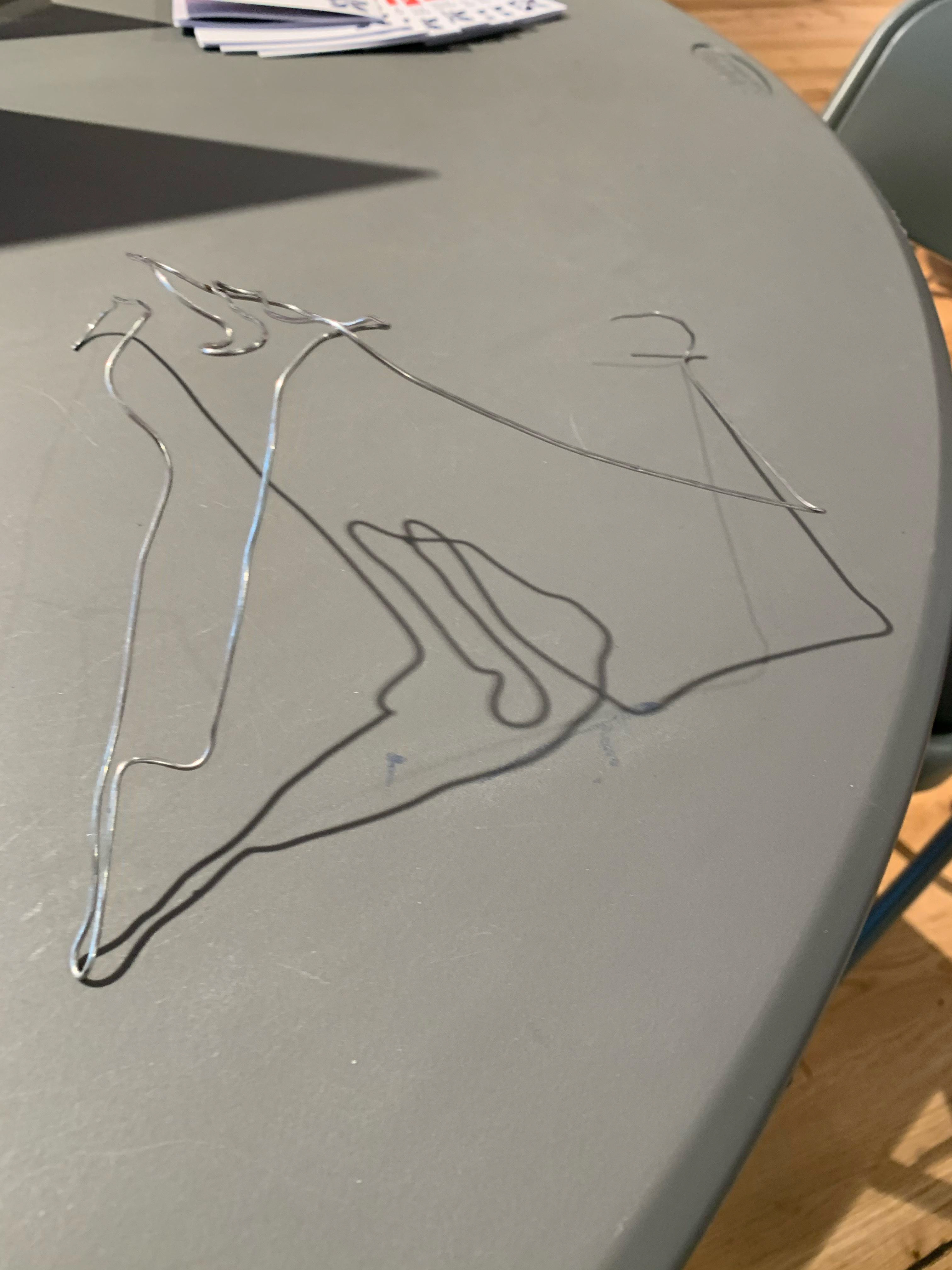

having meter wire pieces, we were looking into the boundaries of the viaduct. for this I looked at the boundaries of the cut wood and the boundaries in-between the pieces, I also like the boundaries of the rusted steel plant containers, a boundary as its holding in the plants whilst keeping unwanted things out and gives structure to the overall lay out of the viaduct, for this I wrapped the wire around the corner of the pot creating a zigzag shaped sculpture. for my last piece I wanted to look at the negative boundaries and found this wooden planter which started weathering rotting pieces of wood, so I traced the negative space with my wire. I want to look at the pieces I made and develop more forms following their structure.

I started this process by looking at all the different textures and shapes I saw at the viaduct. I really wanted to convey the boundaries of textures as I found this an interesting boundary to focus on. to accomplish this I started by having all my mixed metals, I wanted each metal to have a different texture. for the aluminium the base metal I used a round head hammer to create dents in the mental, this also created a natural reaction of bending the metal, BOWLING IT.
FOR THE BRASS I ROLLED IT THOUGH THE ROLLER WITH CREASED PAPER AND LAYERED masking TAPE. THIS TEXTURE OF THE PAPER ROLLED THROUGH WITH THE METAL ON A TIGHT FITTING COPIES THE TEXTURE ONTO THE METAL DENTING IT WHEN THE PAPER LIED. FOR THE COPPER I USED COPPER WIRE WHICH I WEAVED THOUGH DRILLED HOLES. ONCE I DID THIS I HAMMERED THEM SLIGHTLY GIVING THEM A FLATTERNED SURFACE. THE COMBNATION OF ALL THESE TEXTURES I THINK BRINGS THIS Piece Together SHOWING THE Boundaries WITHIN THE VIADUCTS Textures.

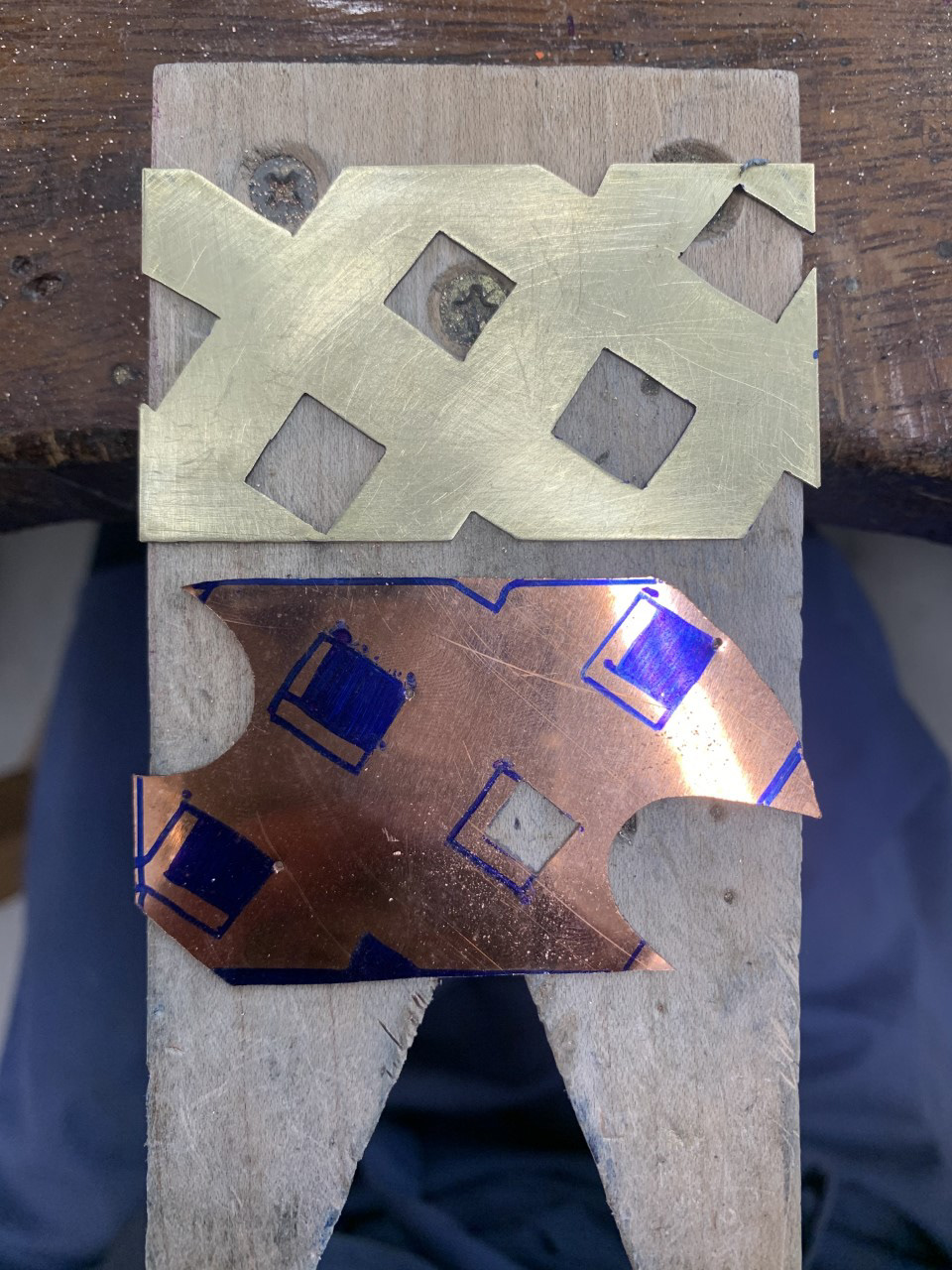
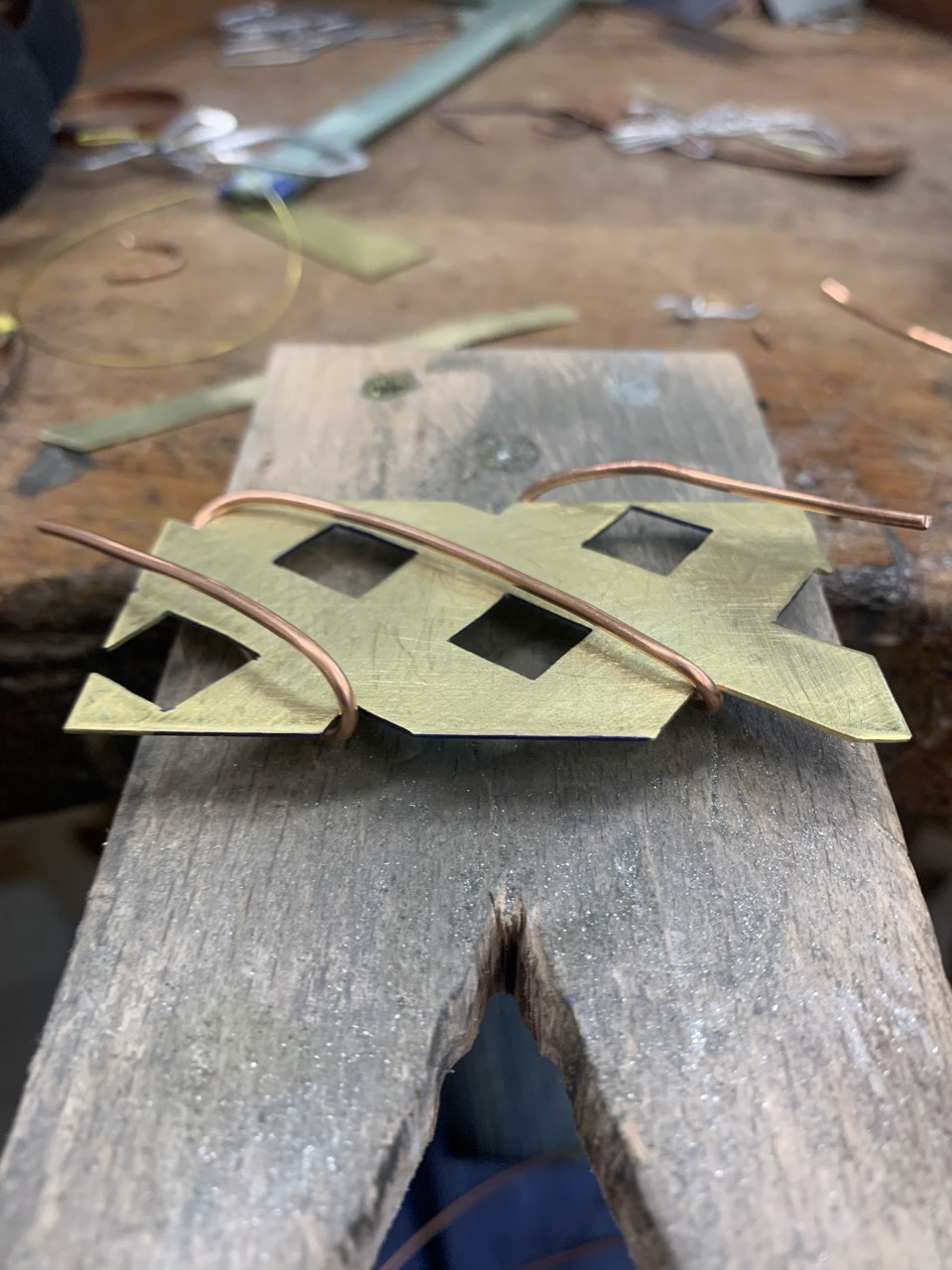
inspired by the viaducts iron cross structure that runs the whole way of the viaduct, made from brass sheet and copper wire. the squares were precisely cut out with a piercing saw then the copper wire wrapped around and put through a roll machine to attach it to the brass.
Measuring TOOL

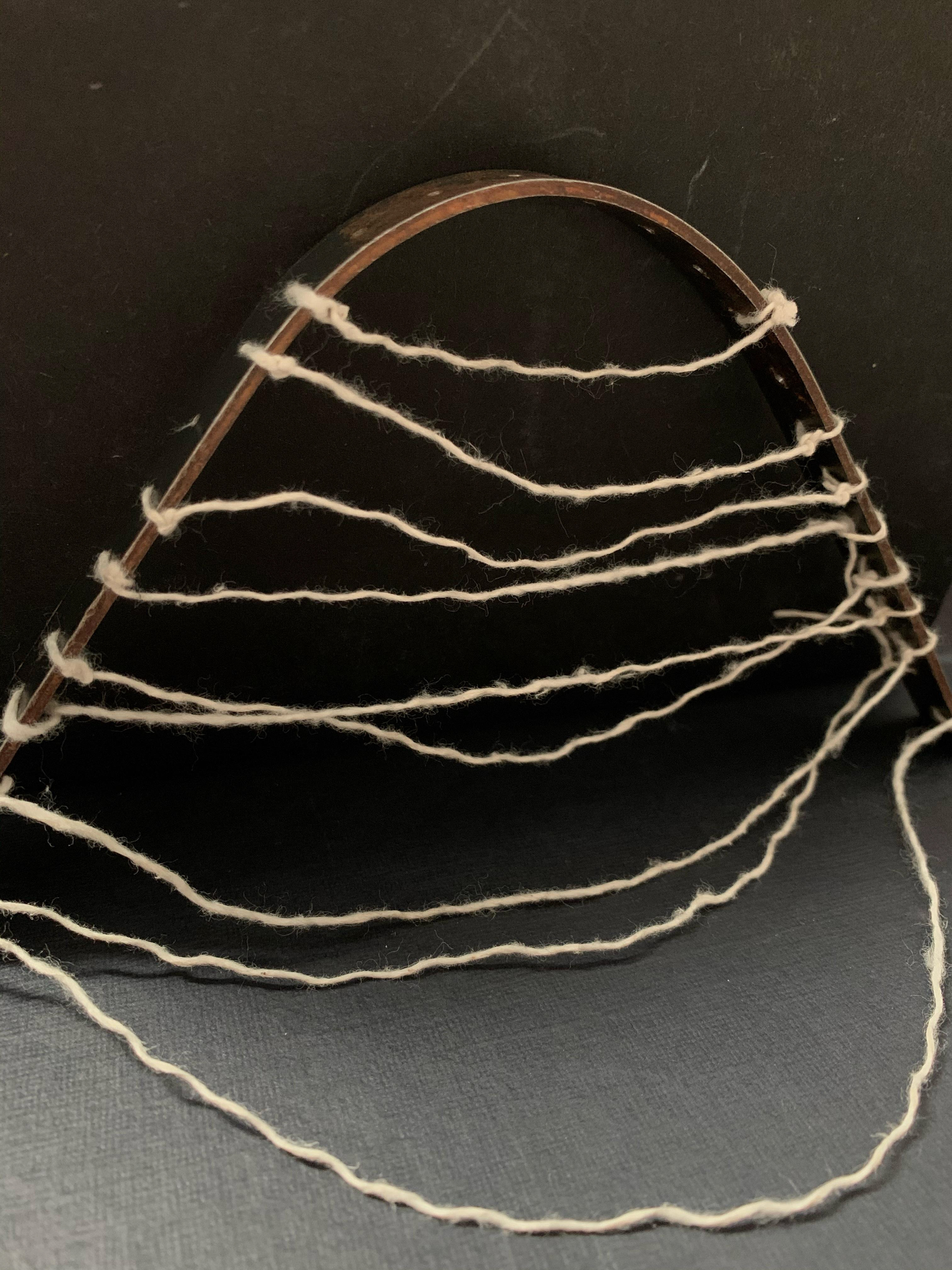
site visit to Noma
when doing a site visit of Noma, a 20-acre mixed-use redevelopment scheme in Manchester, NOMA focuses on revitalising and opening the northern area of Manchester city centre it is undergoing a massive redevelopment hospitalising offices, residential and retail space. Joe Hartley our collaborative designer has had heavy involvement in Noma, with designers called standard practise they have created areas within Noma involving the public creating a pub called the pilcrow a community garden know as plant Noma, a workshop and gallery. exploring the boundaries within Noma allowing it to become a community space, contrast with the highly building development around it.
with Noma I was drawn to the contrasting settings. seeing the industrial side with the big buildings, grey bricks and floors contrasting with the large open greenery space and intricate details of what standard practise has added into the yard. I was CAPTURED BY THER HINTS OF COPPER AROUND TRHE YARD, IN SIGNS, SEATING, BINS AND LIGHTING POLES. THIS POP OF COPPER WHICH HAS OXIDED CREATING A BRIGHT AND VIBRENT TURQUOISE HINTING AROUND THE YARD BROUGHT COLOUR TO THE INDUSTRIAL YARD. IN ITS SELF BREAKING BOUNDRIES OF THE COLOUR PALLET OF THE YARD WHICH I LIKED. I ALSO LIKE HOW THERE WERE PARTS STILL IN CONSTRUSTION THE YARD SHOWED THE OLD, NEW AND DEVELOPING BUILDINGS, SEEING THIS CYCLE OF CONSTRUSTION WAS INTRESTING TO SEE.

this design is inspired from my drawings of Noma, having lighting poles in the centre of the yard they had a cut out design in copper which over the years being outside have oxidised and turned a rusted green. the cut out meal runs up the sides of the pole and looks like a leaf skeleton. this was a good sample as it allowed me to practise my piercing saw skills on a small scale. on like a 5x5 cm square of brass. having to drill and saw each section really tested my patience and skill.

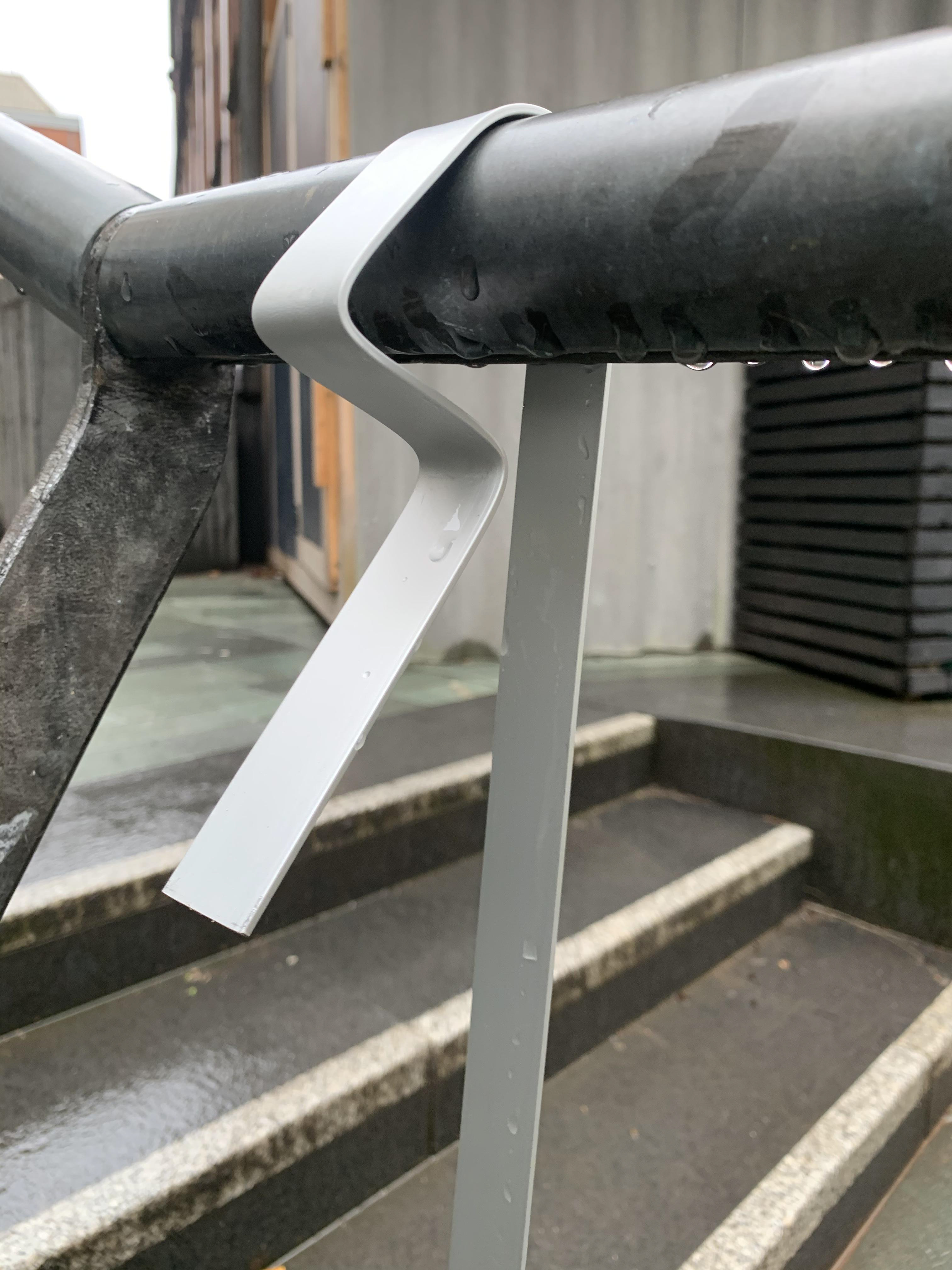



When going around Noma we were given a sheet of meter aluminium, which I used to bend around forms found at Noma to create an interesting form using structures from Noma, I used stairs rails, seating, tress. I then played around with the photography and placement Of my sheet, each photo takes you through the journey of it being bent and contrasting this breaking the boundaries of its surrounding. I liked to focus on my sheet metal balancing on the seating, although this as at the beginning of me working with it so it has few bends. it is breaking a boundary by balancing on a structure that is intended for you to sit and relax on breaking to roll of the chair.

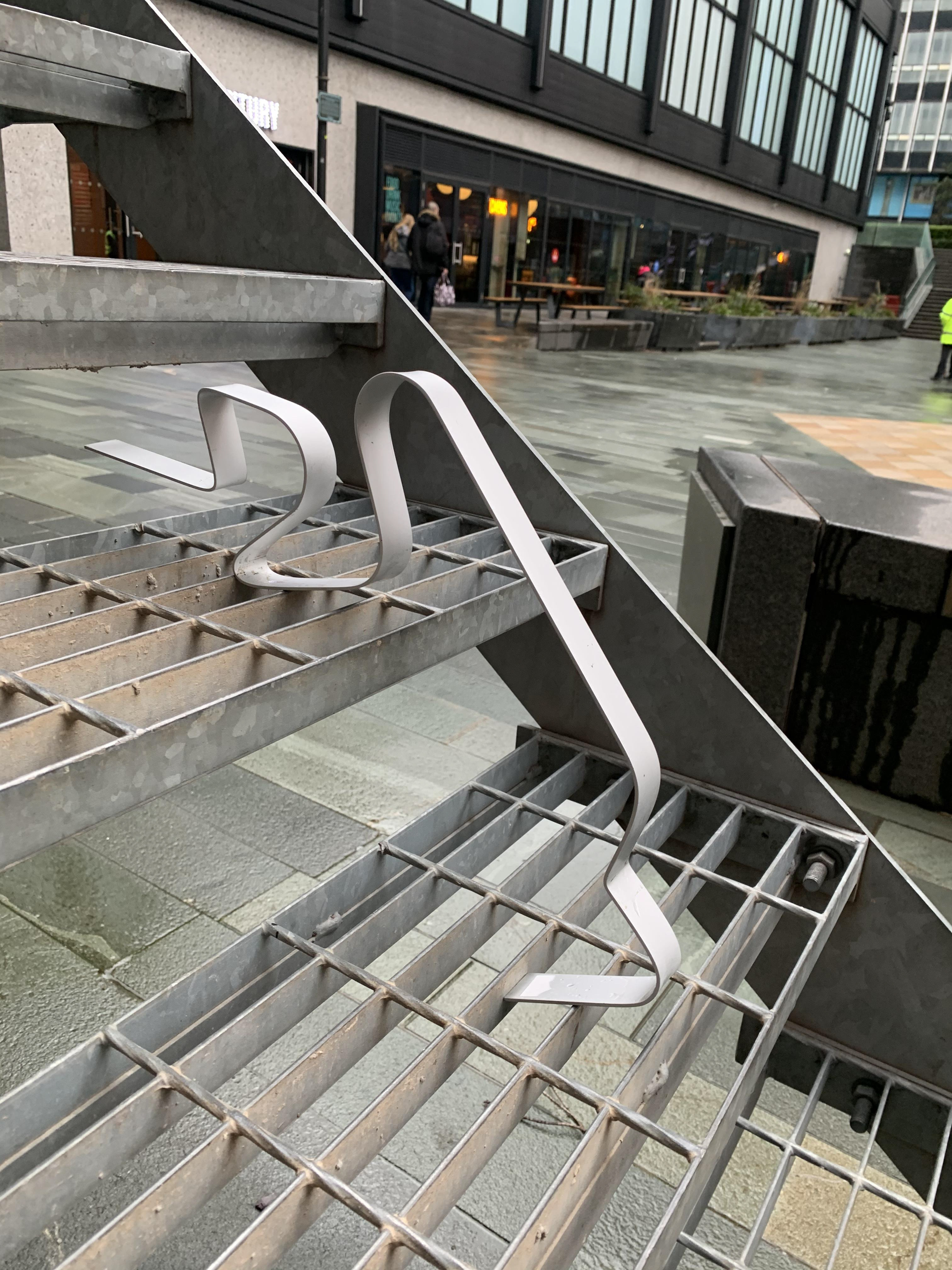
When taking pictures of it on the stairs I added another bend from the stairs I then placed it with the stairs structure, showing it ascending or descending the stairs on how you view it. At this point the metal sheet seems it has a structure of its own working well with the steel stairs however evidently is not belonging there breaking the boundaries of its surroundings.
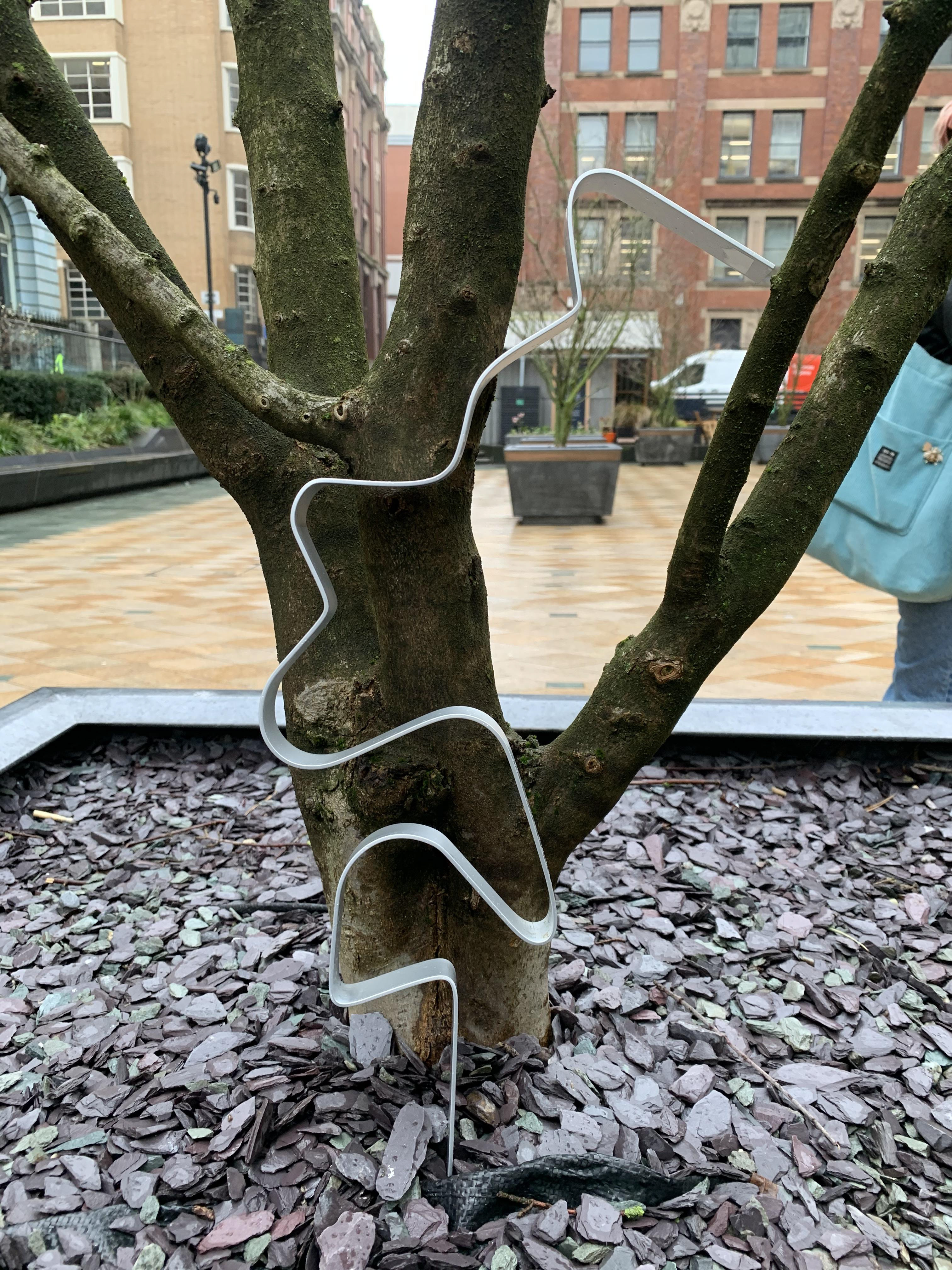

the end structure of the aluminium reminded me of the roots or a branch of a tree. using a branch to create one of its bends I thought it would be contrasting to put it up against the tree its self, copying the trees structure although its been created by shapes of mainly man made structures around the yard. it was interesting seeing this combination of the natural and manmade how they have lots of similarities.
LIGHT PLAY
from our research at Noma we then took this back to the studio to develop our ideas on boundaries, looking into light and shadows and how these change our ideas on boundaries. how changing one source can effect the whole attitude of the work.
first we photographed the wired structure at different angles these different perspectives convey the sheet very differently each angle it looks like a different piece even though its just from the camera angle changing. this change in boundaries is interesting as its the boundary of perspective, little elements that change therefore changing our whole perspective of the object.
first we photographed the wired structure at different angles these different perspectives convey the sheet very differently each angle it looks like a different piece even though its just from the camera angle changing. this change in boundaries is interesting as its the boundary of perspective, little elements that change therefore changing our whole perspective of the object.

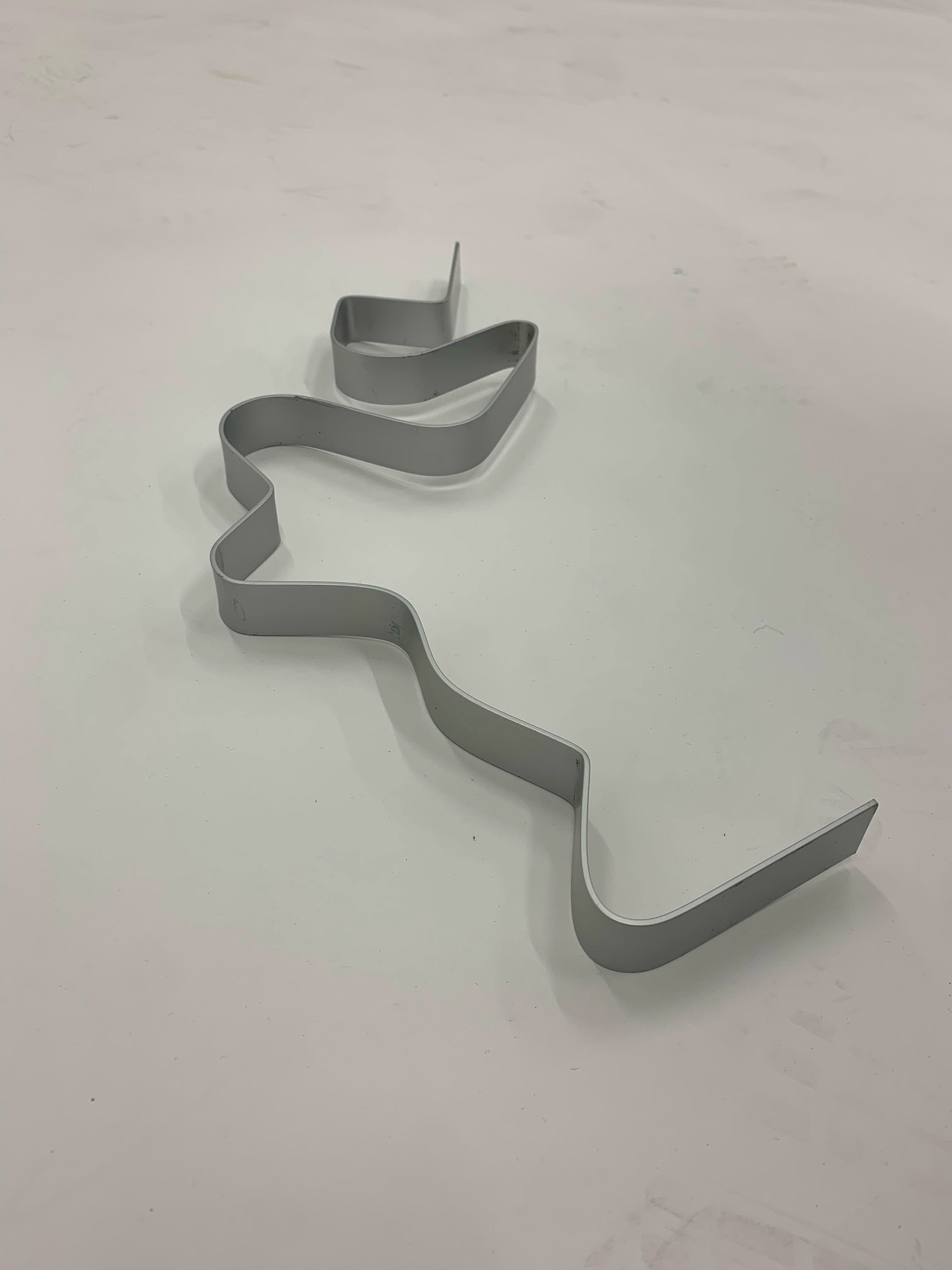

then playing with the light changing its angle to create shadows that cast off the wire structure, depending on the position of the structure and the light the shadows made where so different, it was interesting to see that slight movements had such big impacts. having bolder, thinner and more warped shadows. shadows are an interesting thought when in correlation with boundaries- they create a boundary around the subject created from the absent of light, The line by which an object's light and shadow sides are separated is referred to as its terminator this is a physical boundary which we created by using a light source.
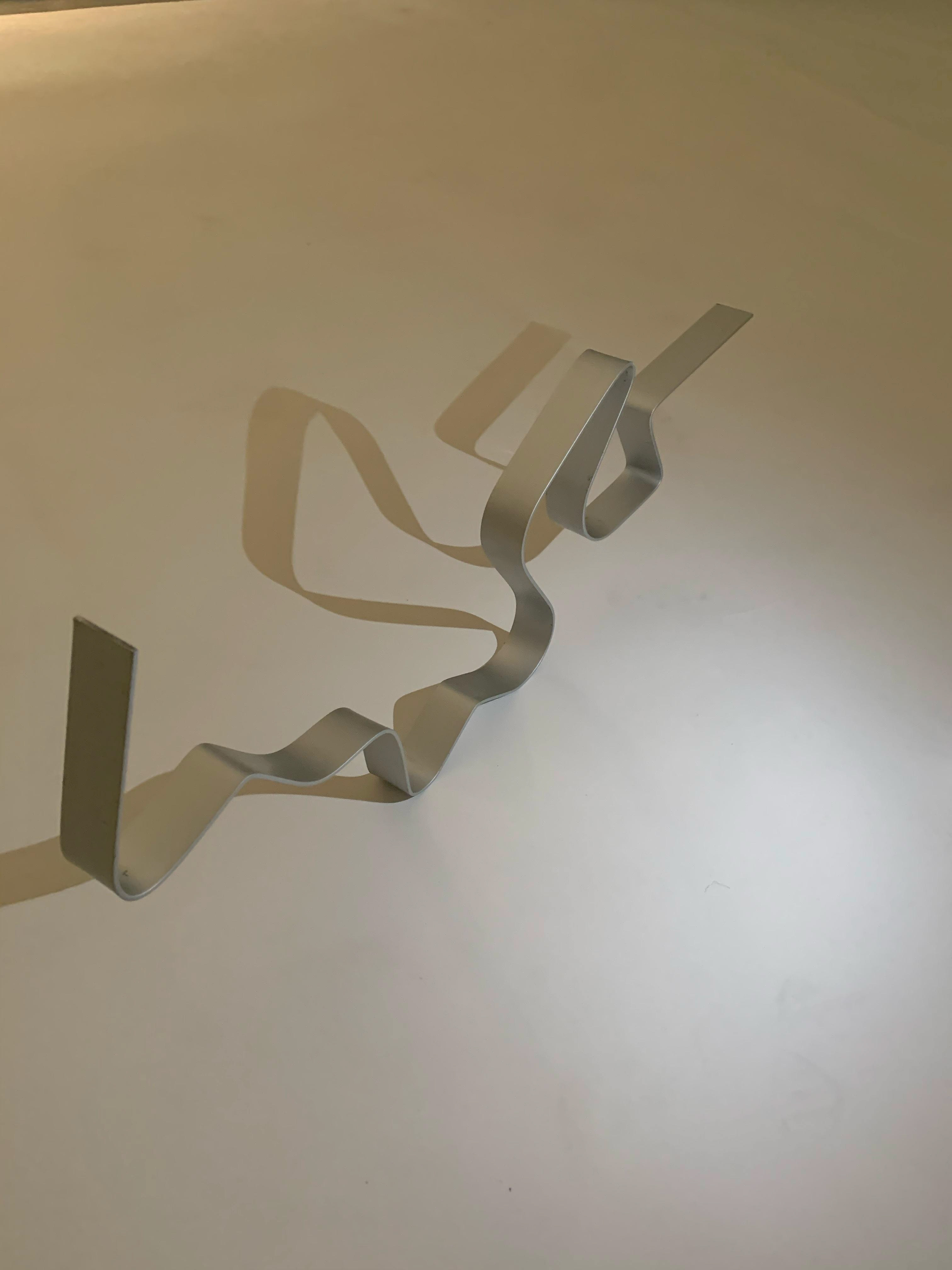
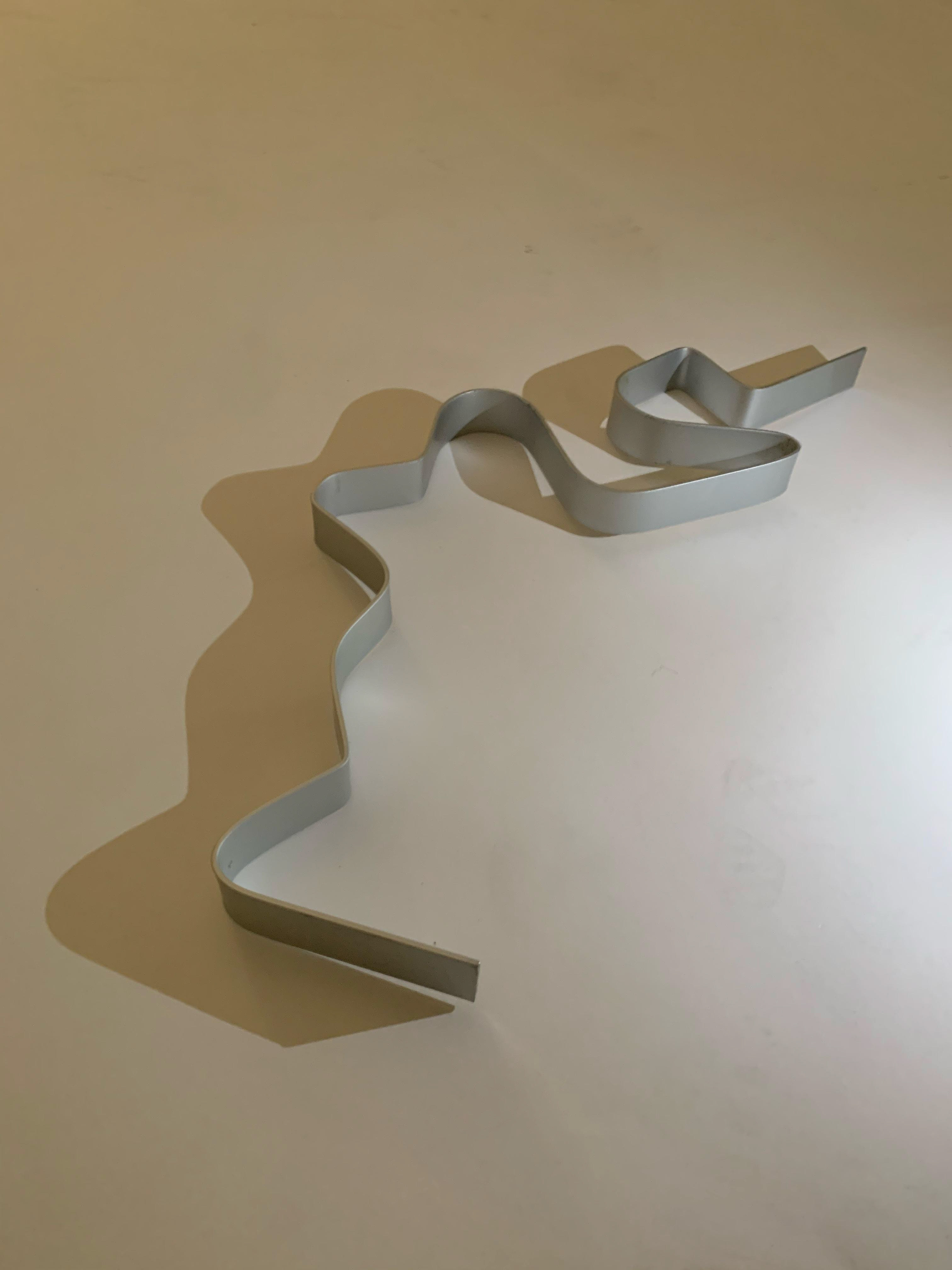
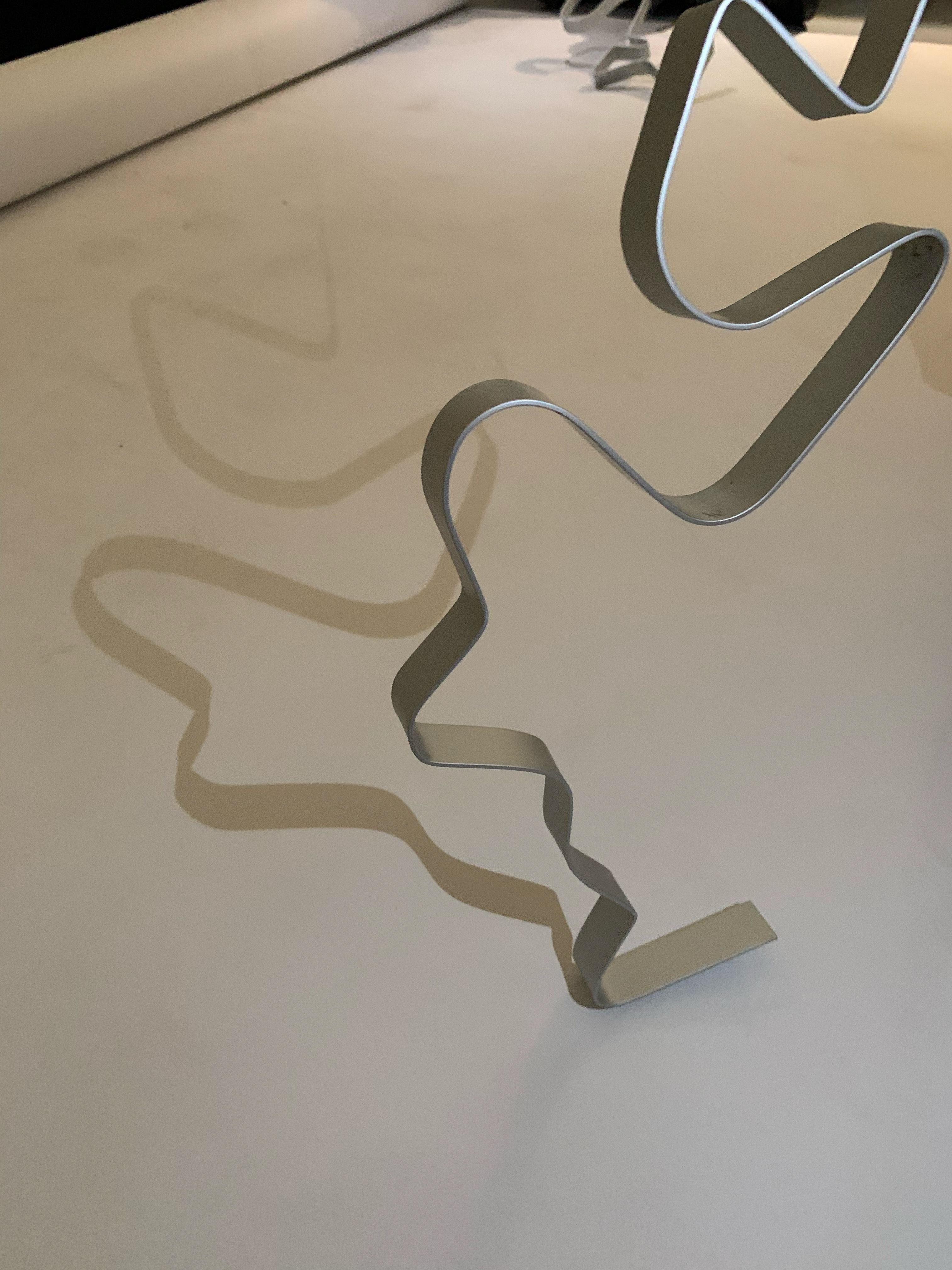
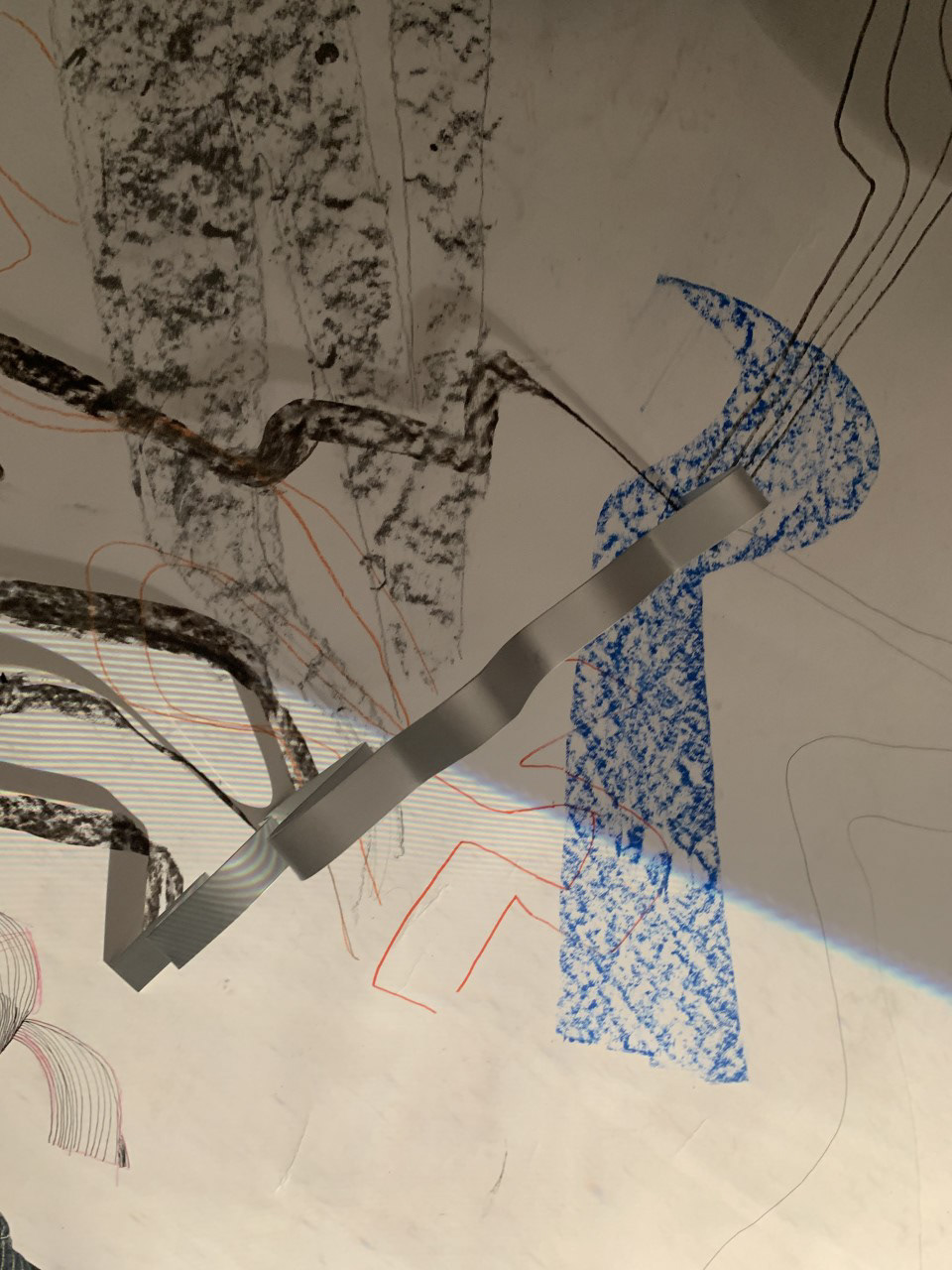


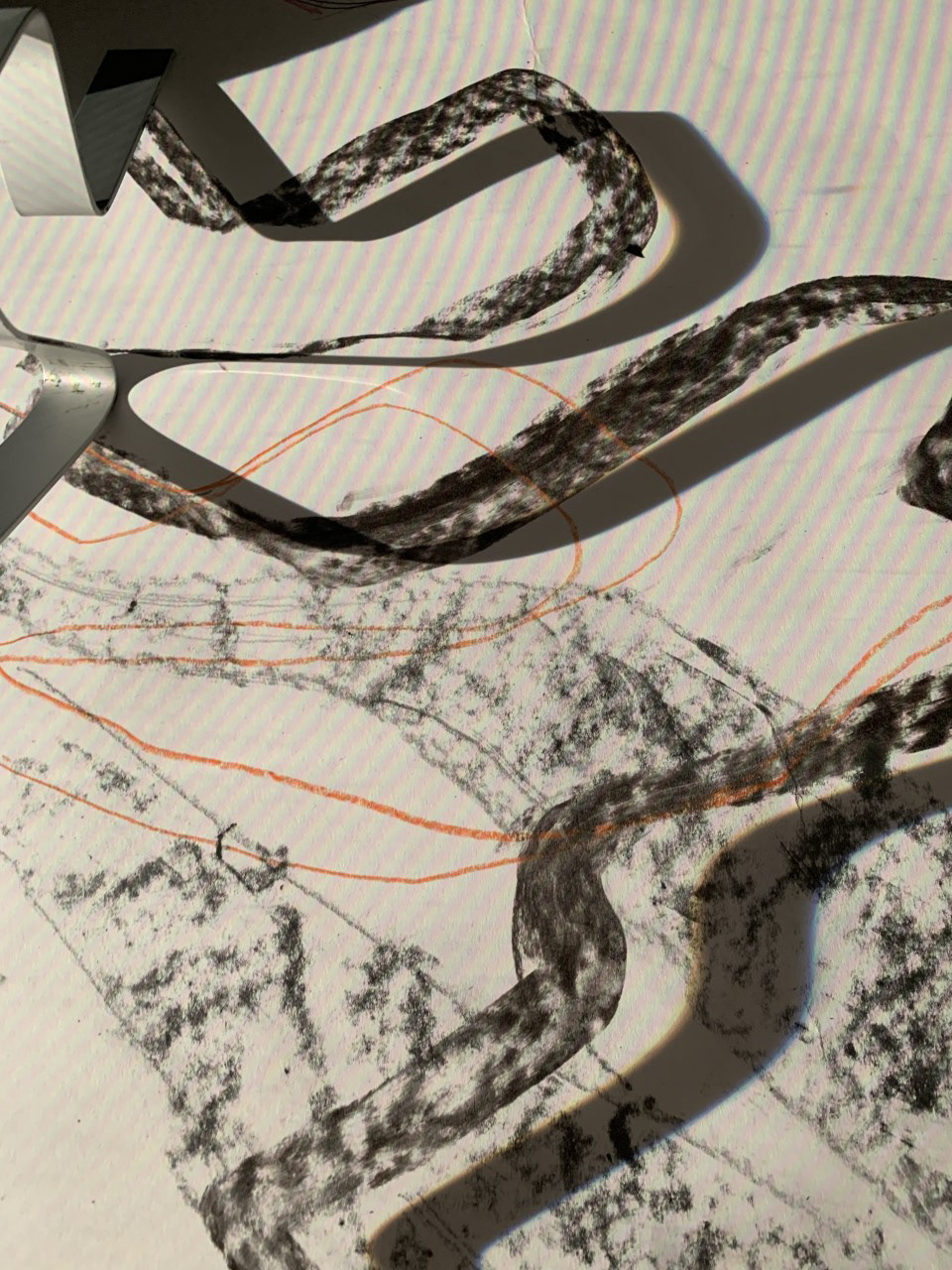

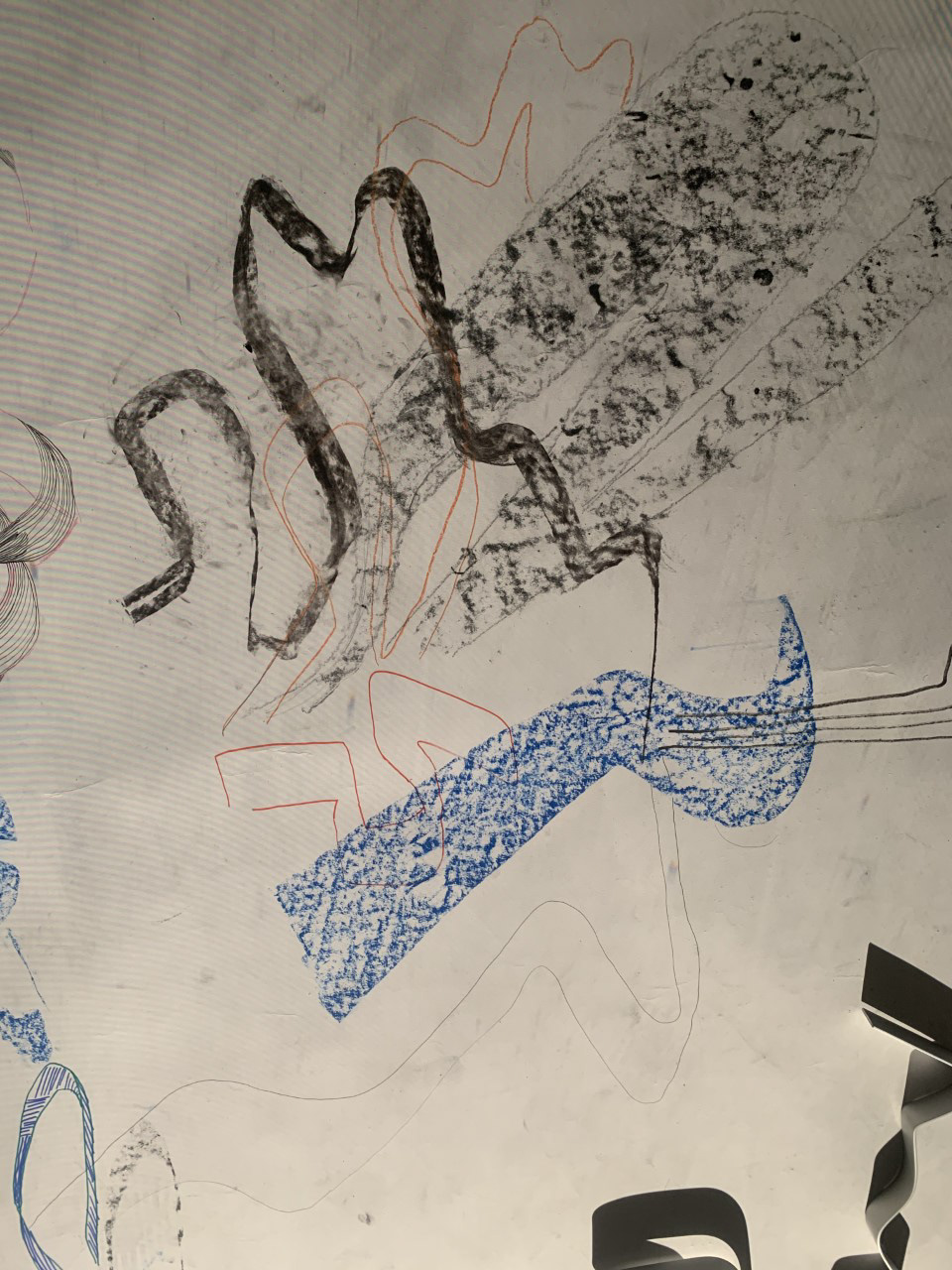
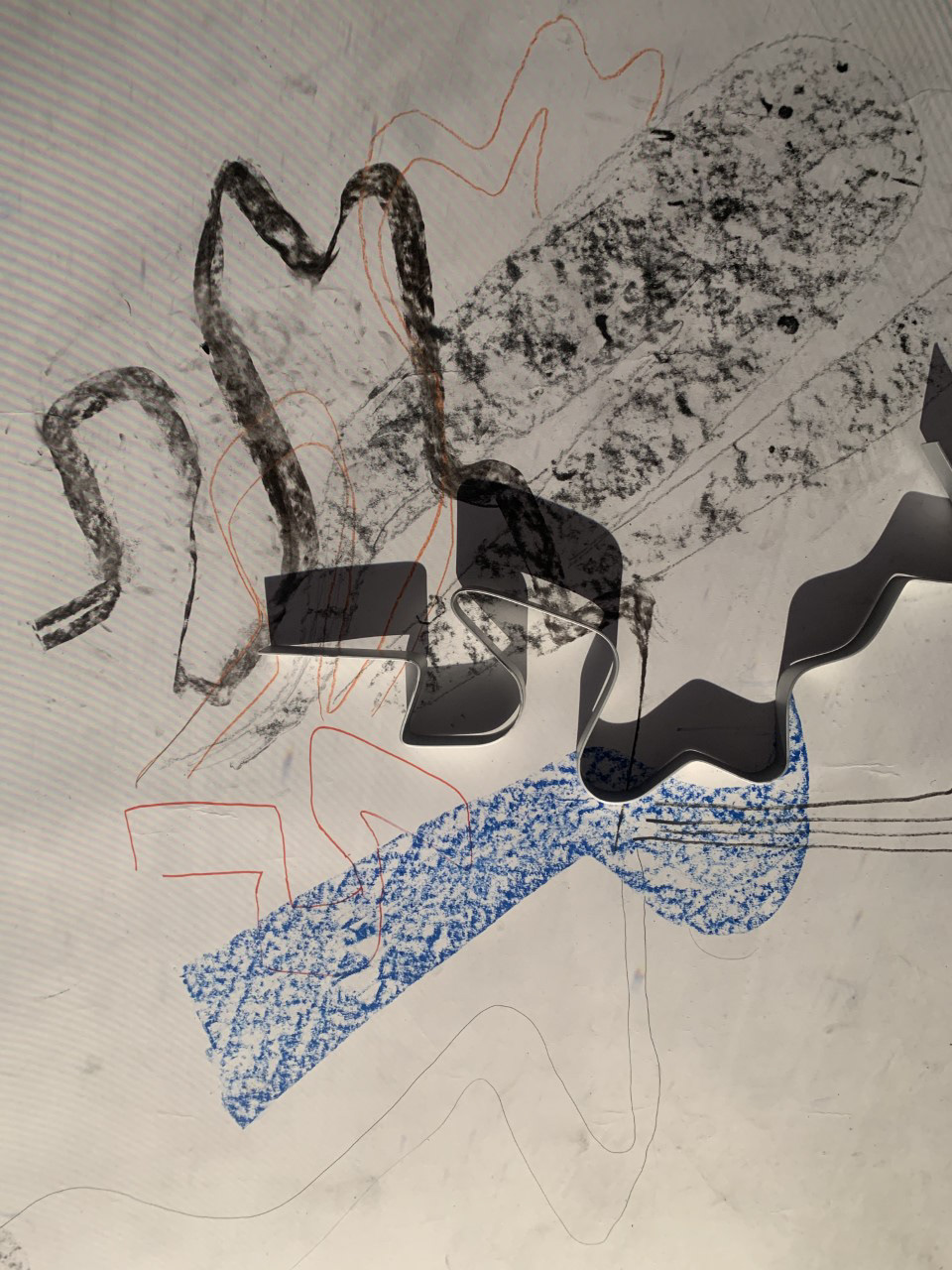
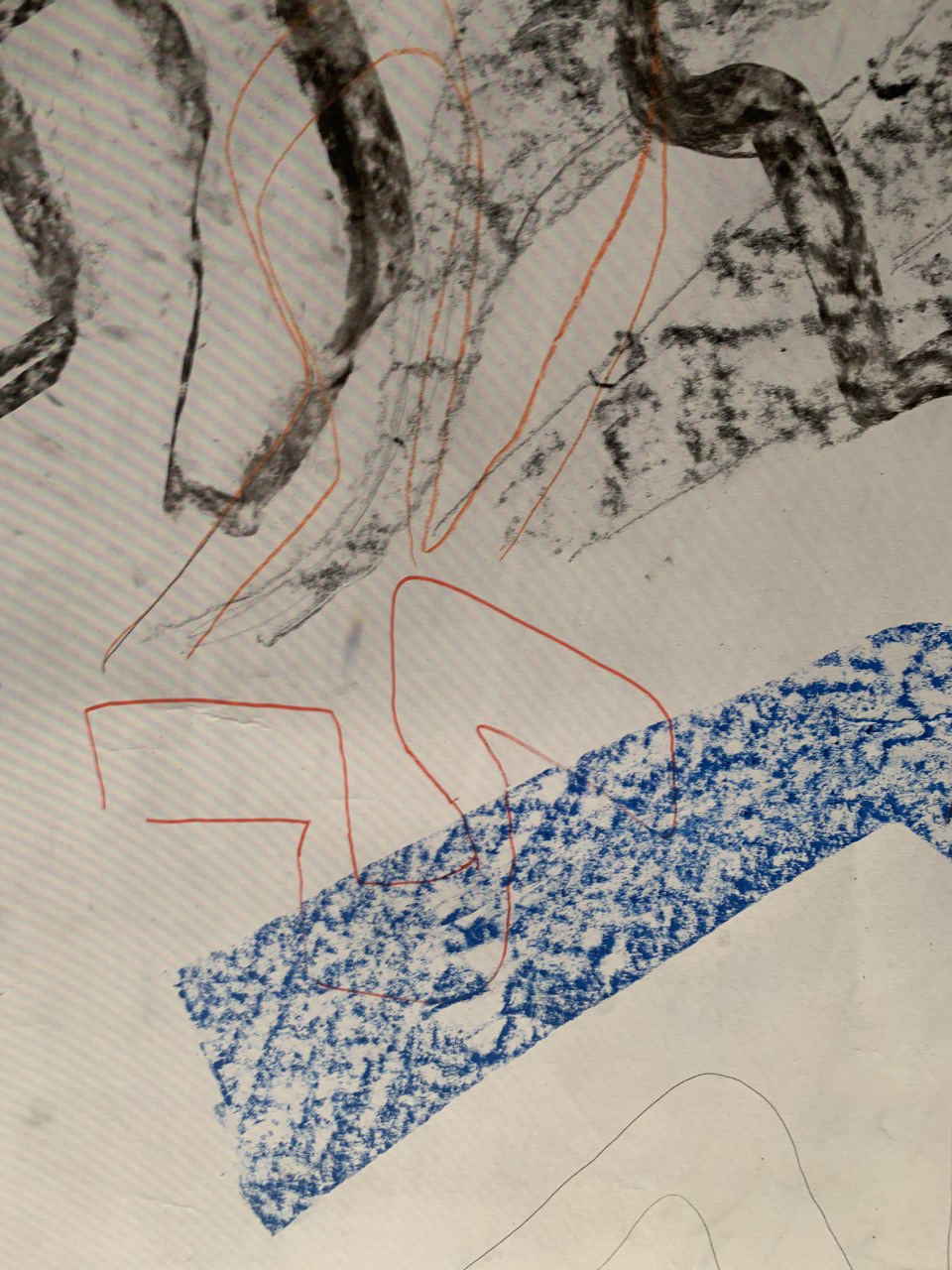
drawing and tracing the shadows with different medias, for this I used charcoal, pen, felt-tip, coloured pencil, and led. this was a really fun activity drawing about the shadows and changing there angles overlapping and breaking the boundaries within shadows. when drawing the shadows I also found it interesting how different media's created different textures on the paper some having a very grainy textures where as some are very fine clean lines. it was also fun playing with the position of the light creating the shadows t be really tight and close top the structure however if you moved it away suddenly the shadow covered the whole floor and your having to trace its marks stretching across the floor.

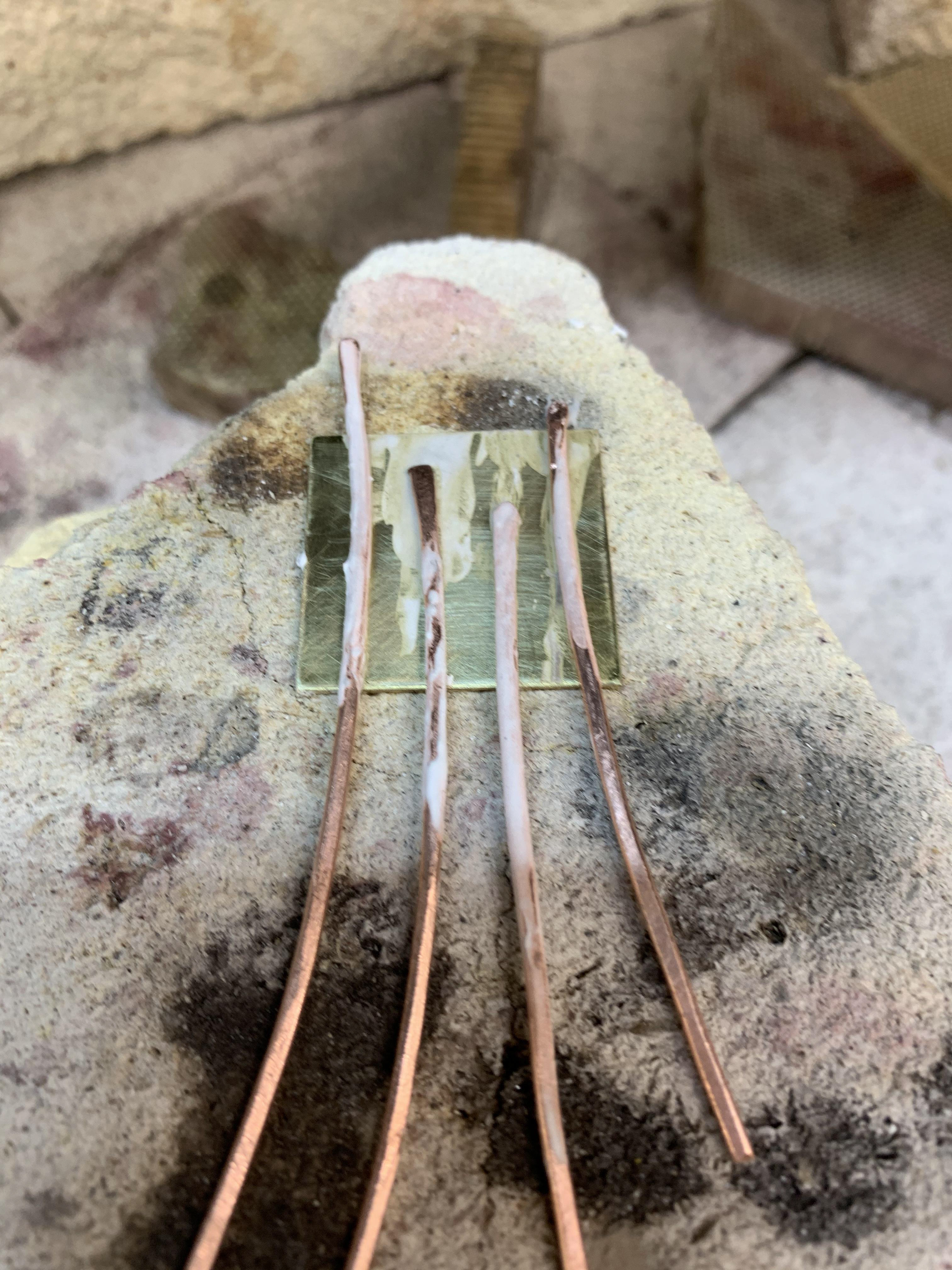

these pieces are inspired by the marking created on the floor by the shadows, the running marks created by the shadows. I created these with copper wire and flattening them with a roller, for the piece above I only rolled them with slight pressure so they had a flat surface to solder to, the once below had a lot more pressure as I wanted more thick pronounced lines. these were both done by individually soldering each wire piece to the brass metal sheet. I like the effect these samples give and think they work well as a pair with the contrasting sizes. working with both brass and copper which I wanted to run off the brass sheet I think really demonstrates the boundaries broken.
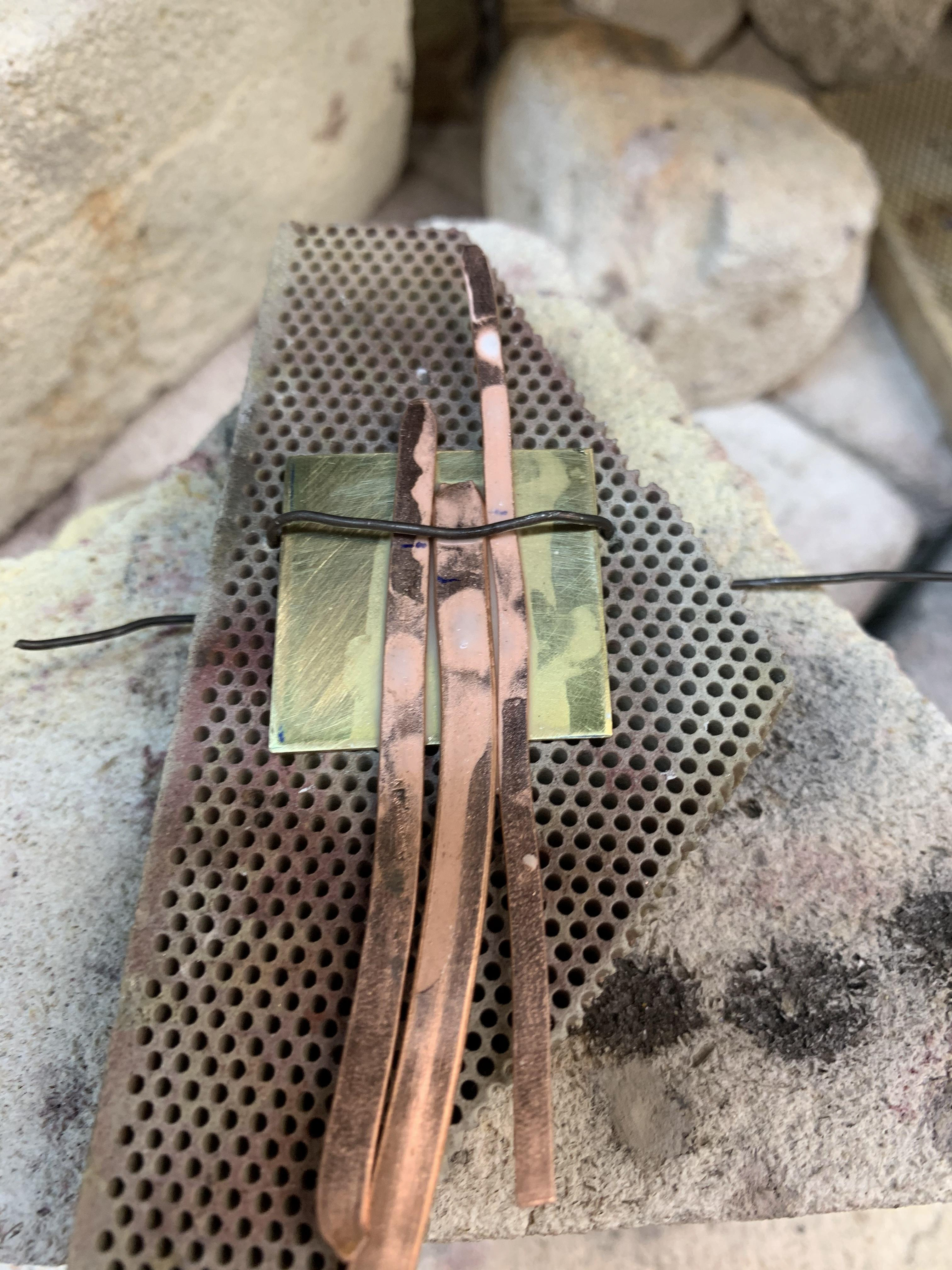
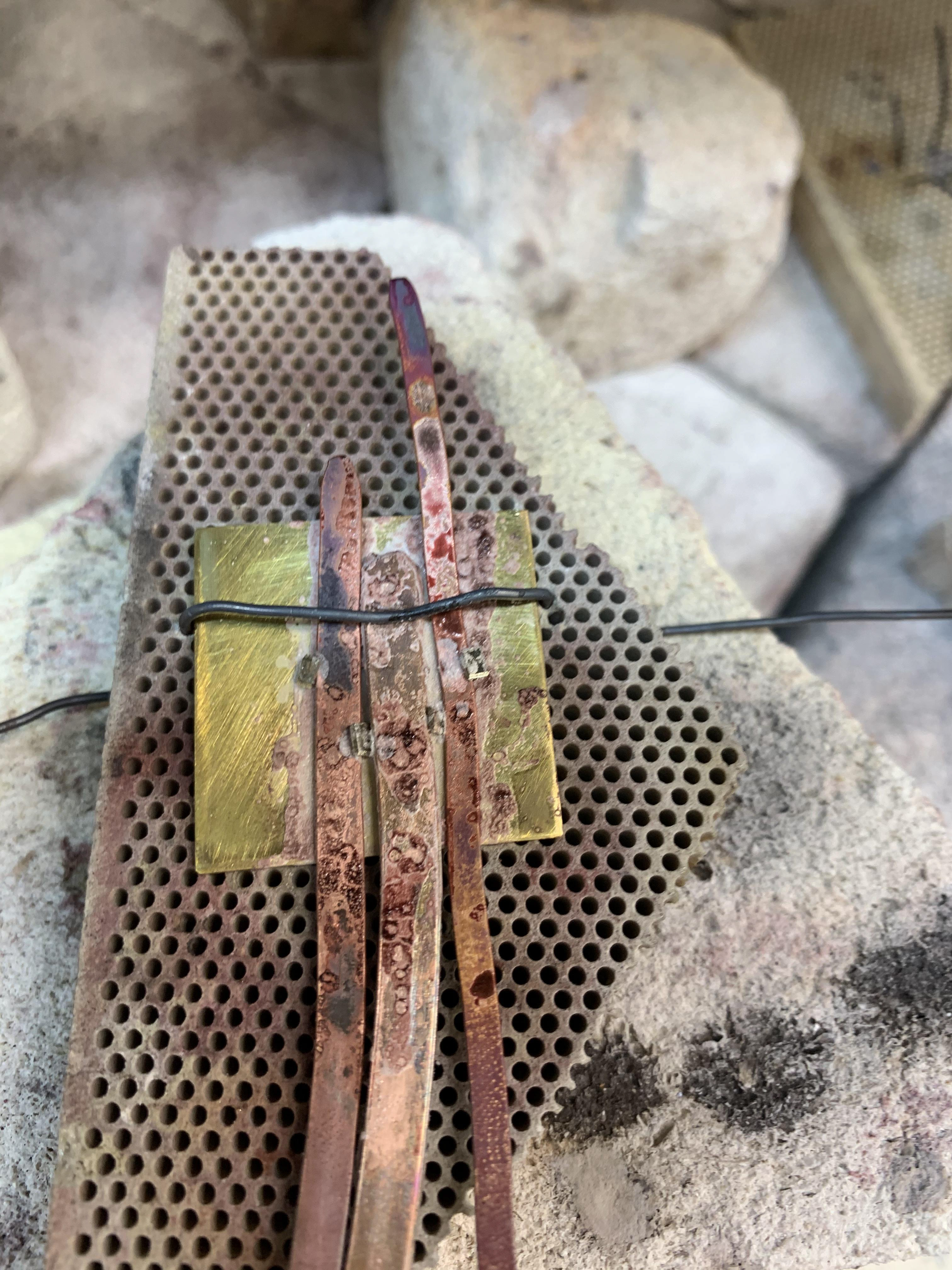
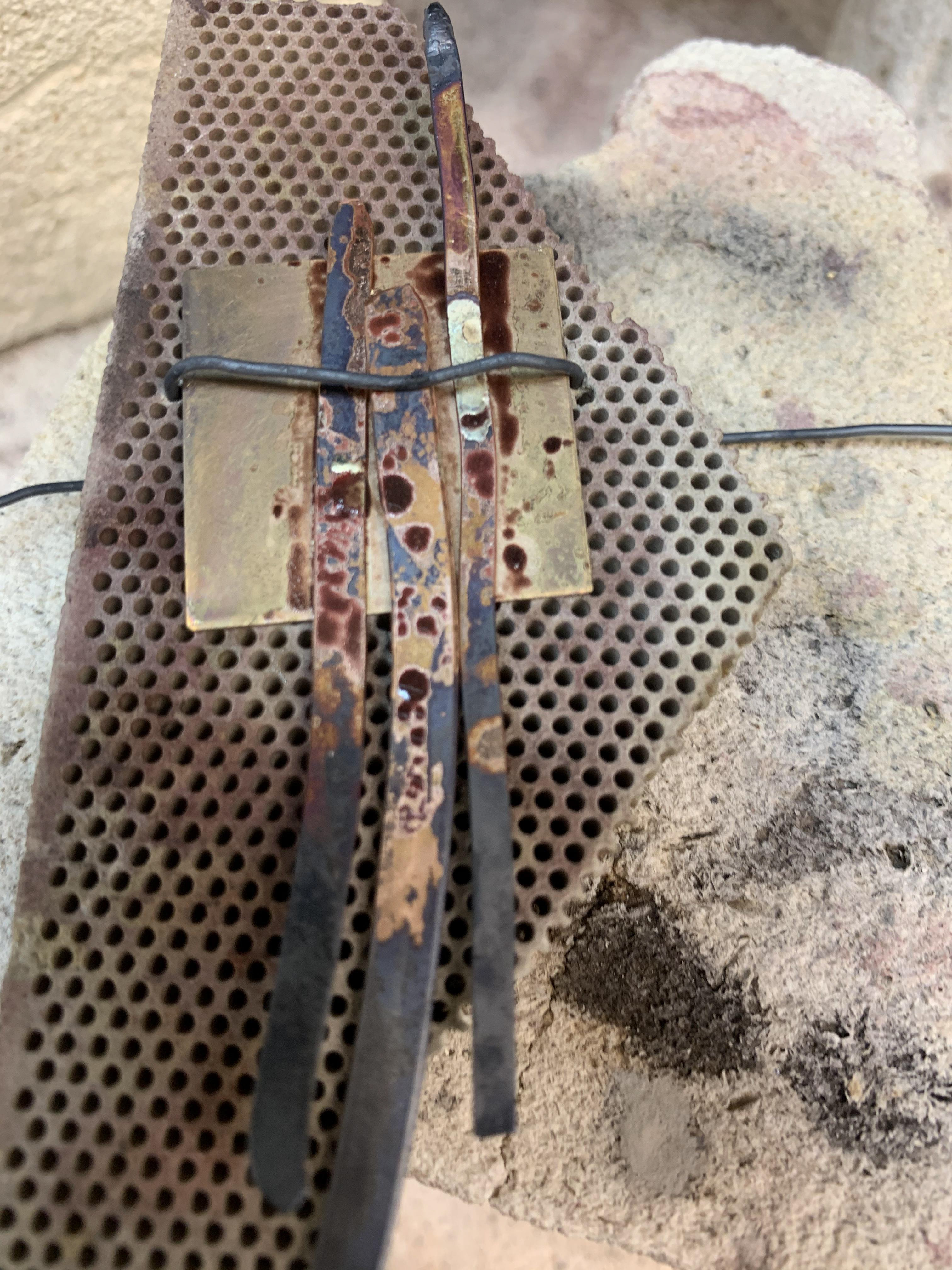
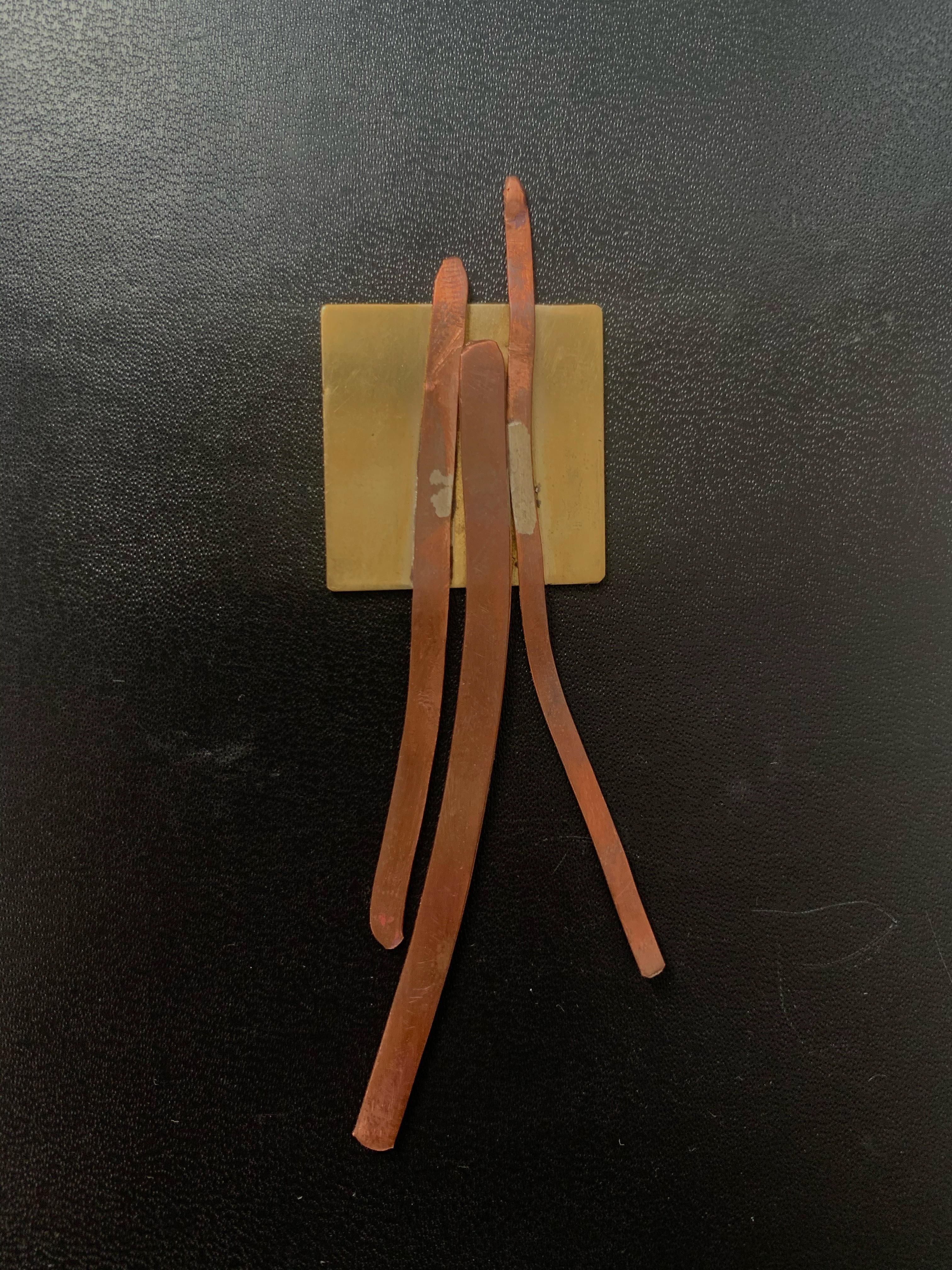

SCALE WITHIN boundaries
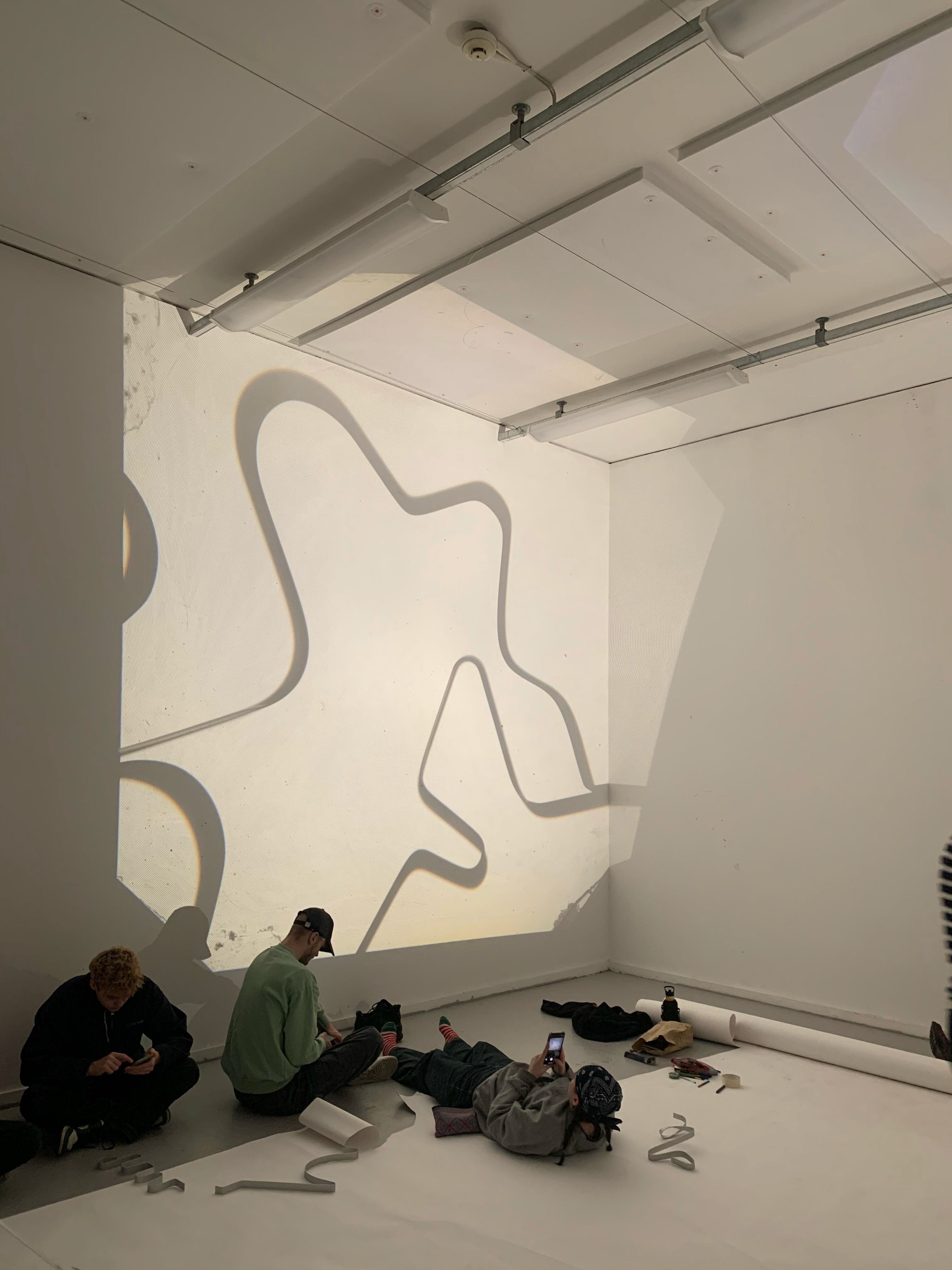
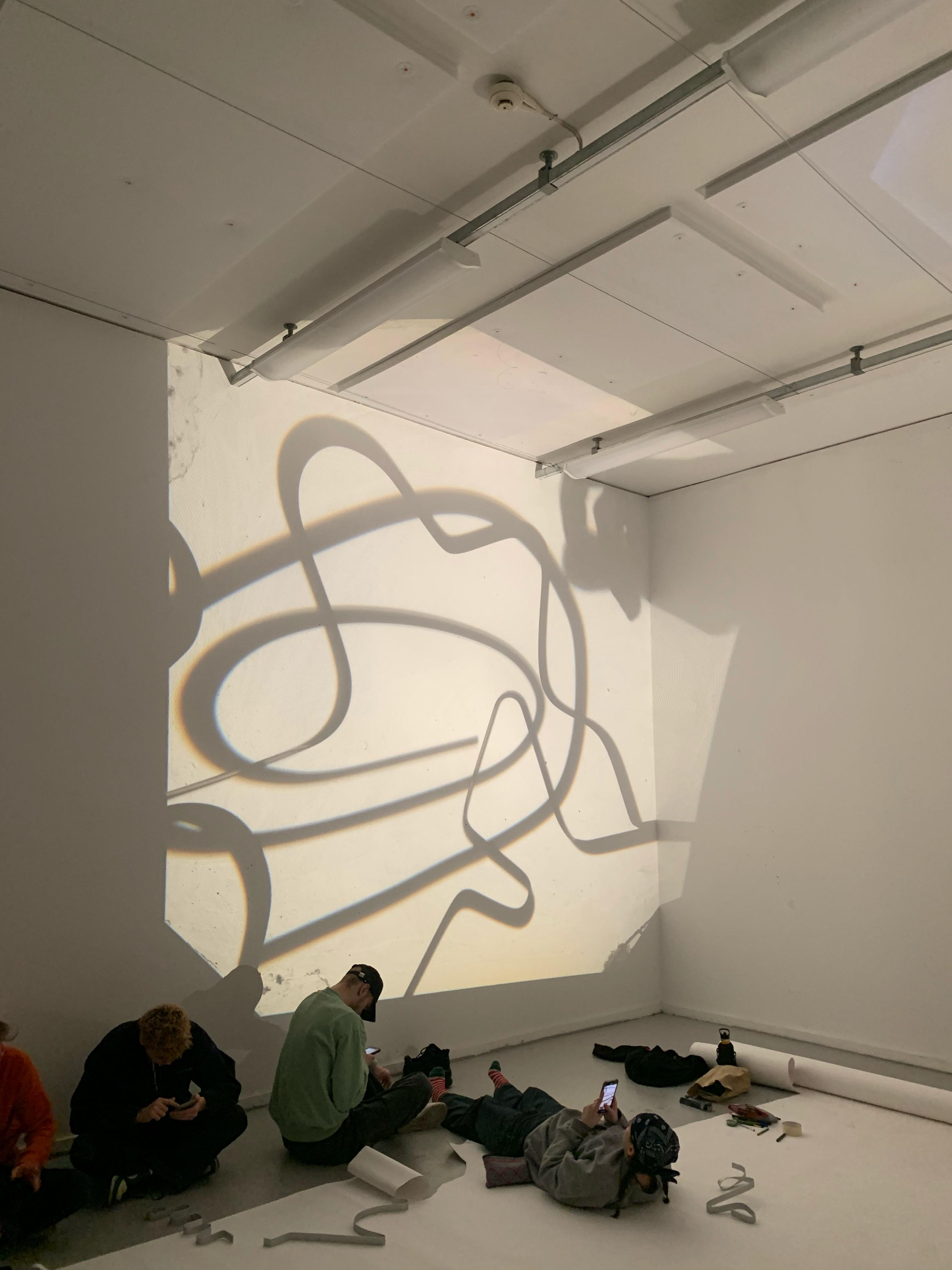
larger light facing the wall and holding our structures gave a completely different angle to see our work on a much larger scale. the theory of boundaries in scale is something this showed me having a meter metal stick translate into a 6 meter shadow breaking outside its boundaries.
we then started to explore looking into vary scales, holding some sculptors closer and some further away from the light and seeing how this scale worked. it was interesting seeing the different structures and how some dominated the room and lost focus, however with the sculptors closer to the wall they were more defined and focused on the wall.
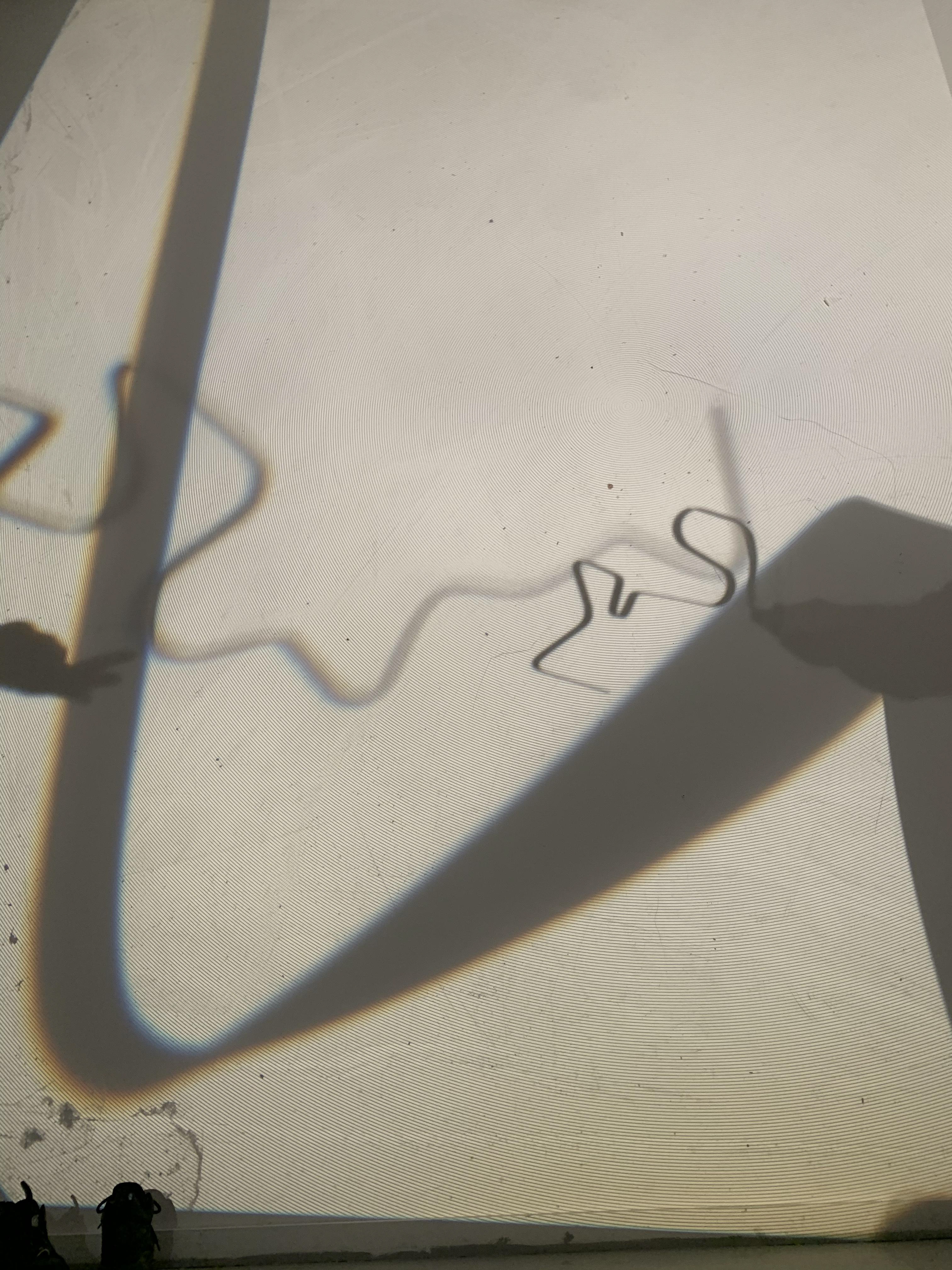

looking at the shadows growing and over taking the wall eating the blank space. i liked how the wire sculptors looked like there reaching over the corner of the two walls and how the corner distorts and changes the shadow. this was done with two sculptors y0u can see them breaking there boundaries, over lapping each other and upscaling to cover the walls.
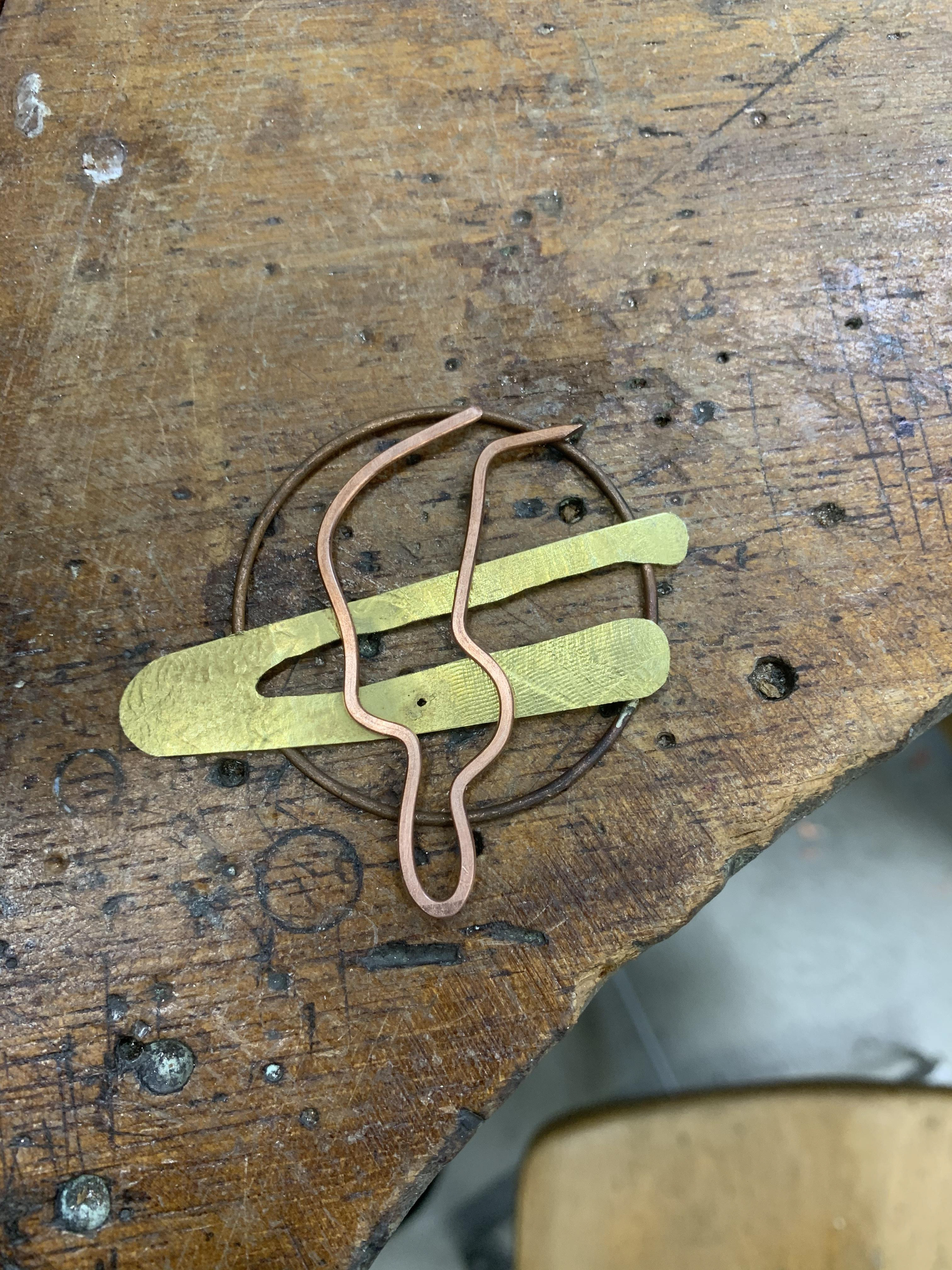

I created this piece inspired by the shadows on the wall, I wanted to explore the shadows, texture and scale that were created. starting by soldering the central circle, I intended this to be smaller than the other pieces as I wanted then to overlap the circle breaking the boundaries, alike the shadows on the wall spreading and reaching across both side of the wall. I decided to use both brass and copper, the brass was influenced by the larger scale metal sculptor the one closest to the light source showing it escalating in the background. I developed it by putting it through the roller with some tape and string this gave it a similar texture that the shadow's on the wall which were created from the wall texture and the marks on the light. I over lapped this with brass wire- this being the much finer detailed metal sculptor which was held closer to the wall. due to this its shadow was a lot more precise and smaller in scale. following the simple pattern's from the shadows this was a really fun piece to create, I soldered each piece on which taught me lot about the process as this wasn't my most confident skill however with practise I was really impressed on how I developed and improved my soldering skills making this a very clean, bold piece. I also deliberately used wire and thin metal sheet as I wanted this piece to highlight the negative space, having this empty space explores boundaries but also when taken to different locations its boundaries change every time which I think is an interesting exploration.
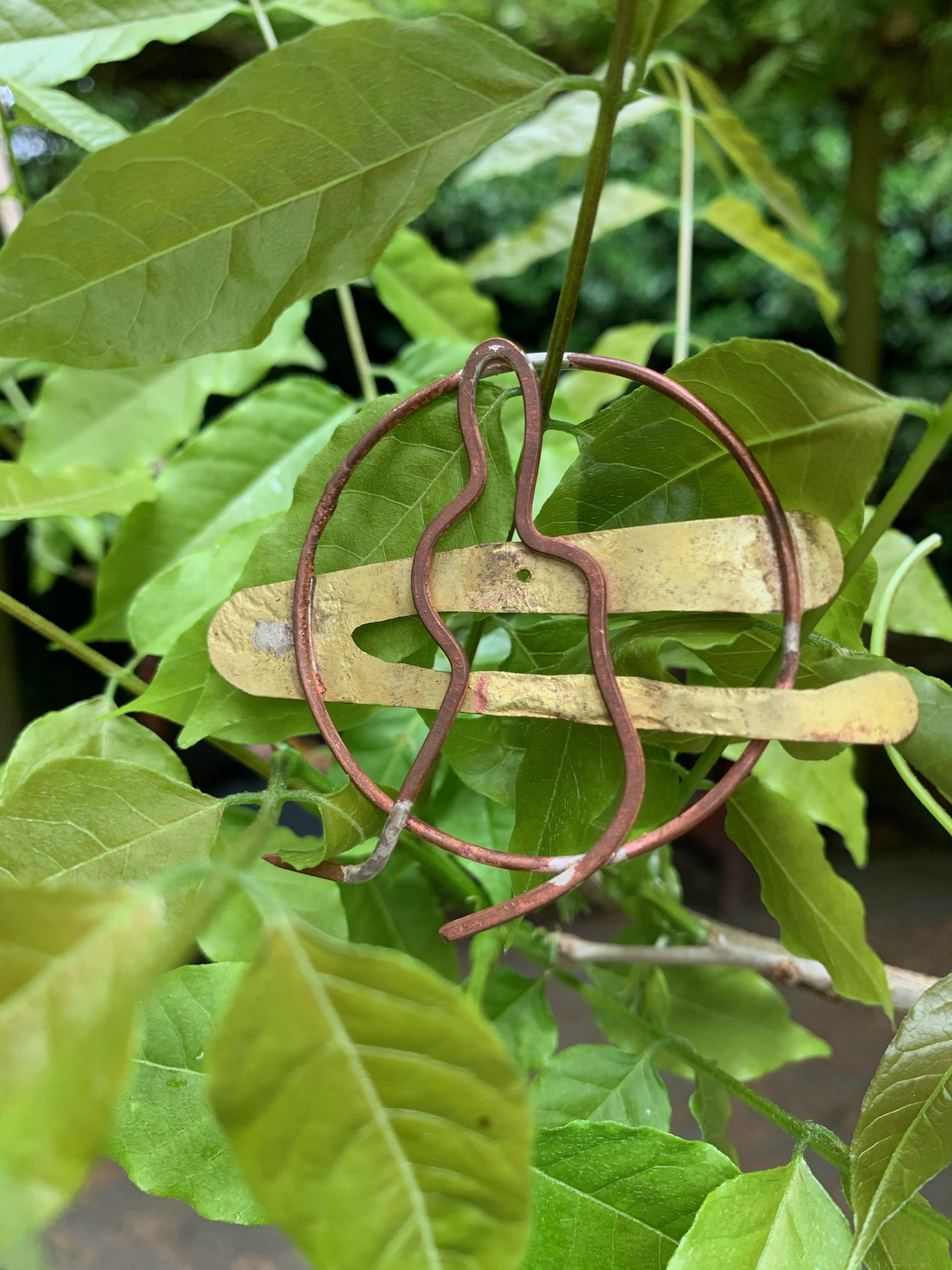
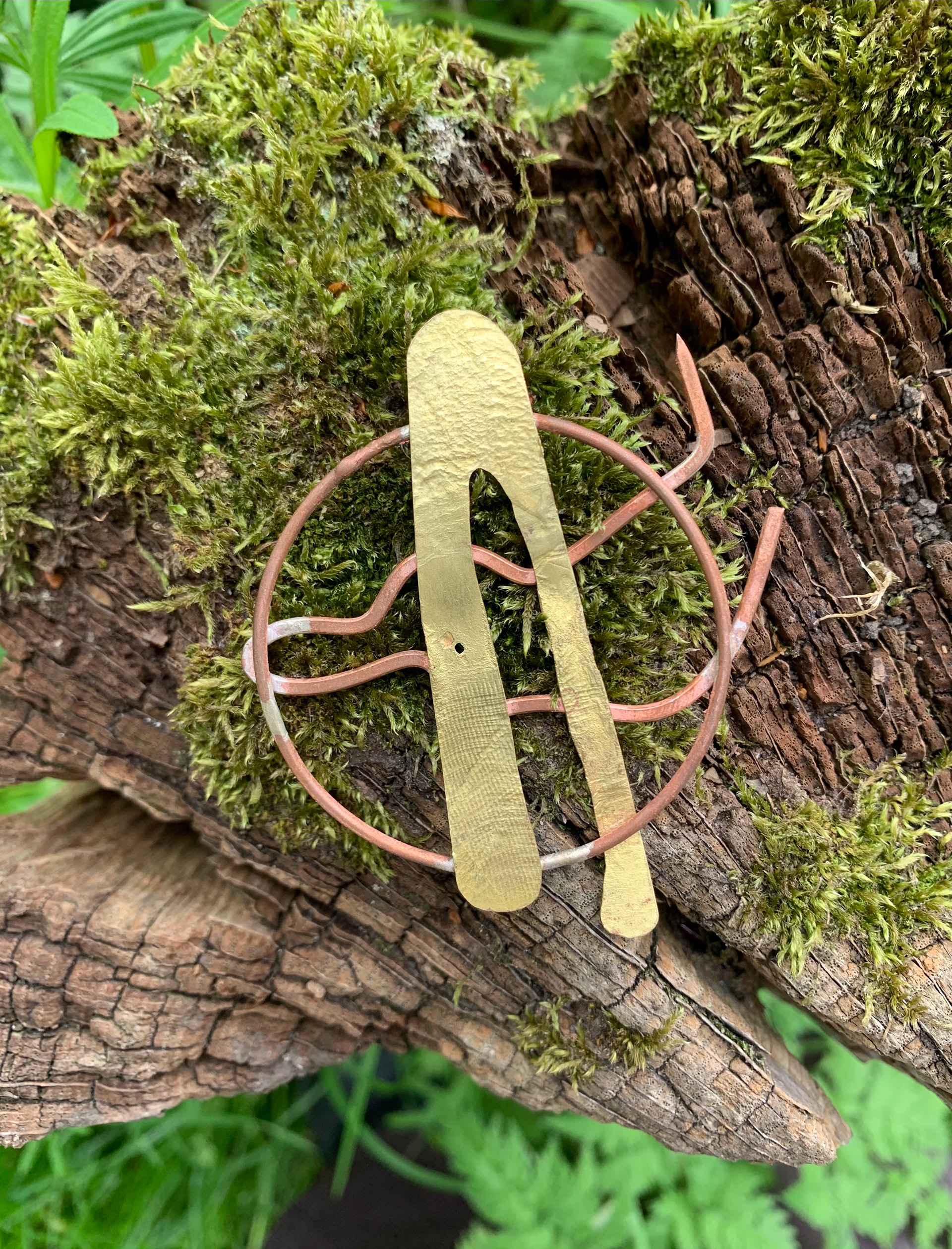
MOTOKO FURUHASHI
street brooch -Steel, road segment, sterling silver
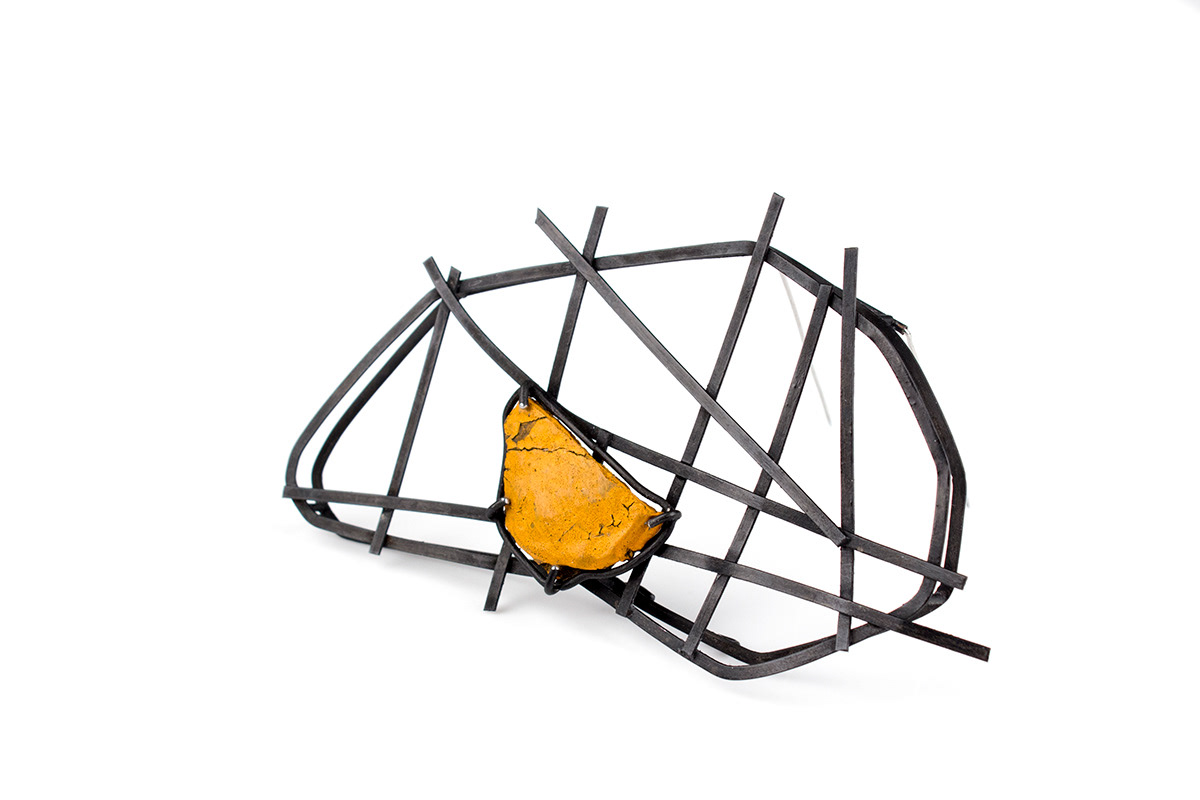


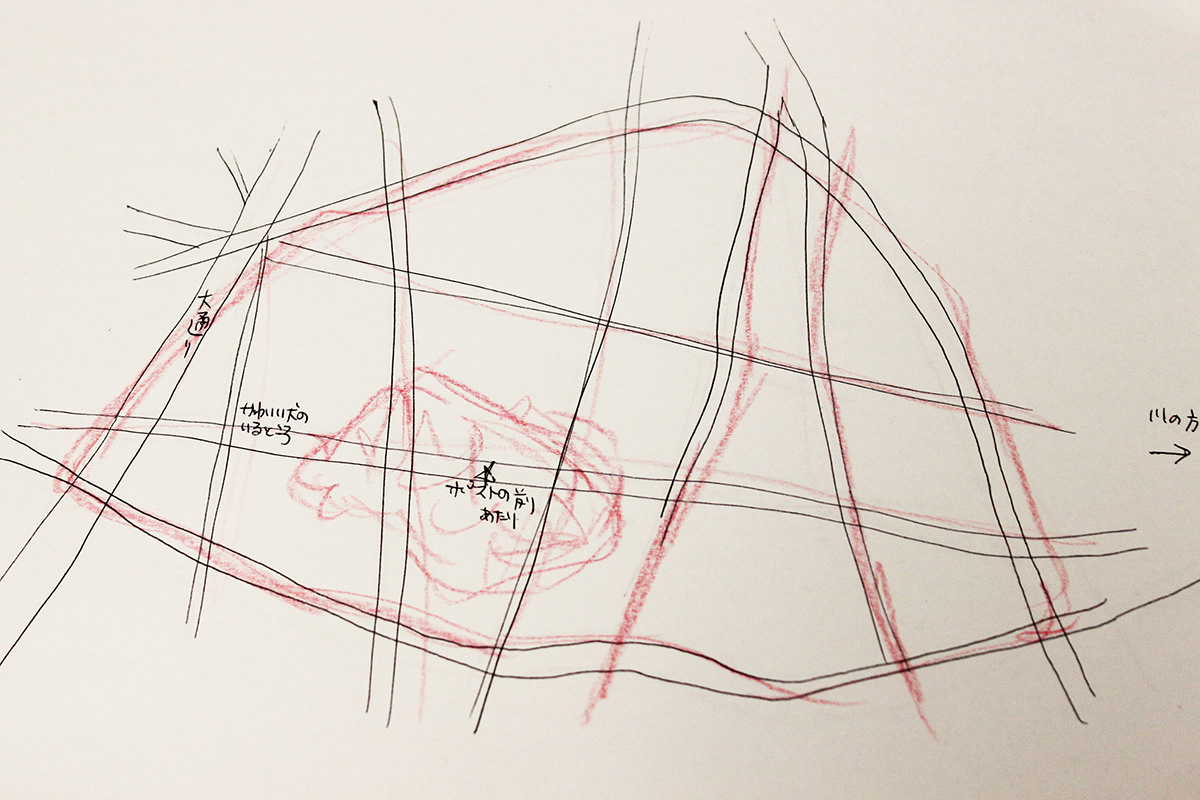
Motoko Furuhashi is fascinated by the natural cycle and the complexity of the processes that govern life between one place and the next. Relevant to the site from which materials have been excavated, each object is a representation of the specific correlations between time, location, perception, and importance; each carrying the history of the site captured within. Her work is distant memories embodied, and histories waiting to be told. this collection of street brooches explores streets she has come across and making a simple map of the area with steel and silver, she then adds her found object which is connected to the street to her brooch. this explores the idea of boundaries as she is taking the boundaries of the object found and translating this into metal taking the found object away from its boundary but keeping it with its street.
ANTTI LAITINEN

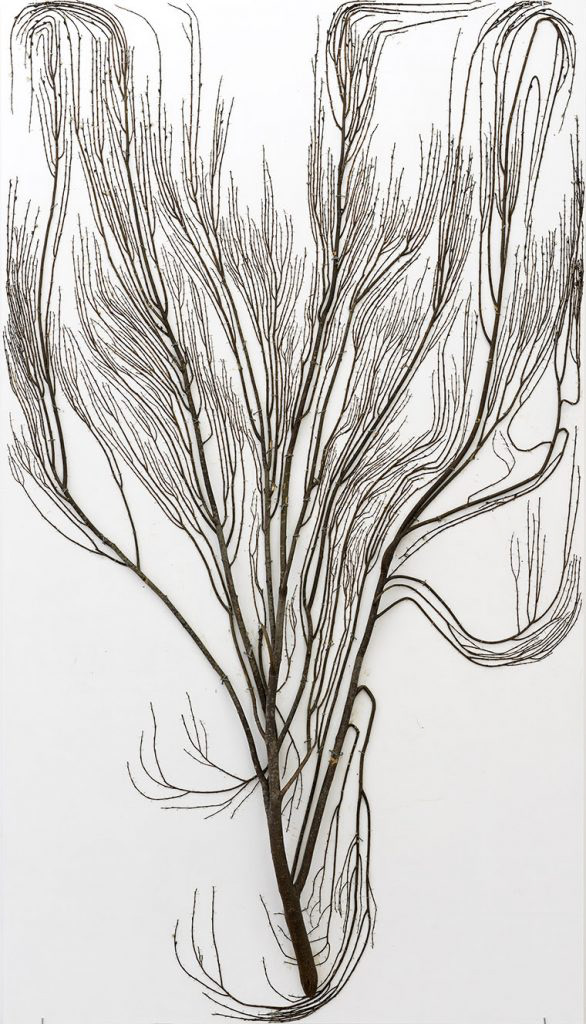
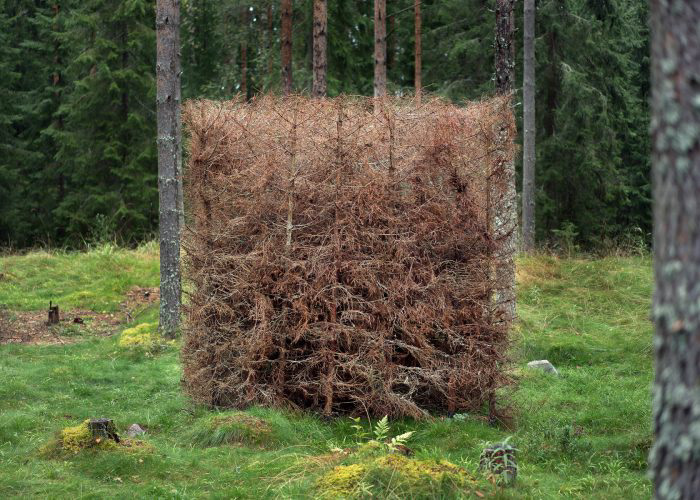
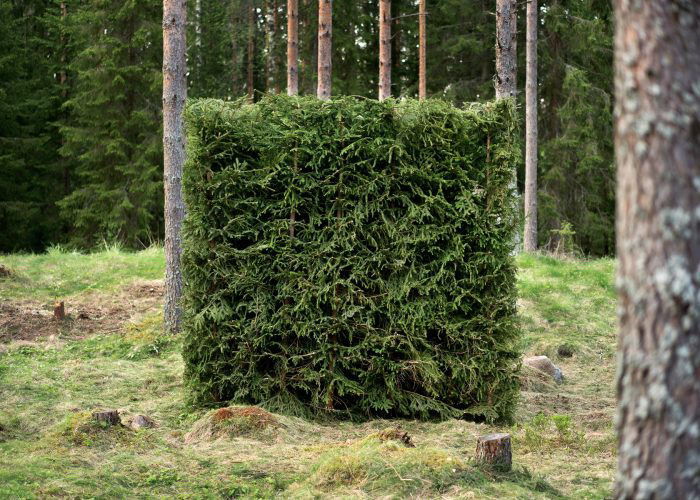
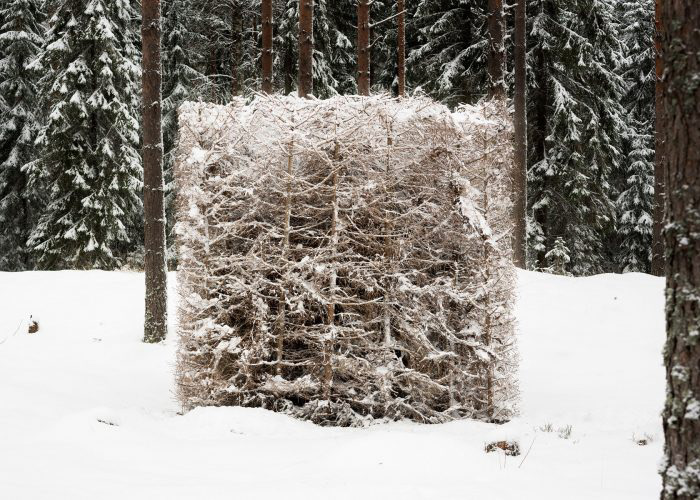
laitinen is an artist who explores with nature and man made. creating works with nature seeing how they react when man interact with them. working closely with trees and the forest, in a series of three photographs, Laitinen made a cube in a forest, photographing it in spring, autumn and winter. The disciplined cube remains unchanged from one photograph to another, although the branches inside it turn yellow and decay, and snow falls on the ground. In the wooden reliefs of the 2D Trees series, Laitinen nailed and stapled willows and hawthorn bushes on plywood. The supple branches fill the rectangular form completely, with only the stumps of the trunks emerging from the surface. creating a boxed boundary for the tree his work pushes the ideas of boundaries and makes the audience question what his work intends to show.
collaboration with India
Manchester School of Art Department and ARCH Academy our two projects we have collaborated with, in Manchester our project : Improvised Boundaries and at ARCH Academy there project Kathpuli walas – The Puppet Makers. it was very educational learning form students at arch seeing how they approach there project. even though we have very different project when on zoom talking we were constantly finding similarities and finding ways for our projects to collaborate
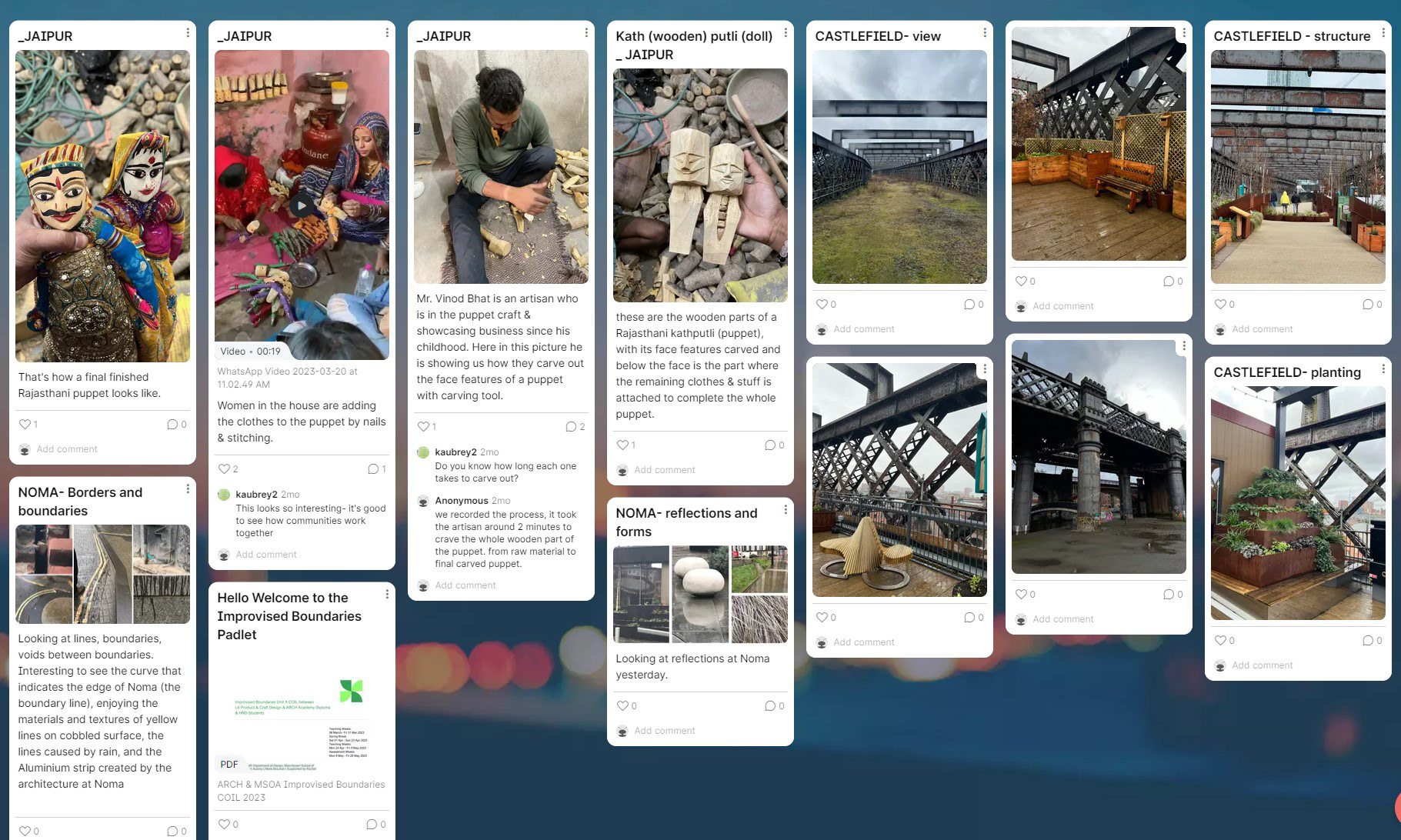
boundaries we found within the Kathpuli Walas community, boundaries for sourcing raw material – wood, cloth, dyes. Boundaries for their inspiration and source of their stories – starting from villages & folklore. Boundaries for their origin and their pattern of migration inside India Boundaries for selling their craft – performances, puppets, Craft melas. Modern day patrons and livelihood - marriages, festivals, cultural melas
a cabinet shelve in msoa showing our collaborative work with India on display for the whole uni. a poster created by an arch student, I combined this with my work of my measuring tool as I think the materials used works well with the poser. the poster showing the string of the puppets, strings to control there movements, I have strings in my work which are used for measurements. I feel like this collaboration between our work really works well together although we have different project's this show's that they can be brought together.
boundaries within my surroundings
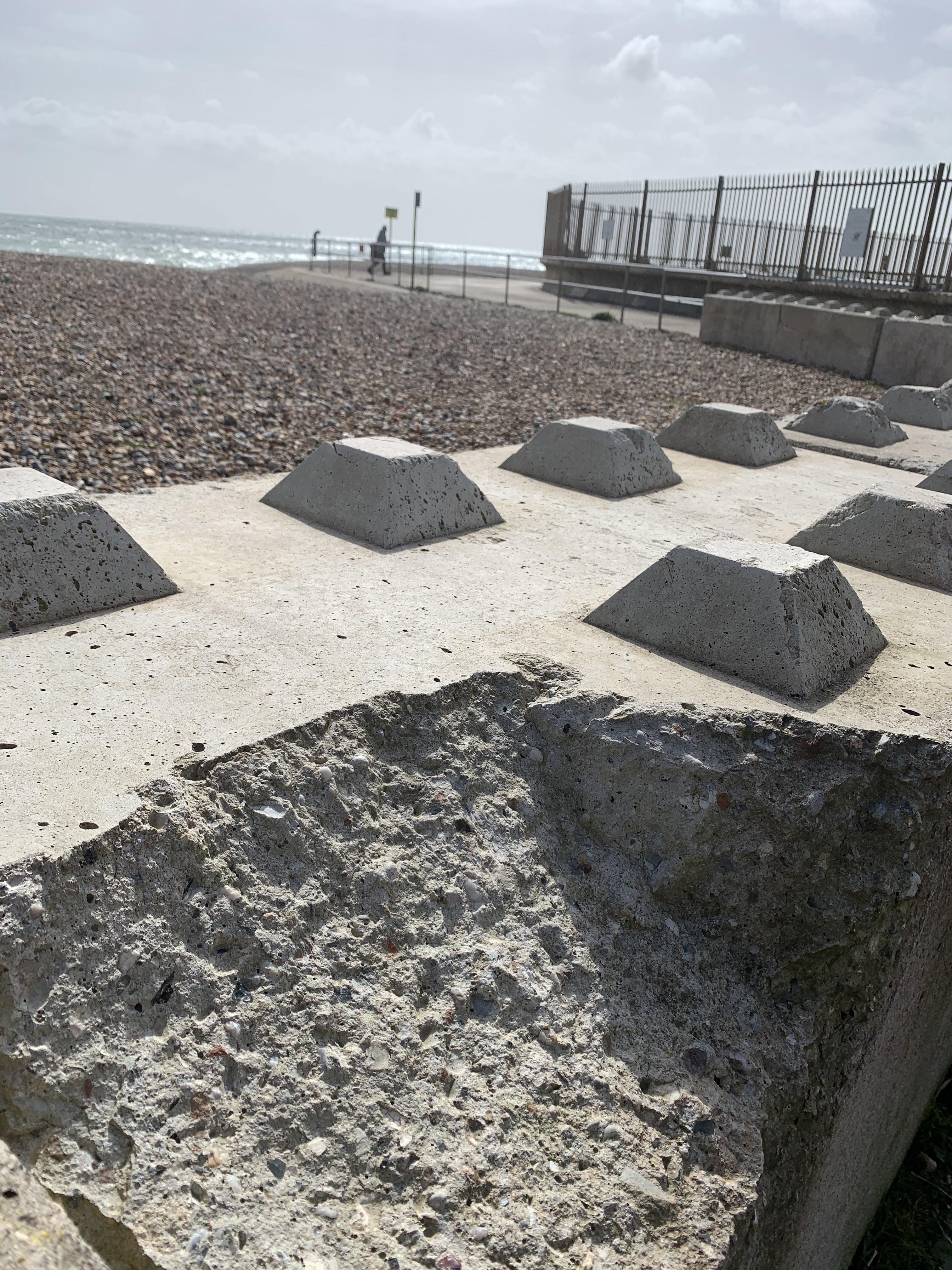
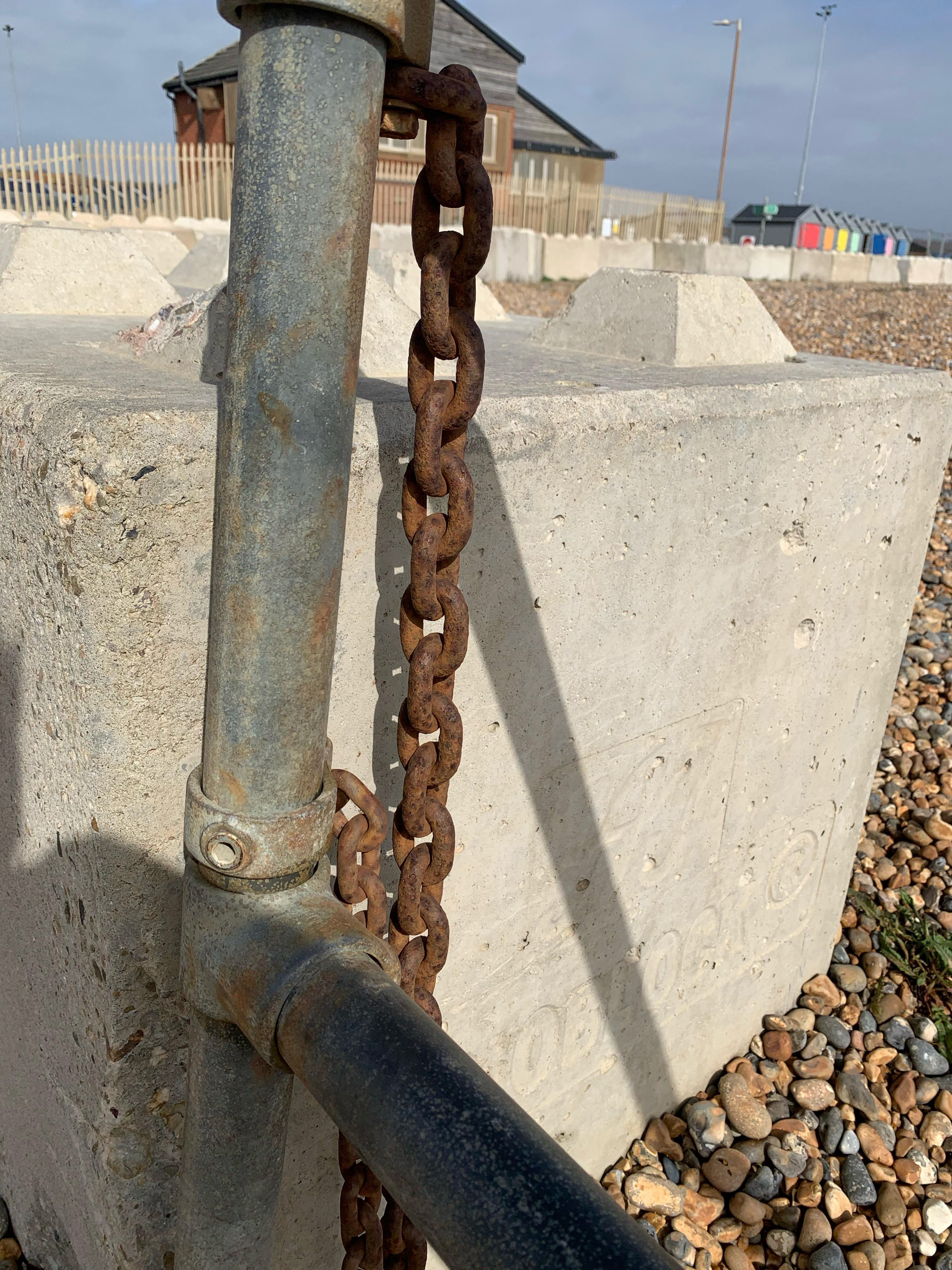
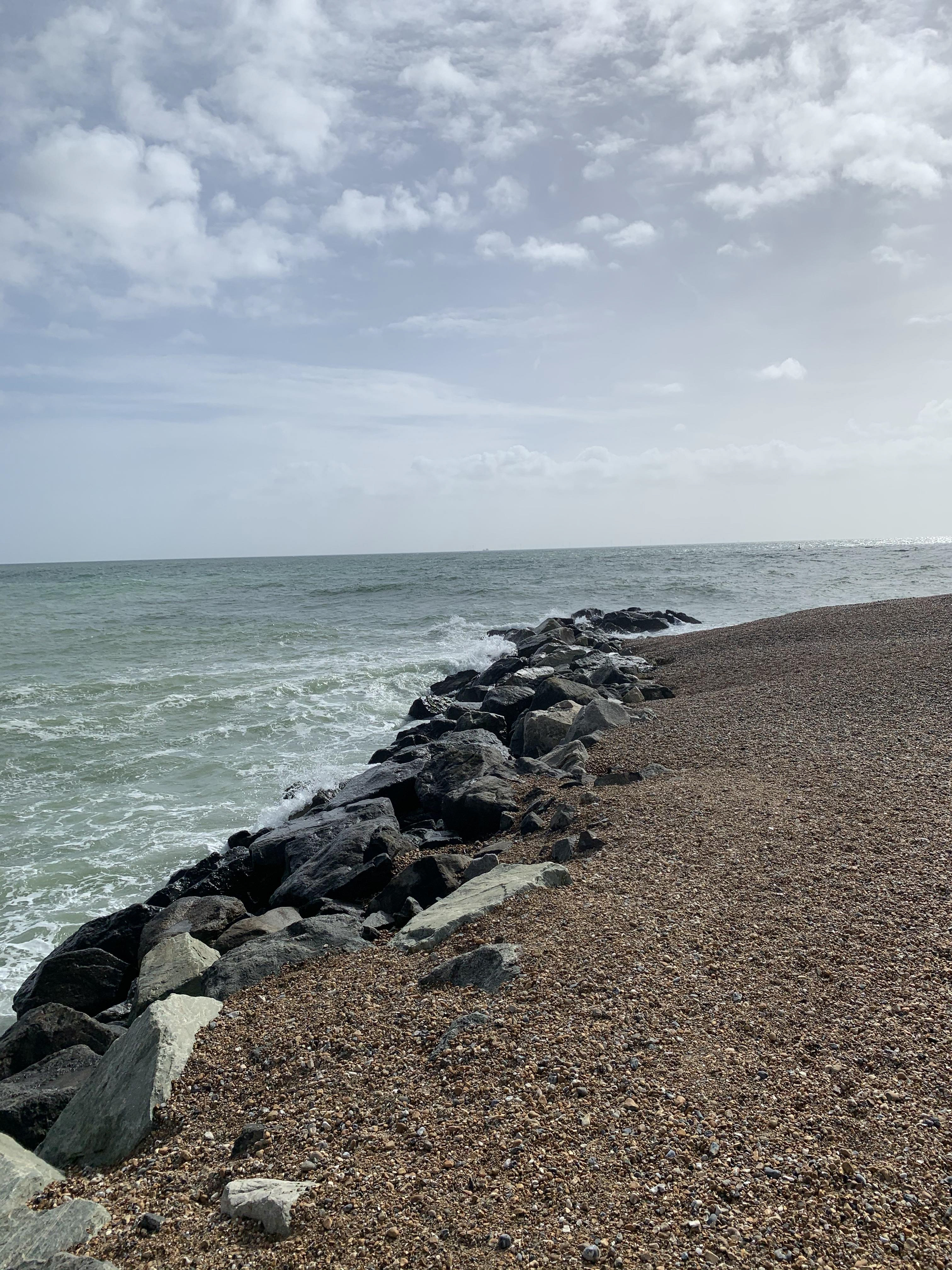
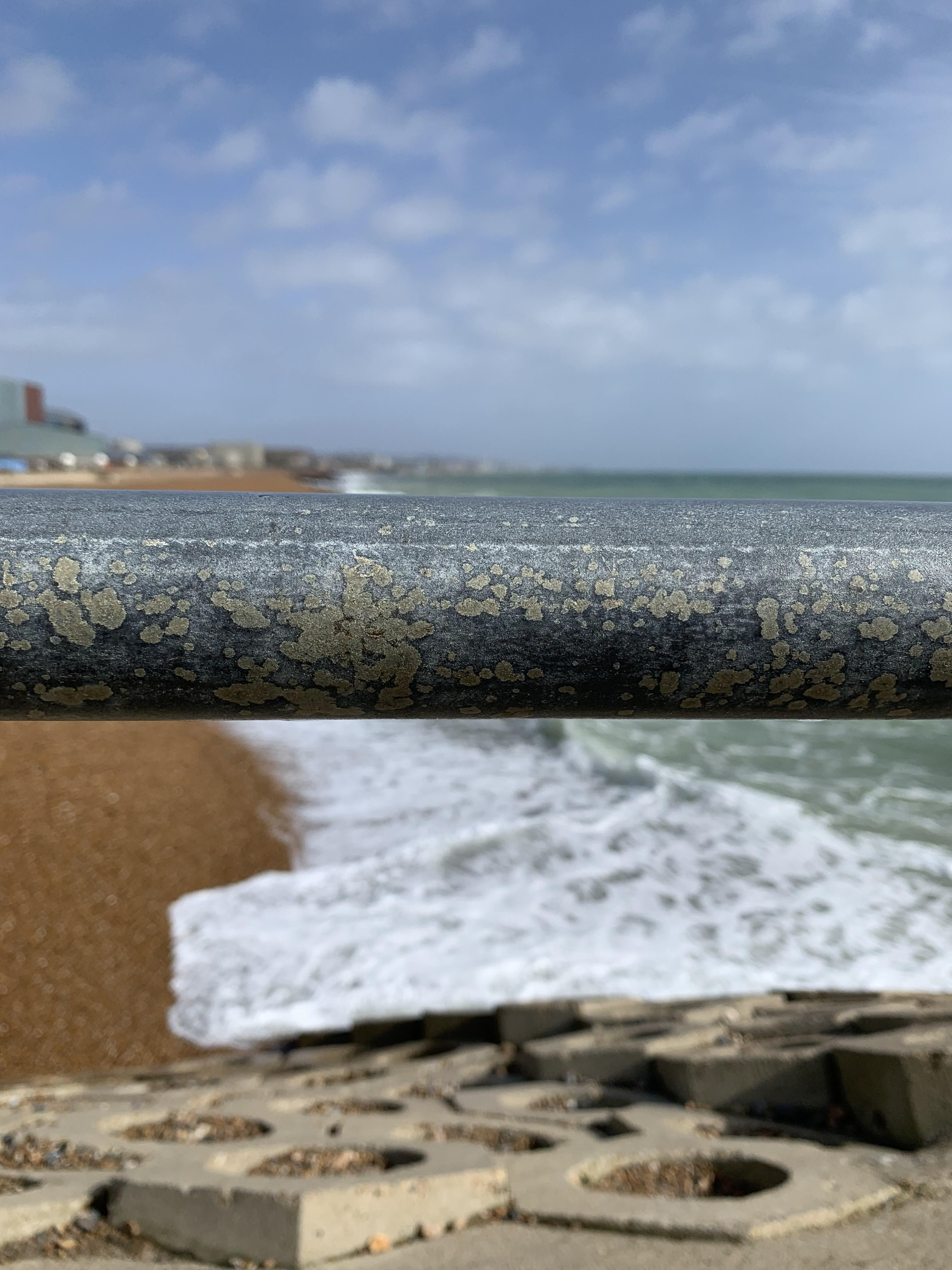
looking at boundaries in my everyday surrounding's, when visiting the beach I found many interesting boundaries which inspired my work, looking at the physical boundaries- land to sea, natural to man made, textures smooth to rough. and the non physical for me breaking the boundaries of the city getting out into fresh air and exploring the natural surrounding's.
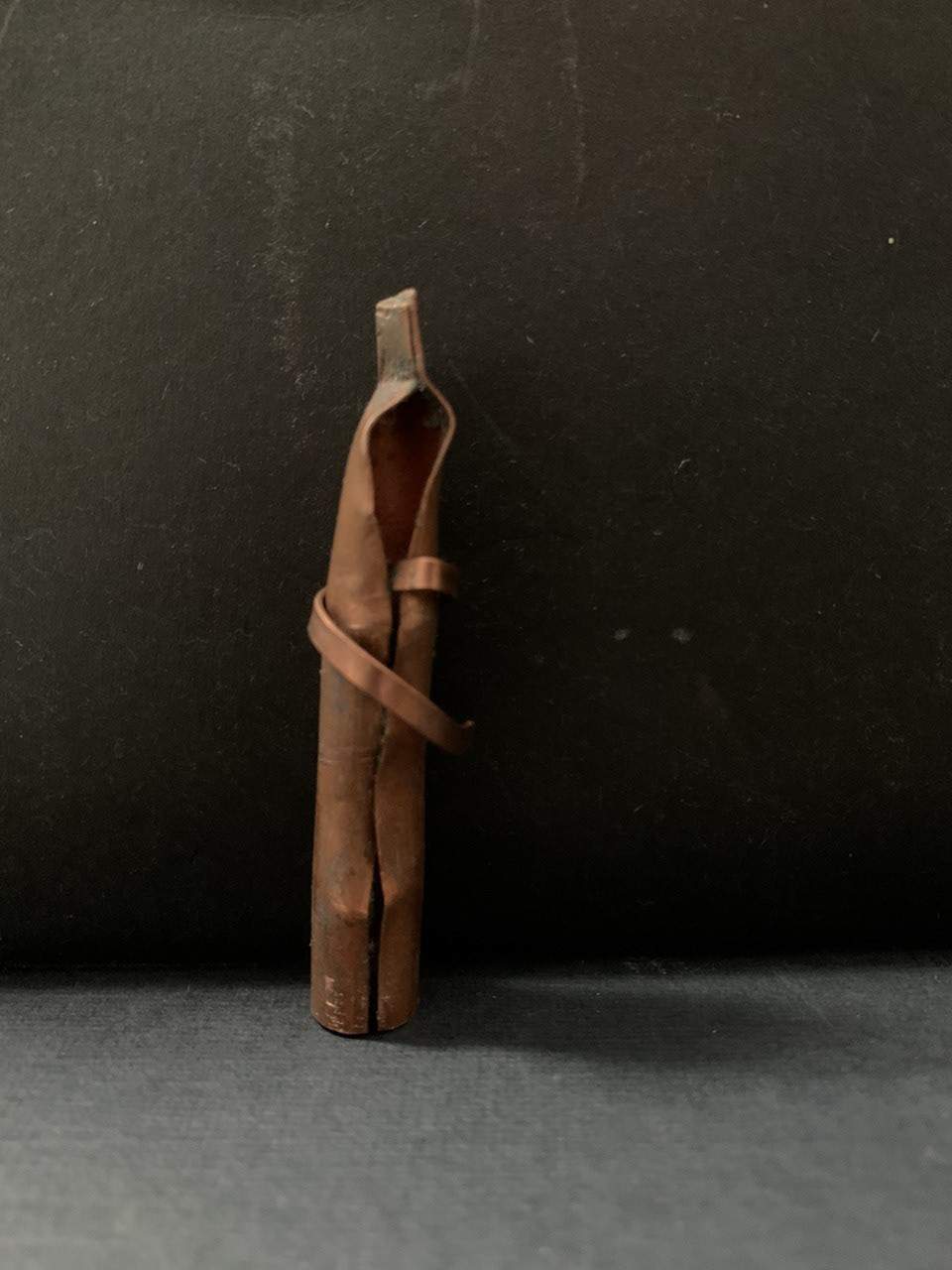
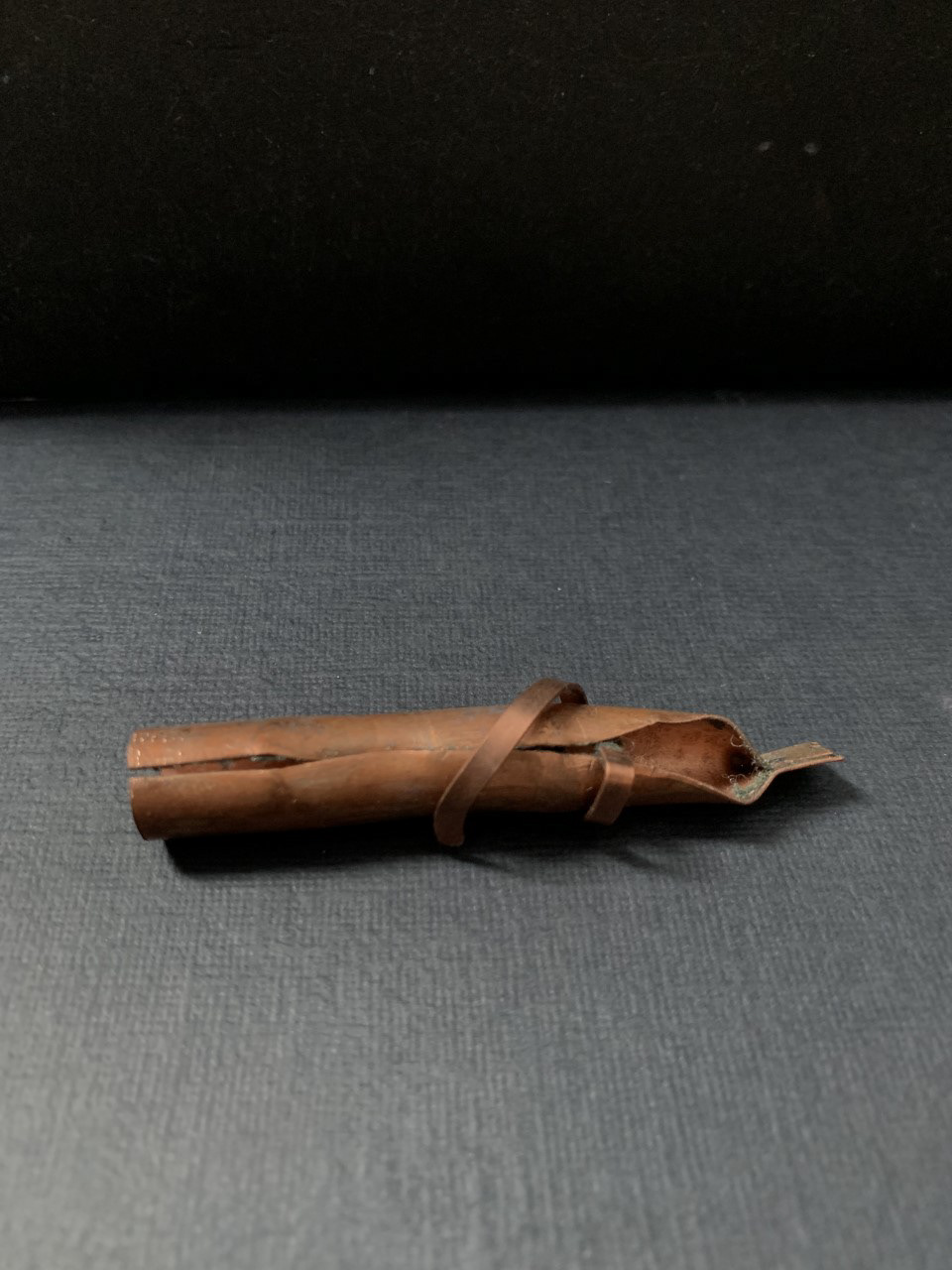
a sample looing into the breaking out of a trapped boundaries. using copper I created a copper cylinder with wire breaking and wrapping around it.
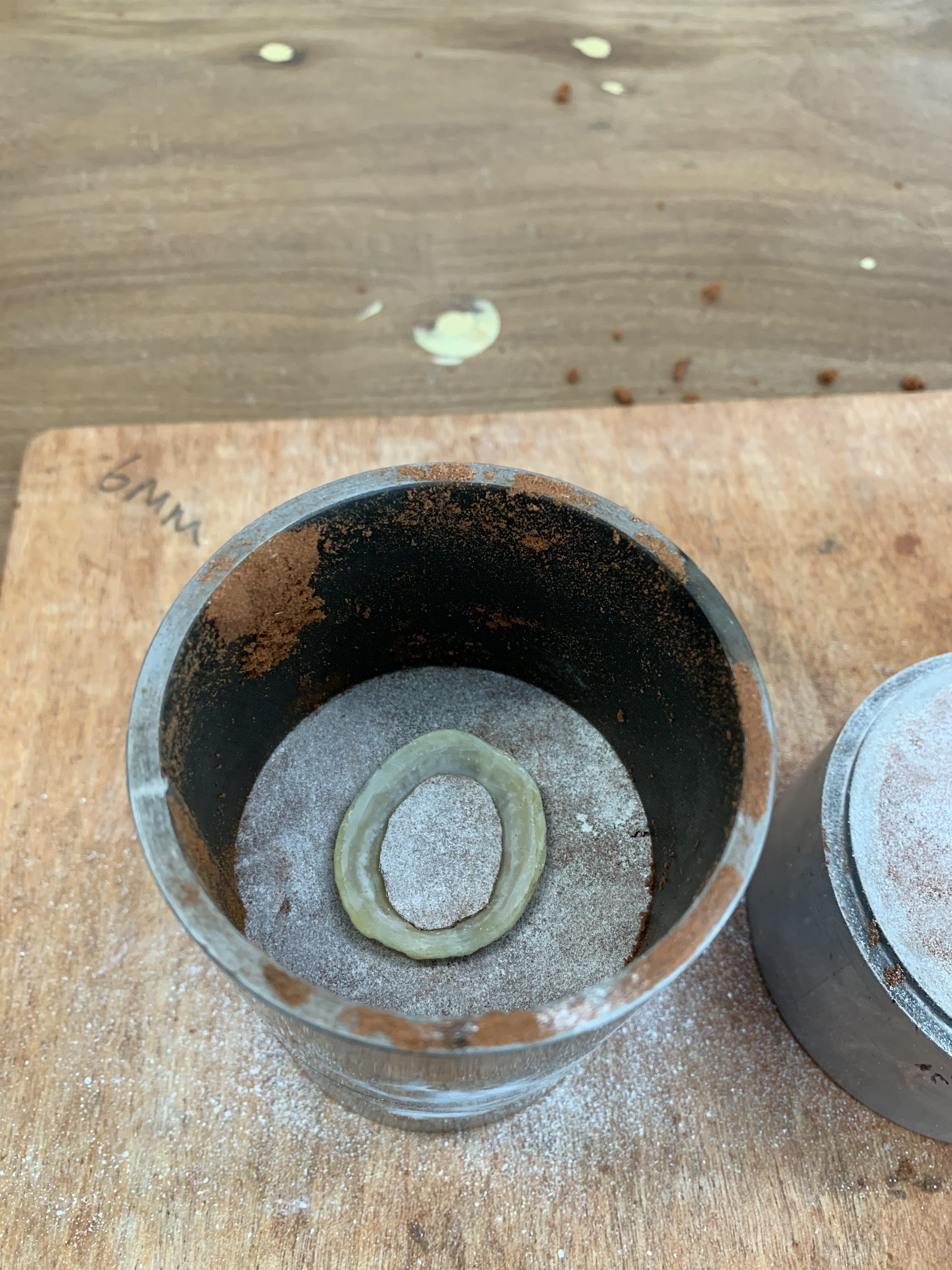
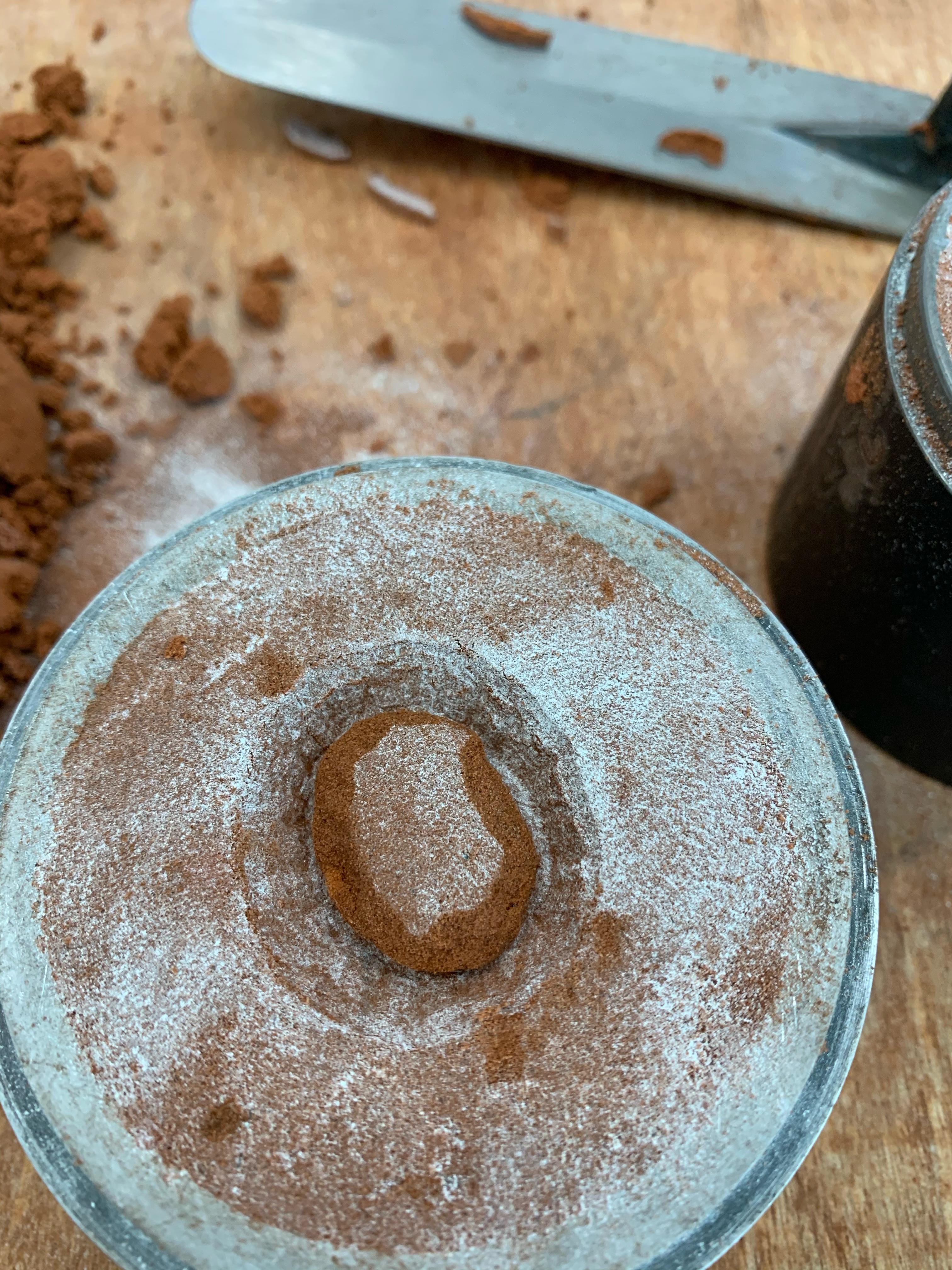
from the beach I collected some shells which I then decided to sand cast. I like the structure of the shells and though it worked well as the boundaries of the limpet shell interests me as it has an inner elevated shell, this one in particular had also decayed at the centre leaving you with the outer shell. I decided to sand cast it to pick up on this shape and texture.
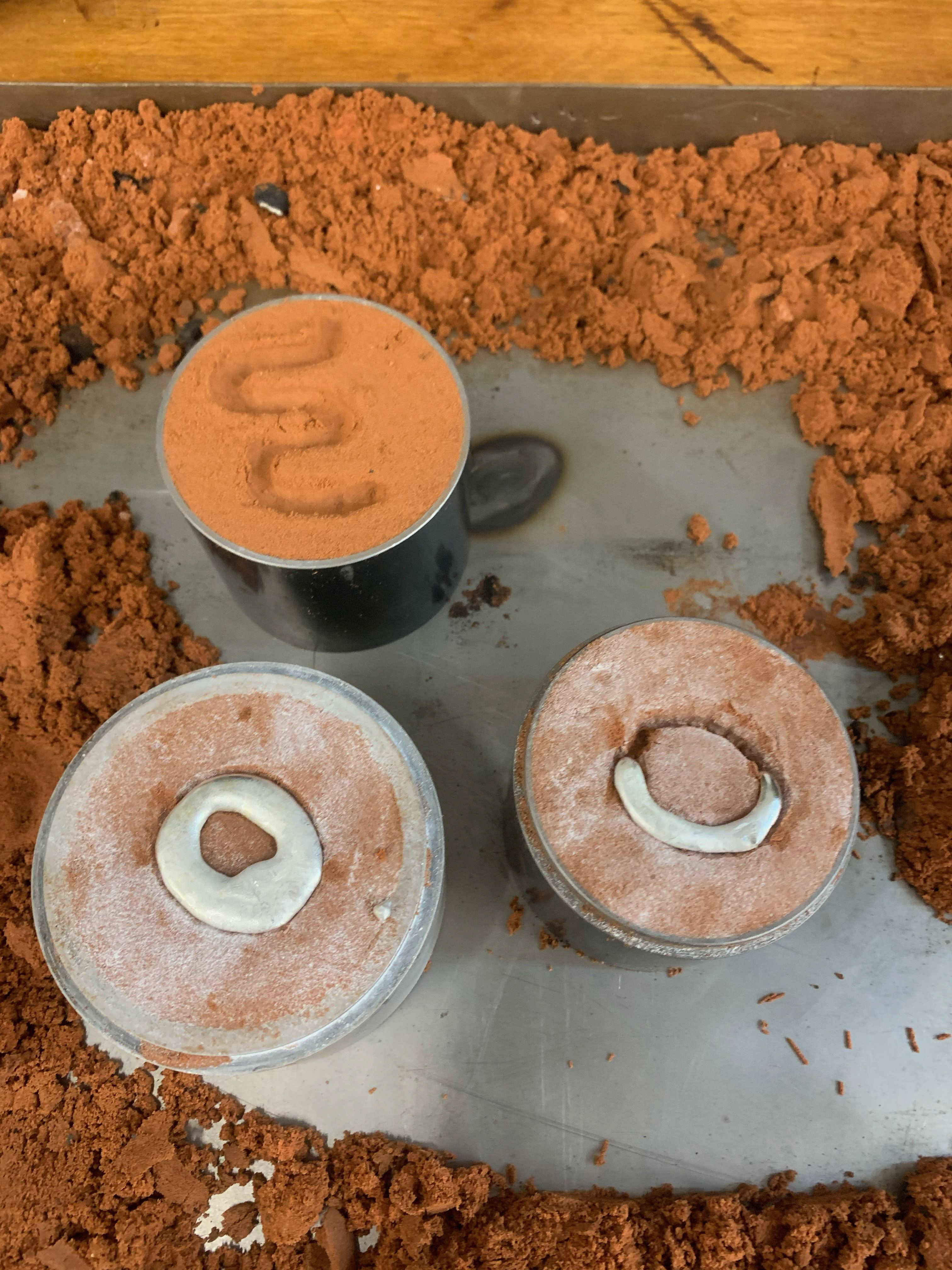
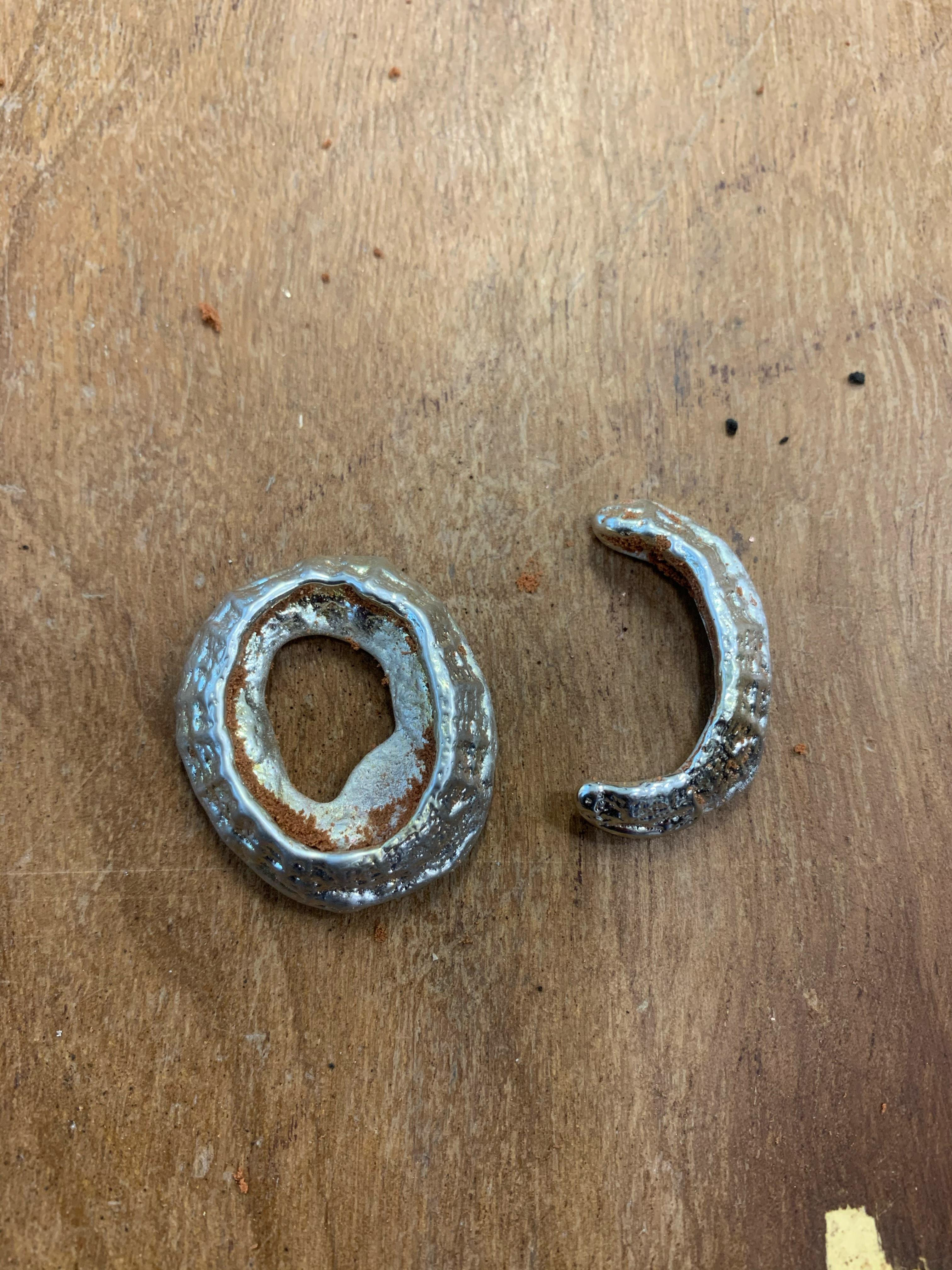
the shell was delicate and on my second casting it broke, leaving me with half a shell on my second cast.
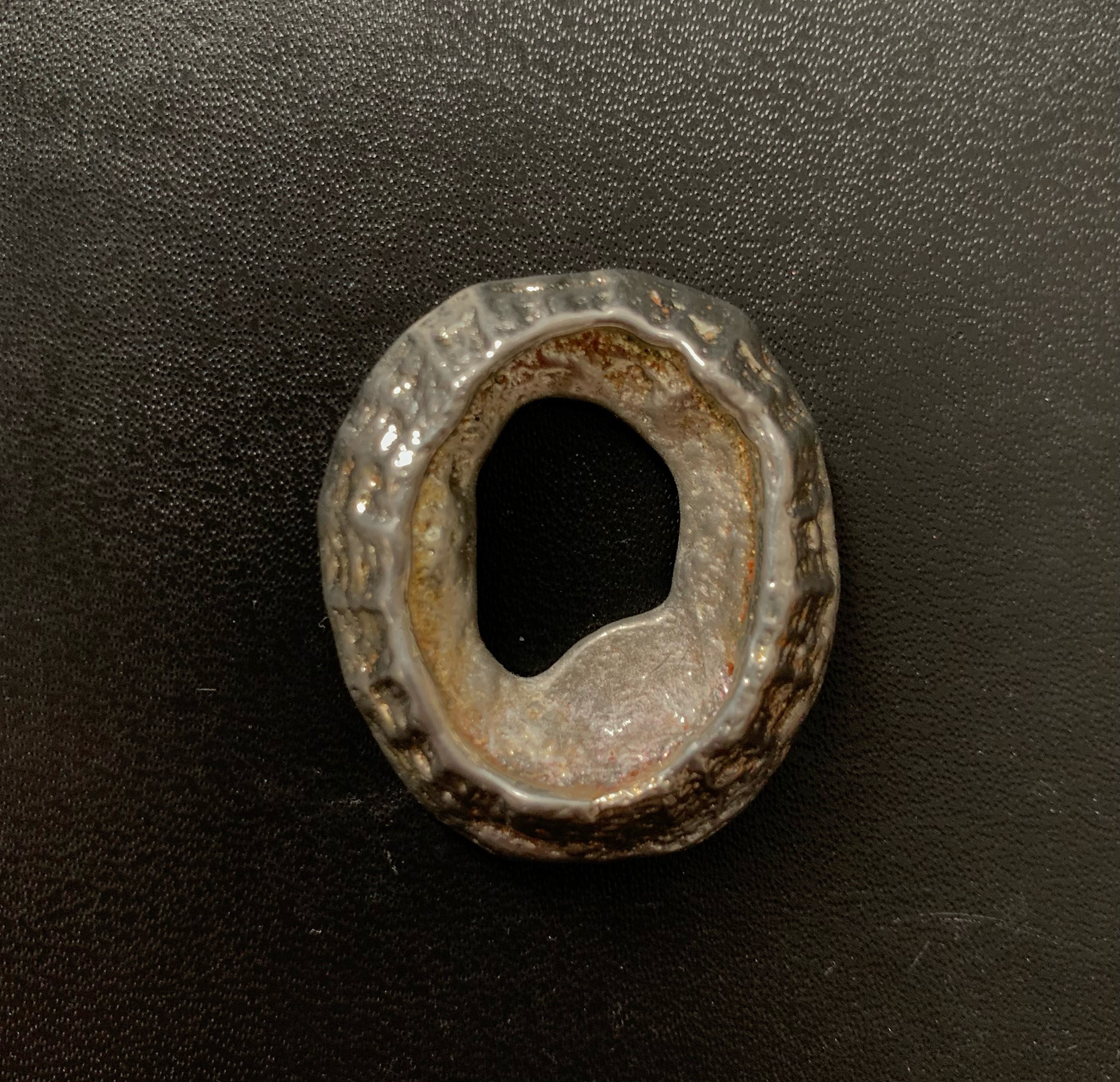

I used blue embroidery to create the pewter casting into a brooch, I really like how it doesn't have a centre to it creating a view hole through the shell. the casting also picked up really well on the texture of the shell picking up small details that it has.
with this piece I developed an idea to expose the boundaries of the shell with embroidery, using the half pewter shell I created a claw stone set with copper sheet, cutting out the middle to exaggerate the shell. I then soldered three legs standing up, this was pretty hard to complete and took a couple tries, as it was hard to get them in the standing up position and keep them there but also with the heat from the torch it made the metal weaker and they didn't lay flat with the copper base so there was a lot of empty space making it impossible to fill with solder. as a result of this the arms just proved to weak and eventually when putting the pewter shell back in to the stone set two arms fell off, I attempted to re-solder them but they just weren't strong enough to hold position and didn't allow me to do what I intended with them. so I decided to just keep the singular arm and adapt my design.

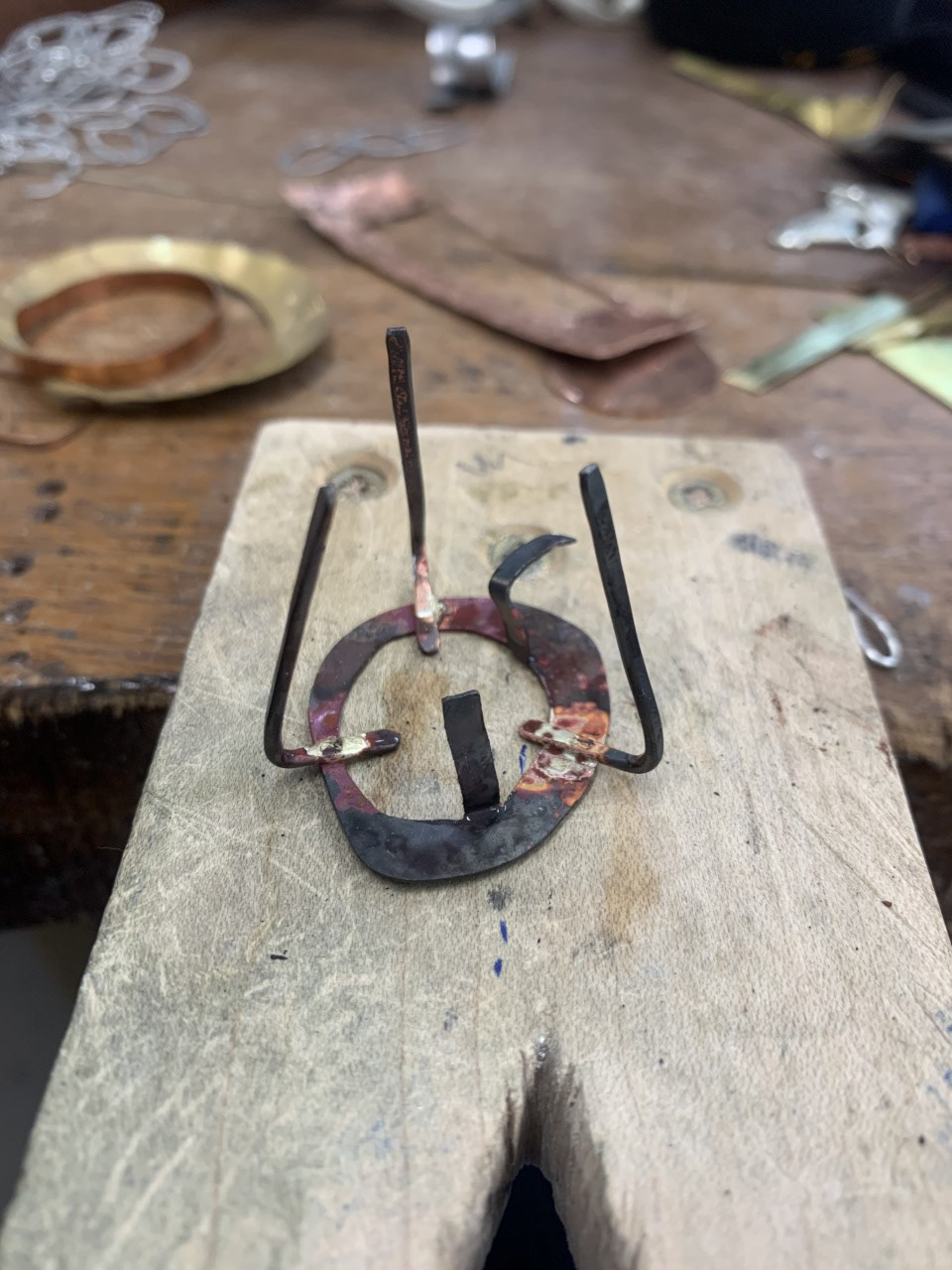

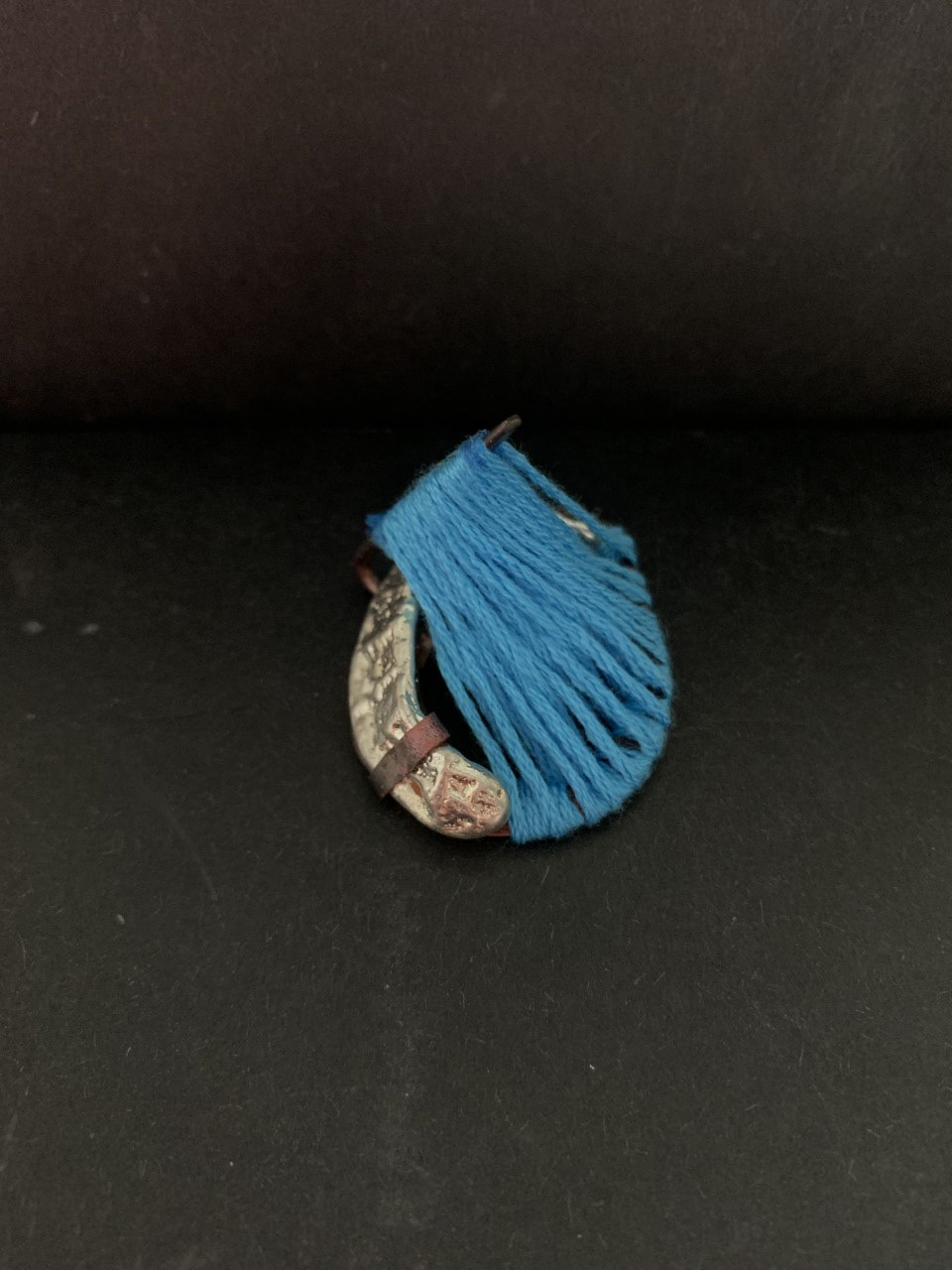
with this I had to change my plan to adapt to not having all the arms I wanted, using the one arm I weaved blue embroidery from the arm to the exposed copper sheet, this created a pattern and created a similar shape to the shell copying its boundaries. working around the shell and you are still able to see all its textures. I think this developed in to an interesting piece and it explores the boundaries of the shell also depending which way and angle to look though the shell you see different patterns of the embroidery which I find interesting.
paper folds

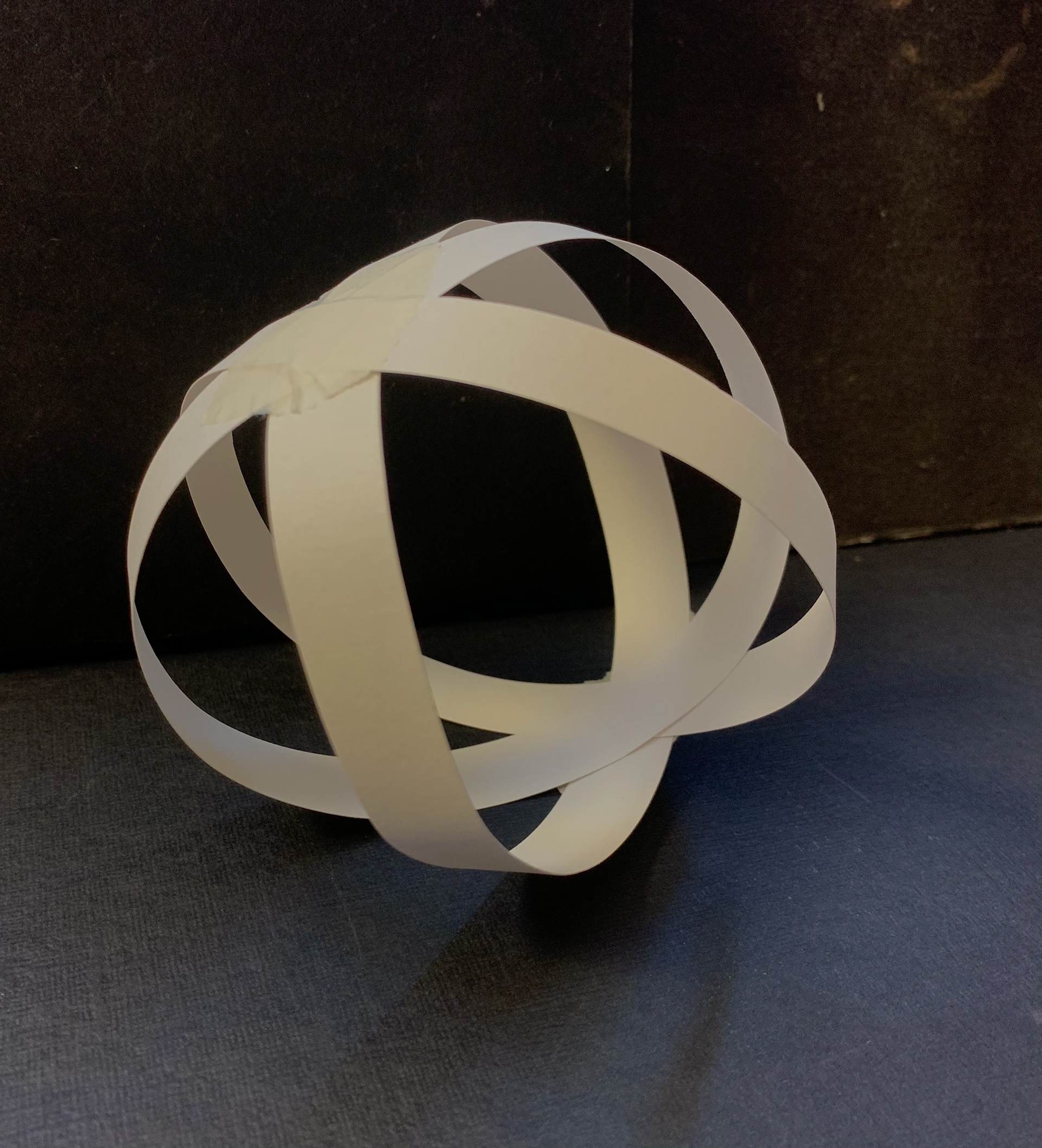
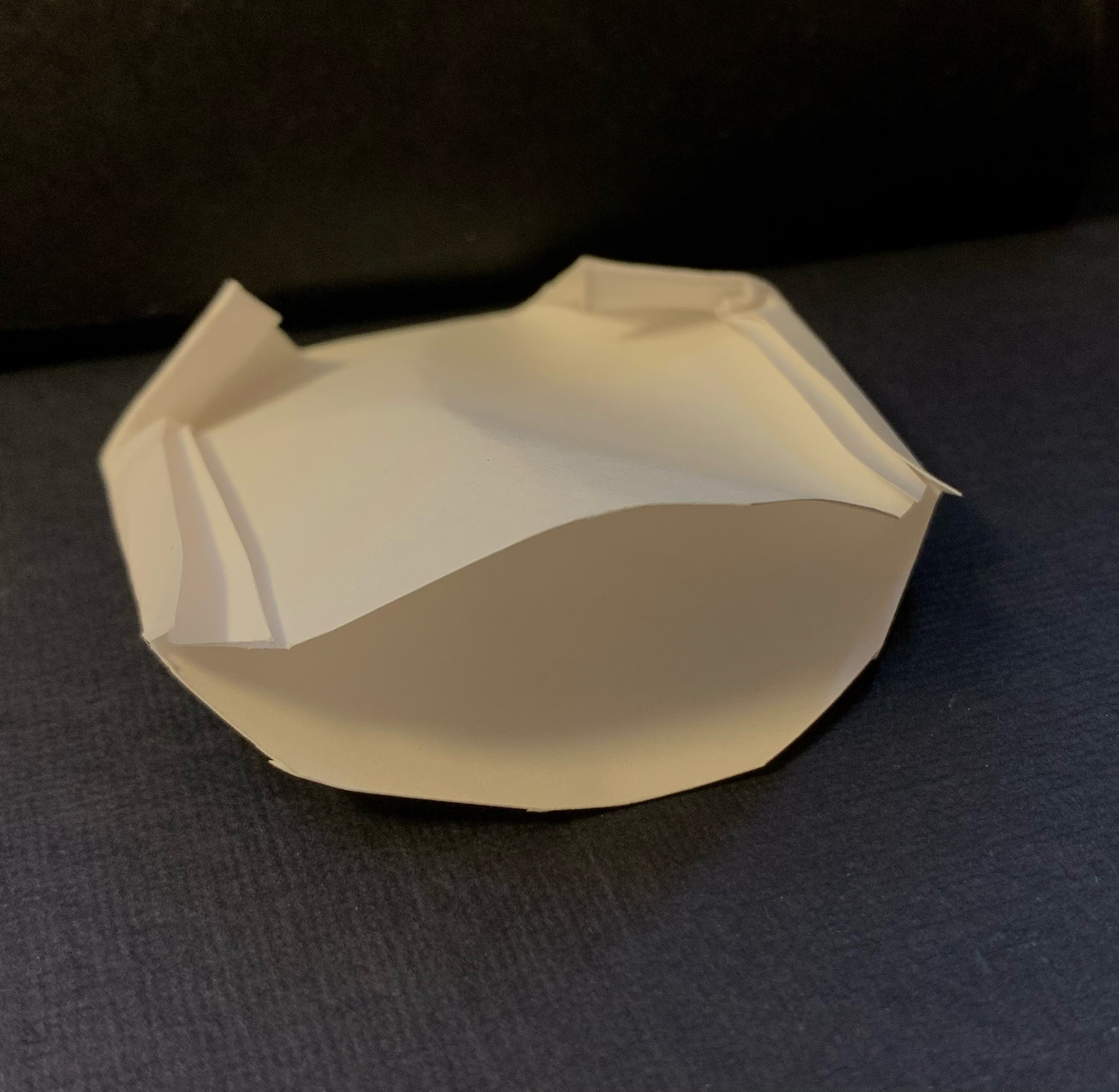

we were given the task to explore the boundaries within folding, pinch and form. with words we came up with to describe lines, wiggle, curved, interlinked I created these four paper sculptors taking inspiration from the words given. I then took these into the work shop and created two pieces inspired from my paper designs.
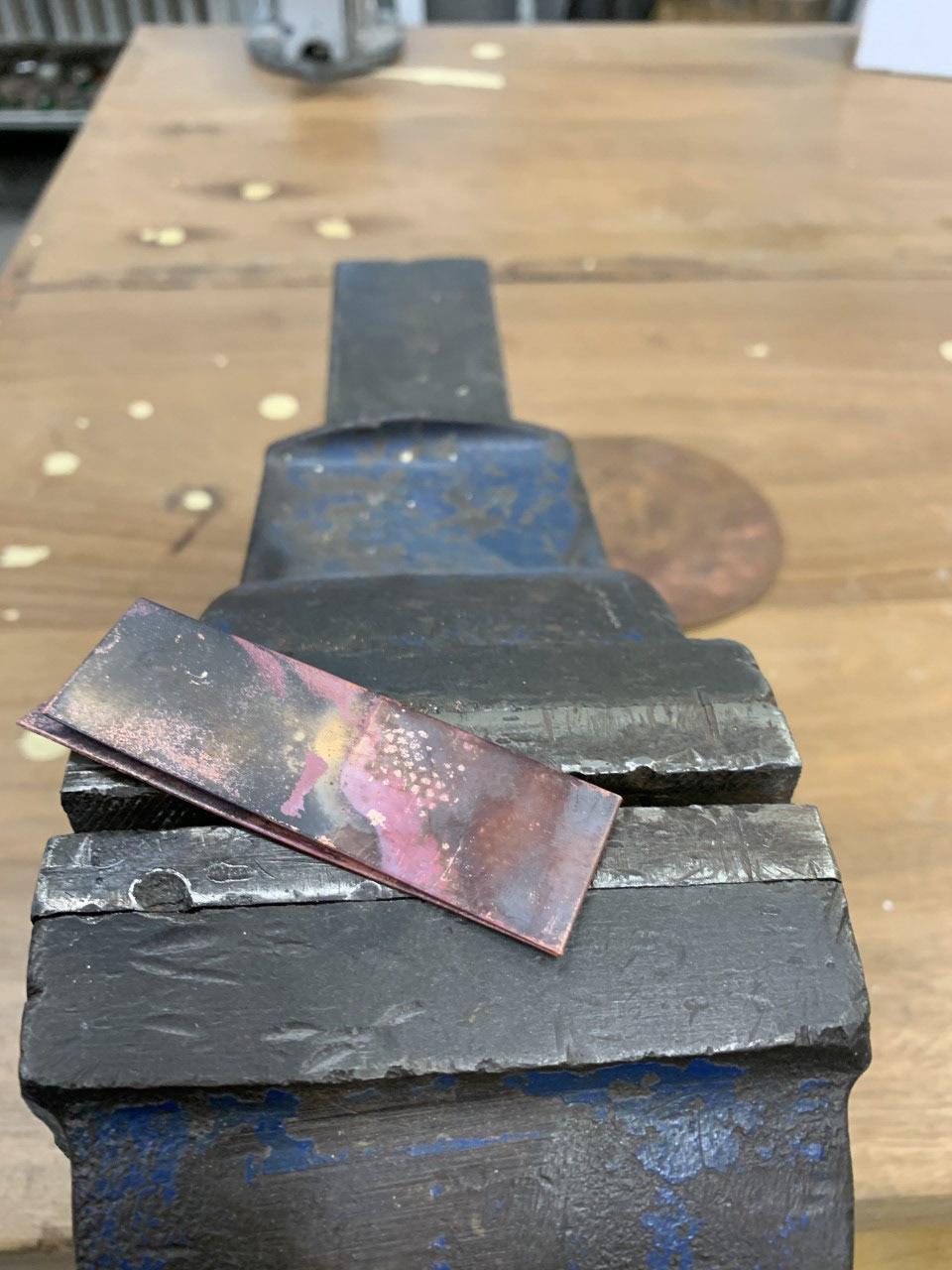
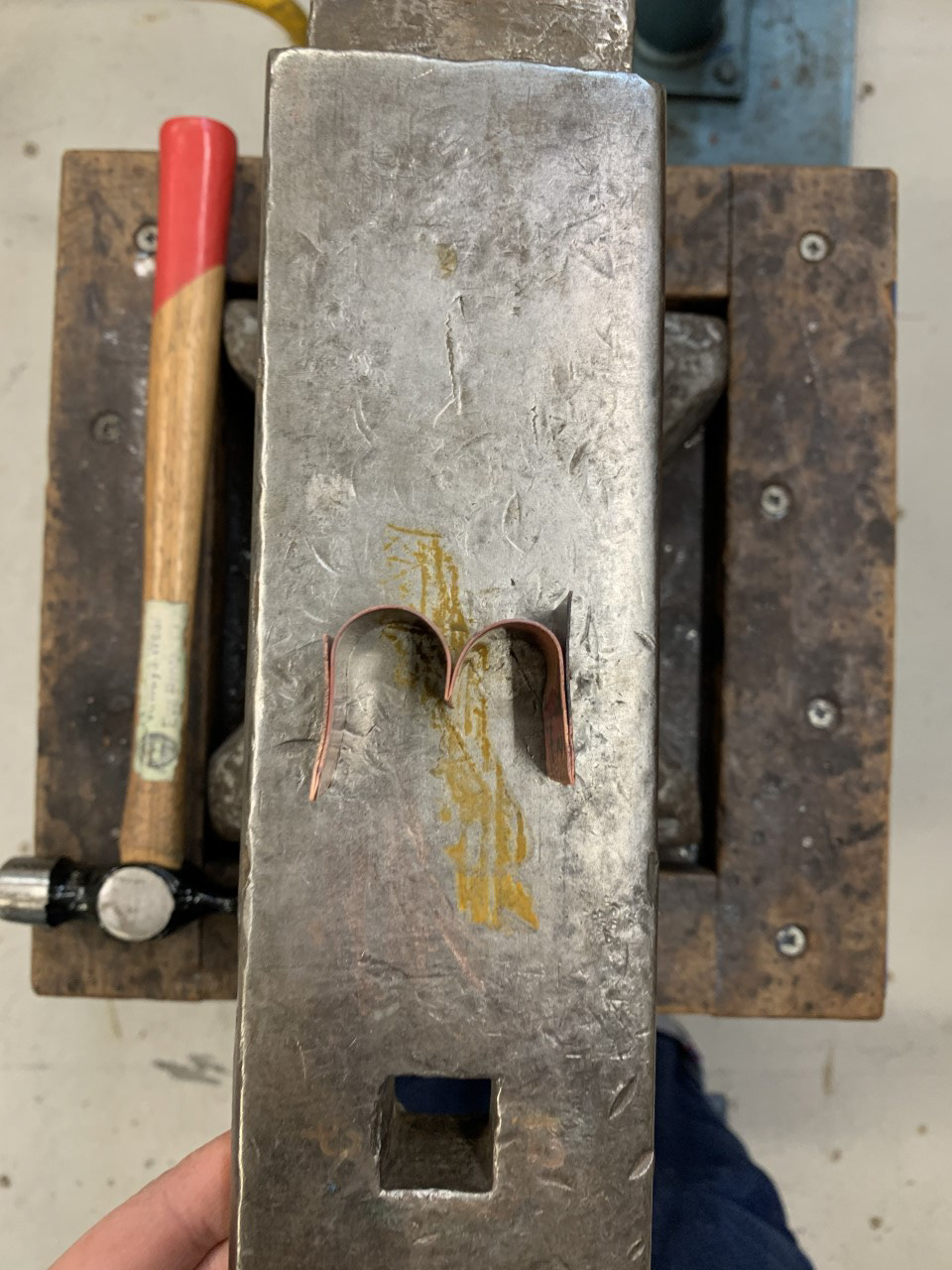
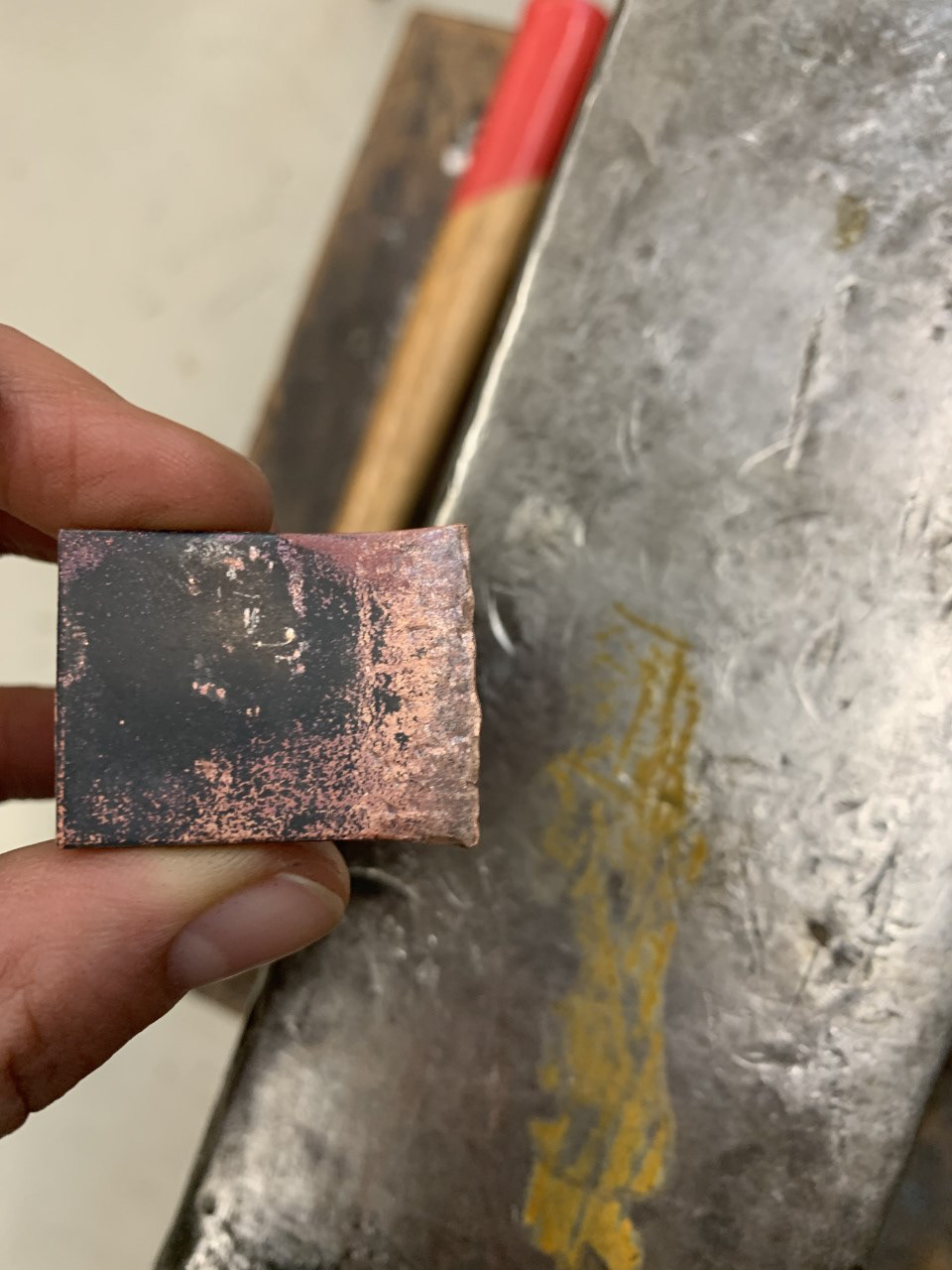
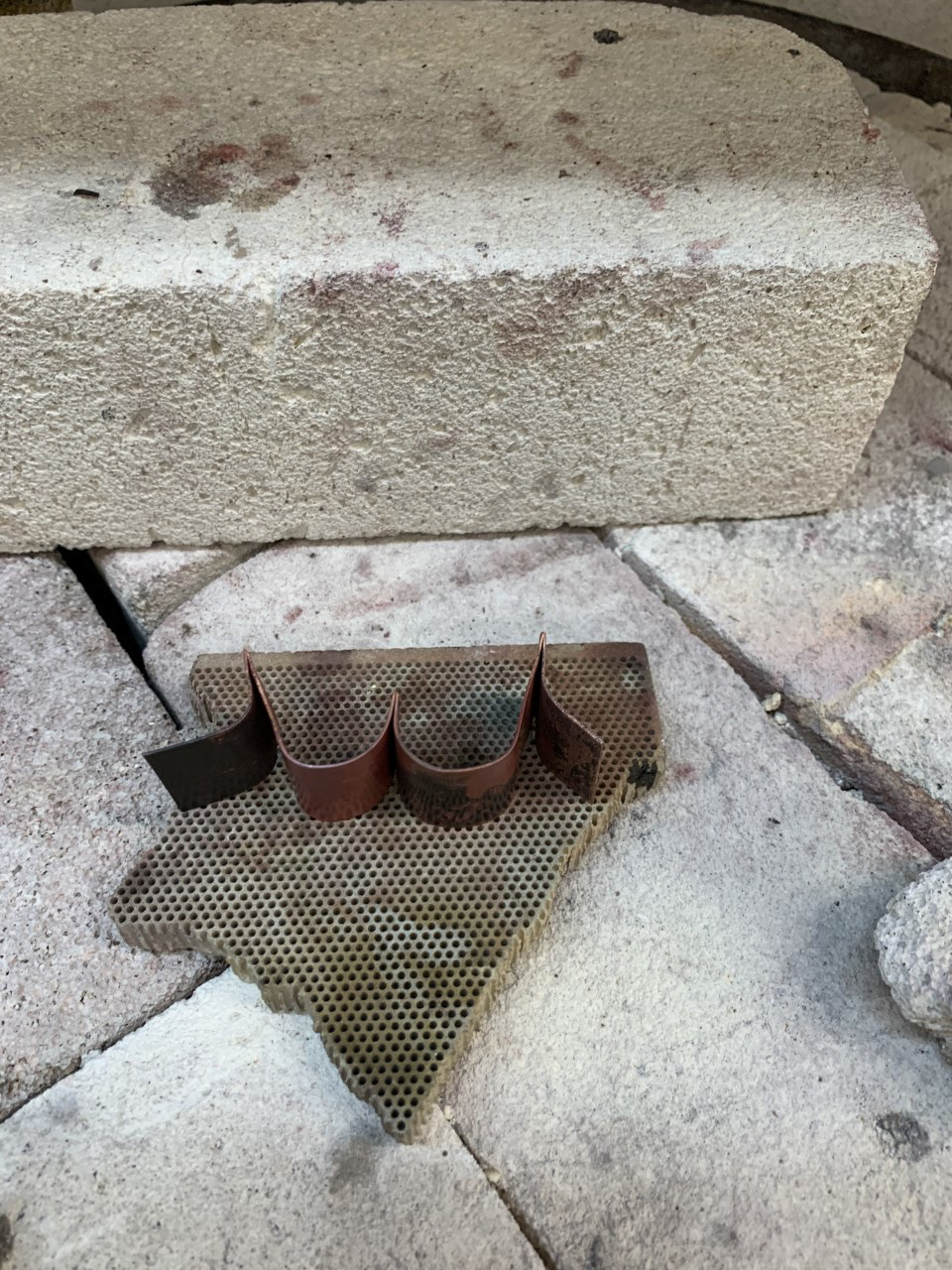
for my first piece I used the furnace to make the copper sheet soft and more malleable, to create clean sharp folds, I used the vice to get the two fold sides as close together then using a cross peen hammer, hammering gently the folded edge to make it as sharp and clean as possible, I then bent each side around a circular stake to create the curves. I think this piece worked really well and I was very happy with the precise folds I created. as I used a TORCH ON THE metal, the heat made the copper go a bright red/black. as I didn't pickle it, it didn't return to its normal copper colour.



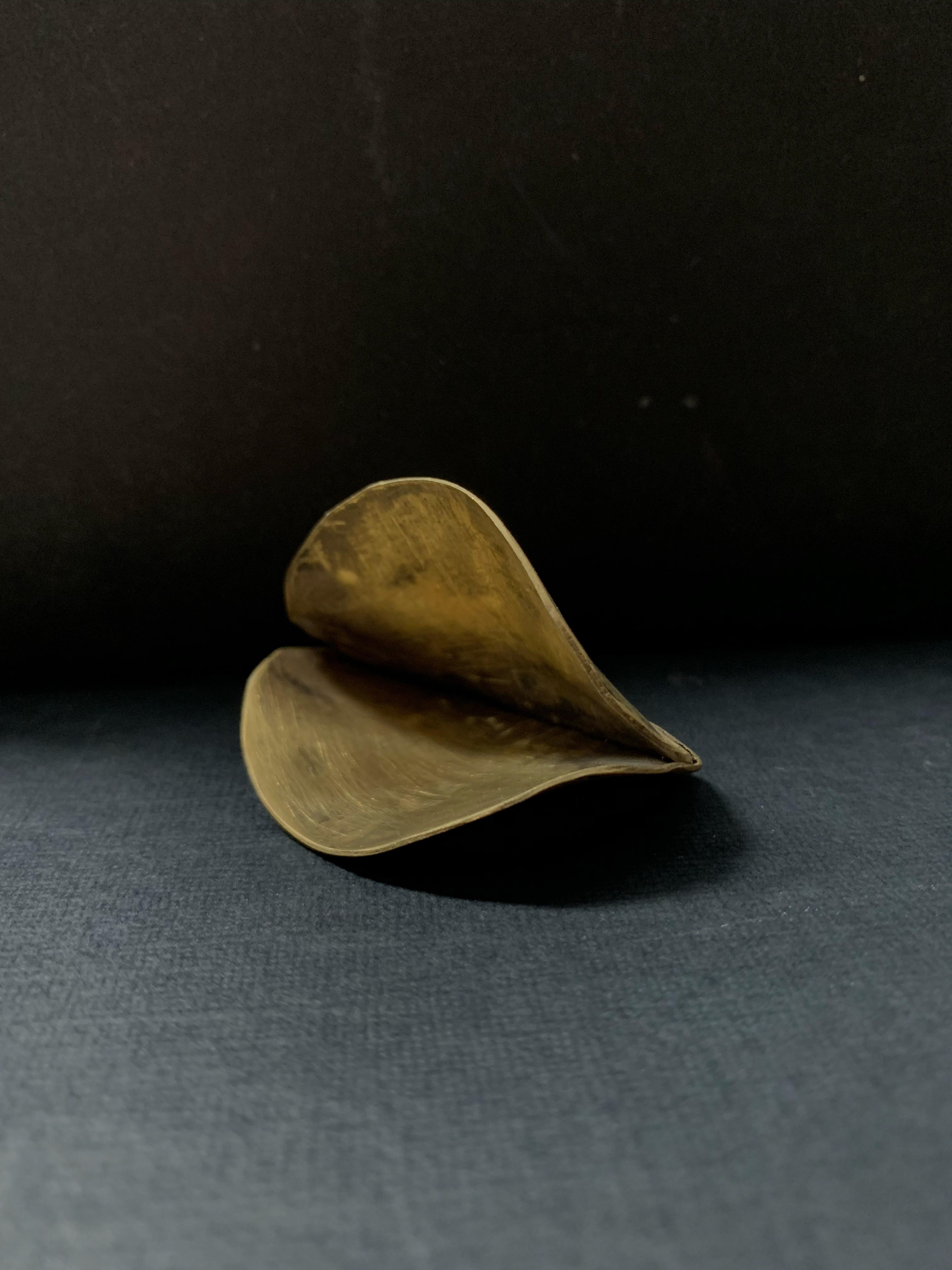

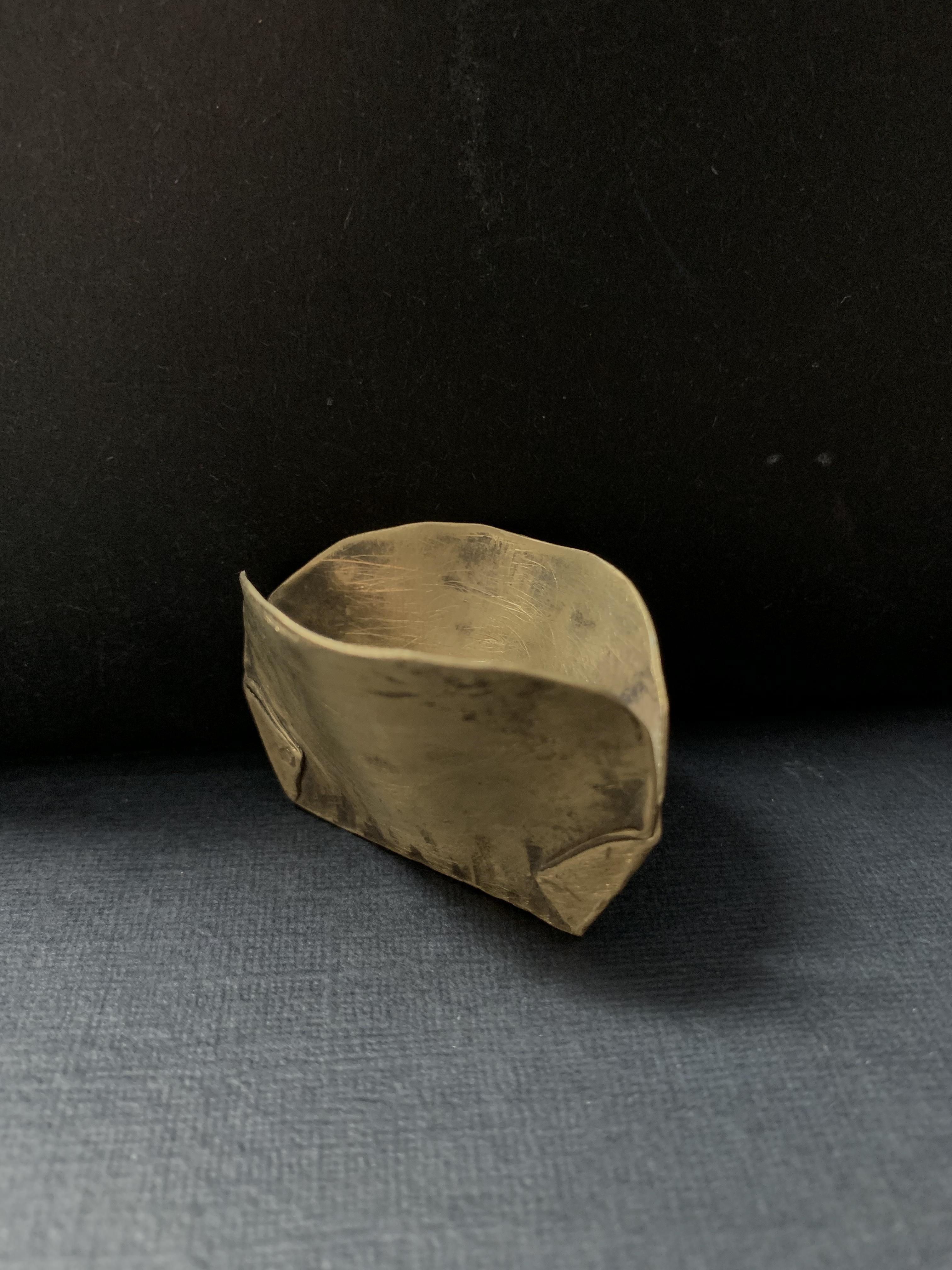
this piece used a very similar technique folding and hammering the corners, I then used some pliers to open up the opening creating a pocket like fold.
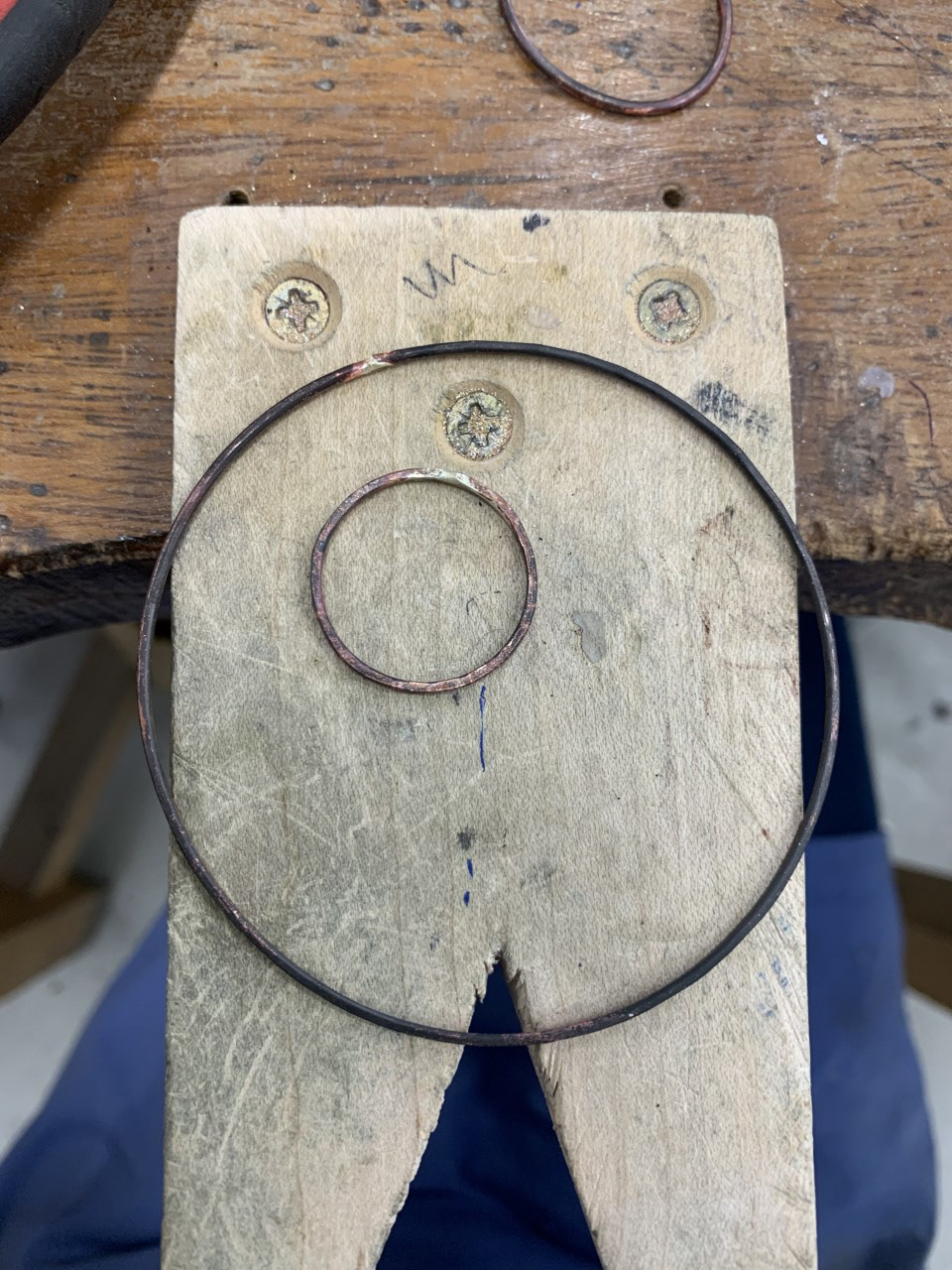
for this piece I wanted to explore the boundaries, I first started with creating circles with copper wire and soldering these, using a circular ring stake hammering my soldered circles to get a perfect circular shape. I made four different circles all varying in shape, I found the soldering process hard at first however repeatedly doing the process I finally managed to perfect my skill and grew more confident with each circle. filing a cleaning up the solder to create a flush circle.
for this I really wanted to experiment with wire, I wanted to try crocheting wire and see what effect it would have on the wire. in the video above tried crocheting aluminium wire. I met a lot of resilience doing this as I found that it wasn't that easy to manipulate into the way needed it too, It wasn't as flexible as I expected making the crocheting very uneven and messy. I have had previous experience with crocheting but with wool, its a much more flexible material allowing you to manipulate it very easily. this being exchanged into wire was quite a challenge however I got some thinner brass wire which was much more flexile and easier to use. with constant practise I manage to find a process which worked well creating a crochet stitch with the wire allowing me to get my thought into a physical object. although I used a basic stitch and was very happy with the effect it allowed me to create, being a soft wire it was very easy to manage if I made a mistake or to create my ideal shape which I could add on to my piece.

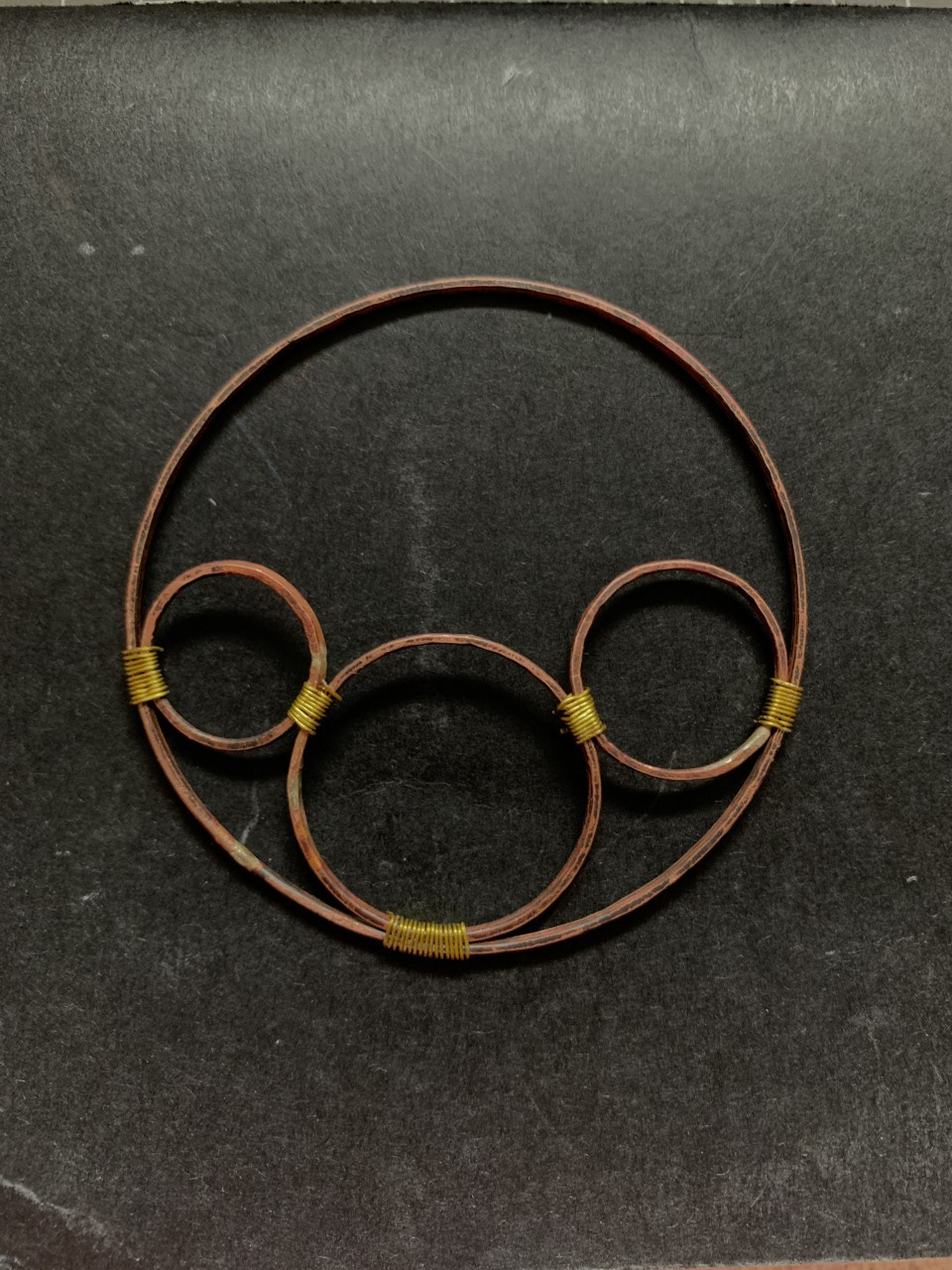
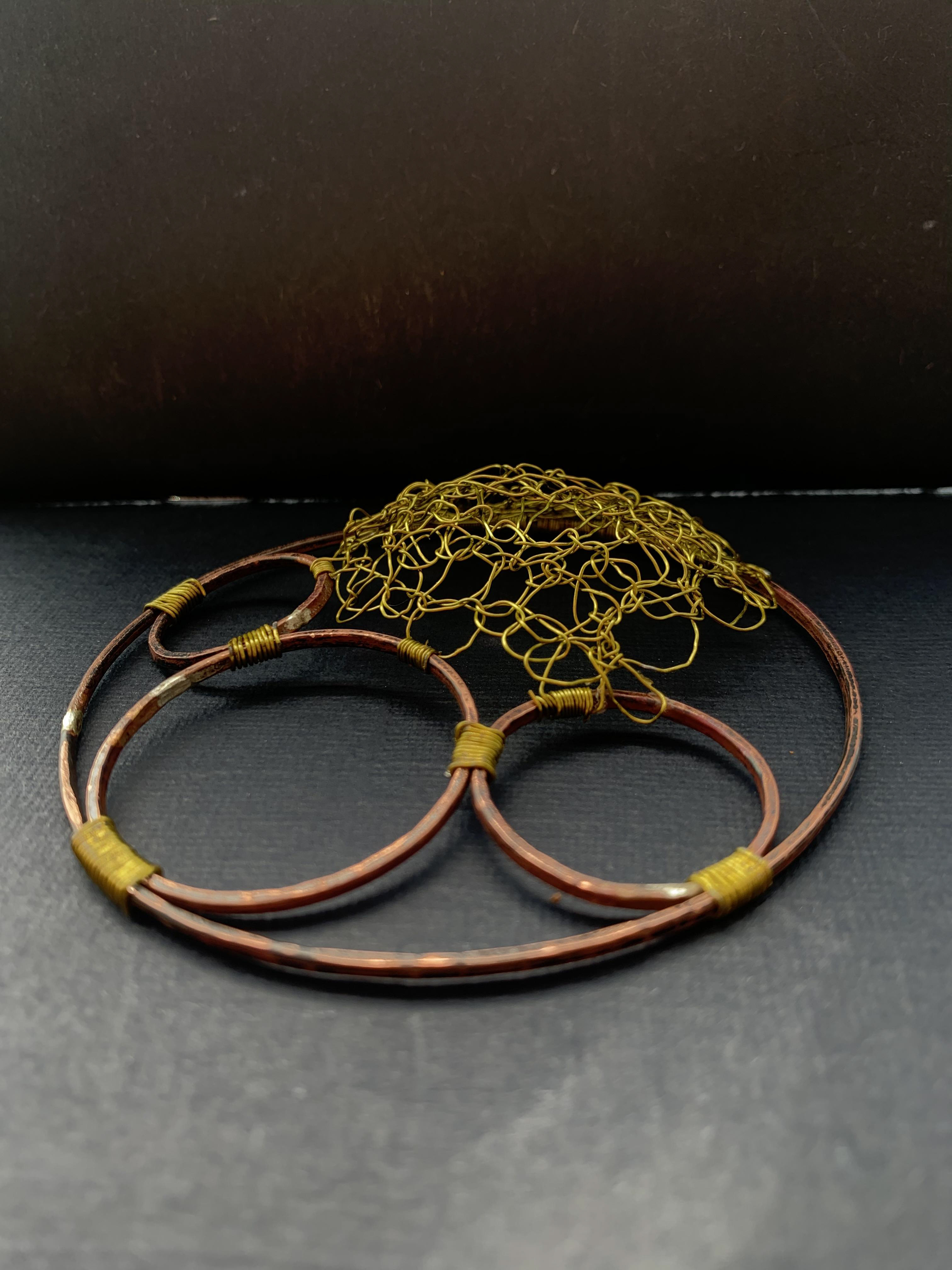
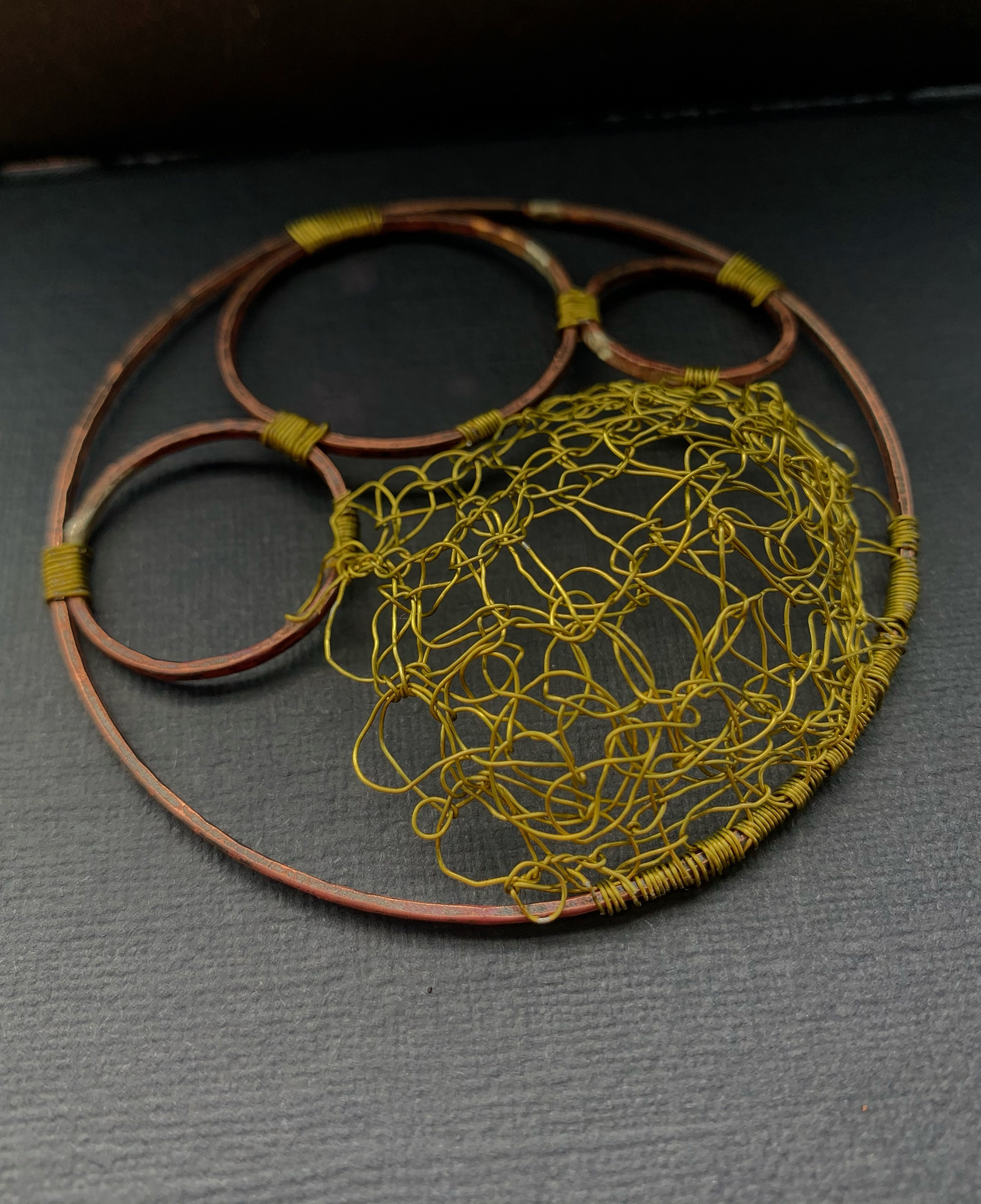
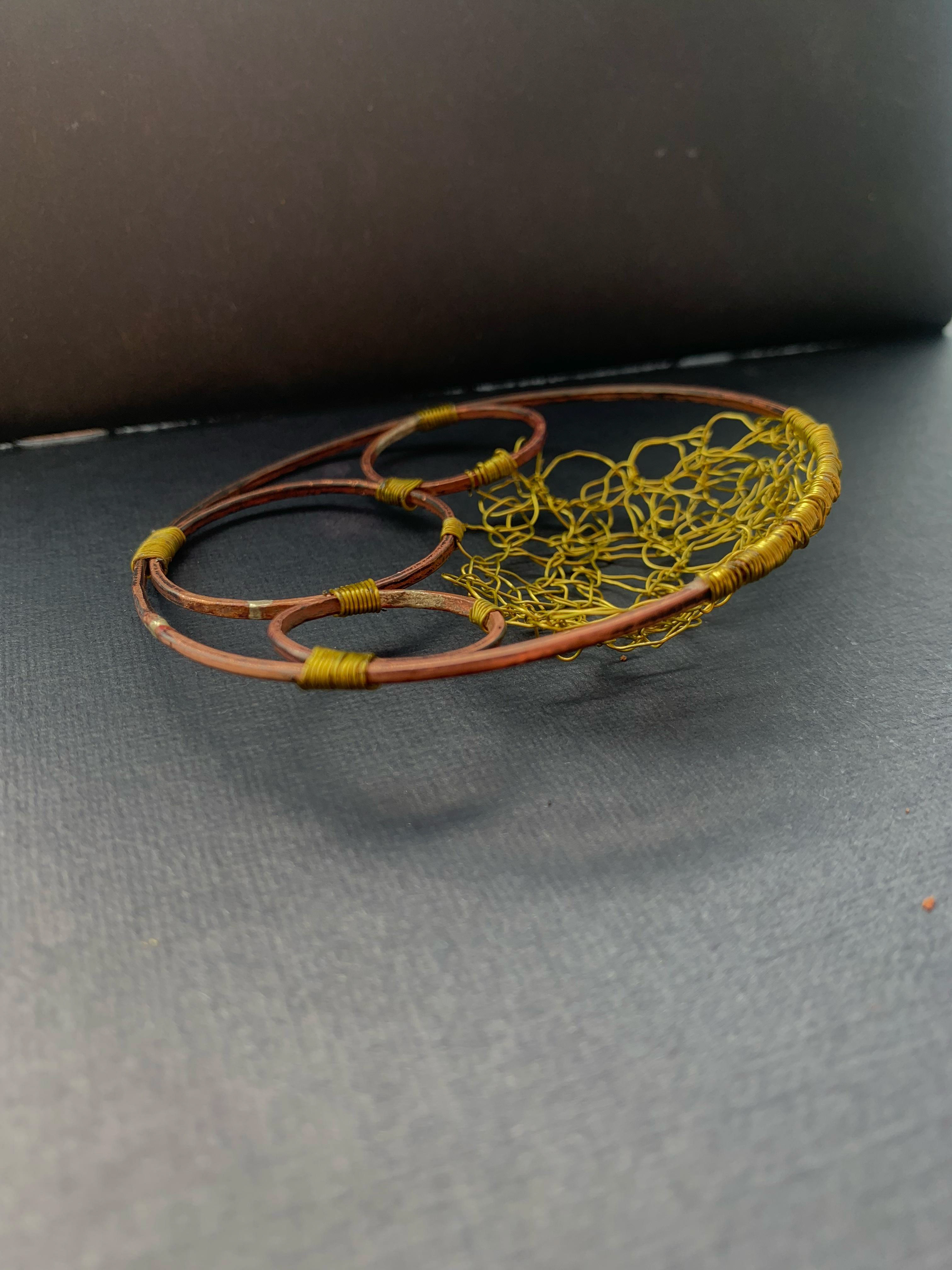
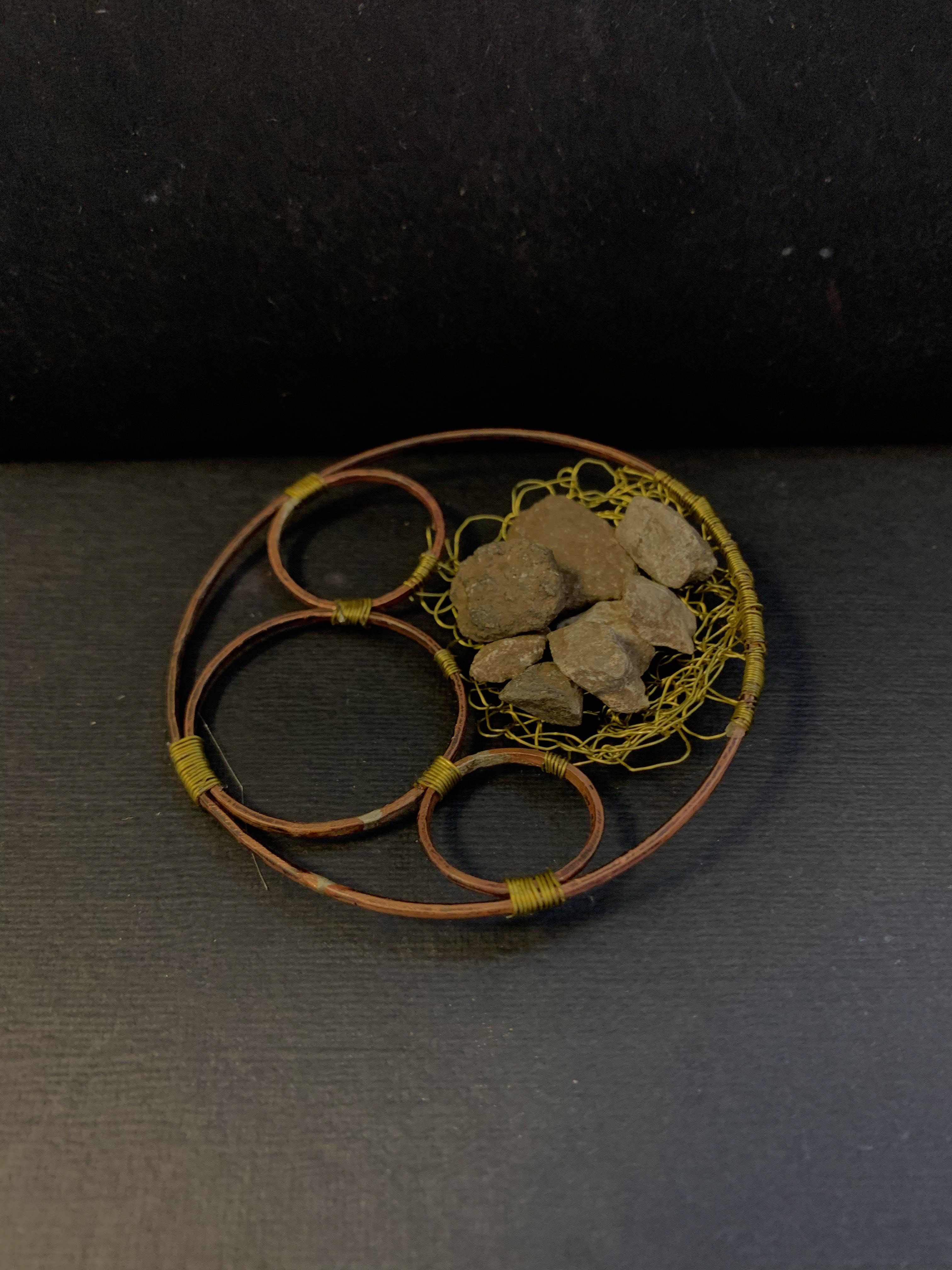
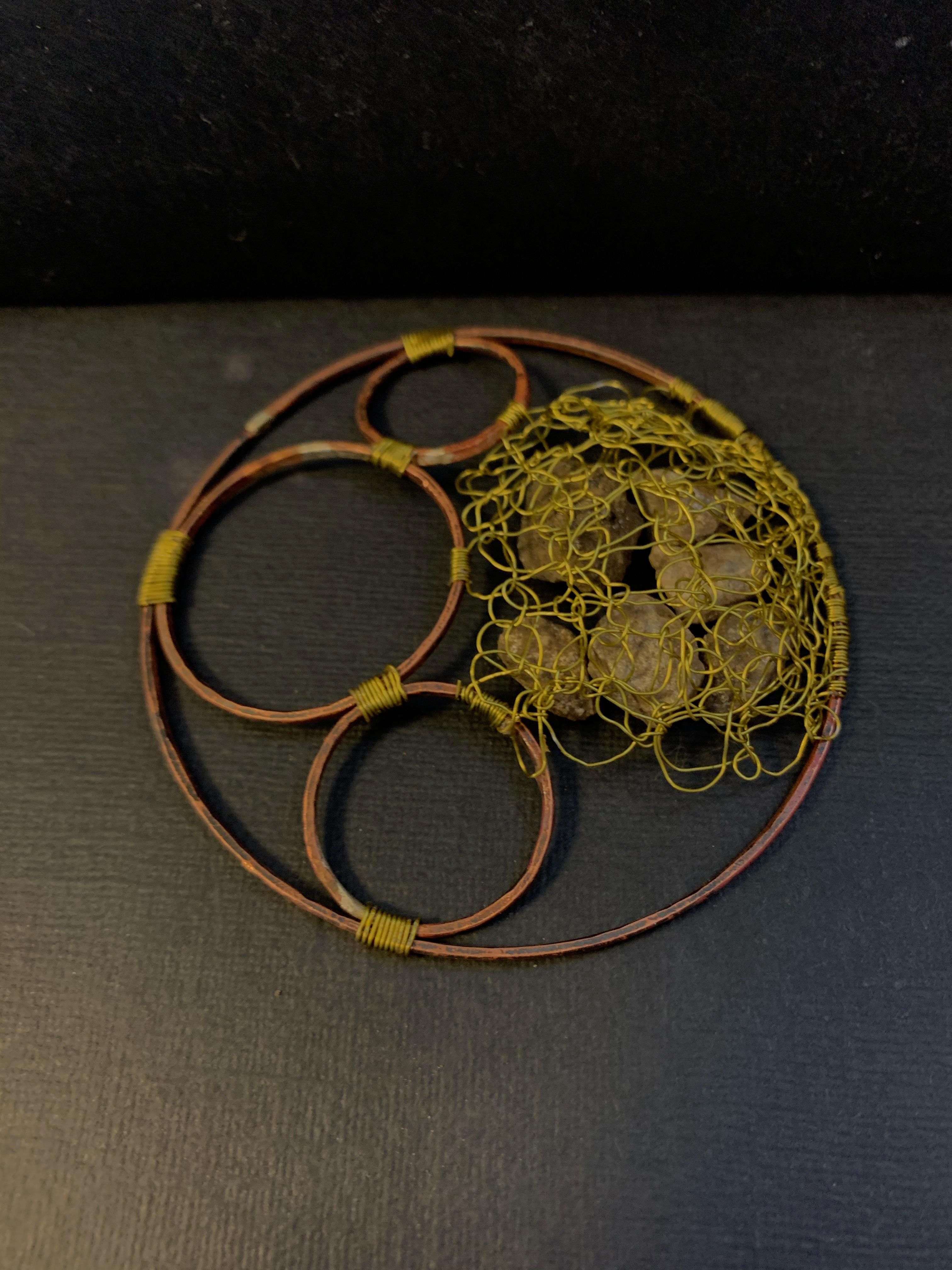
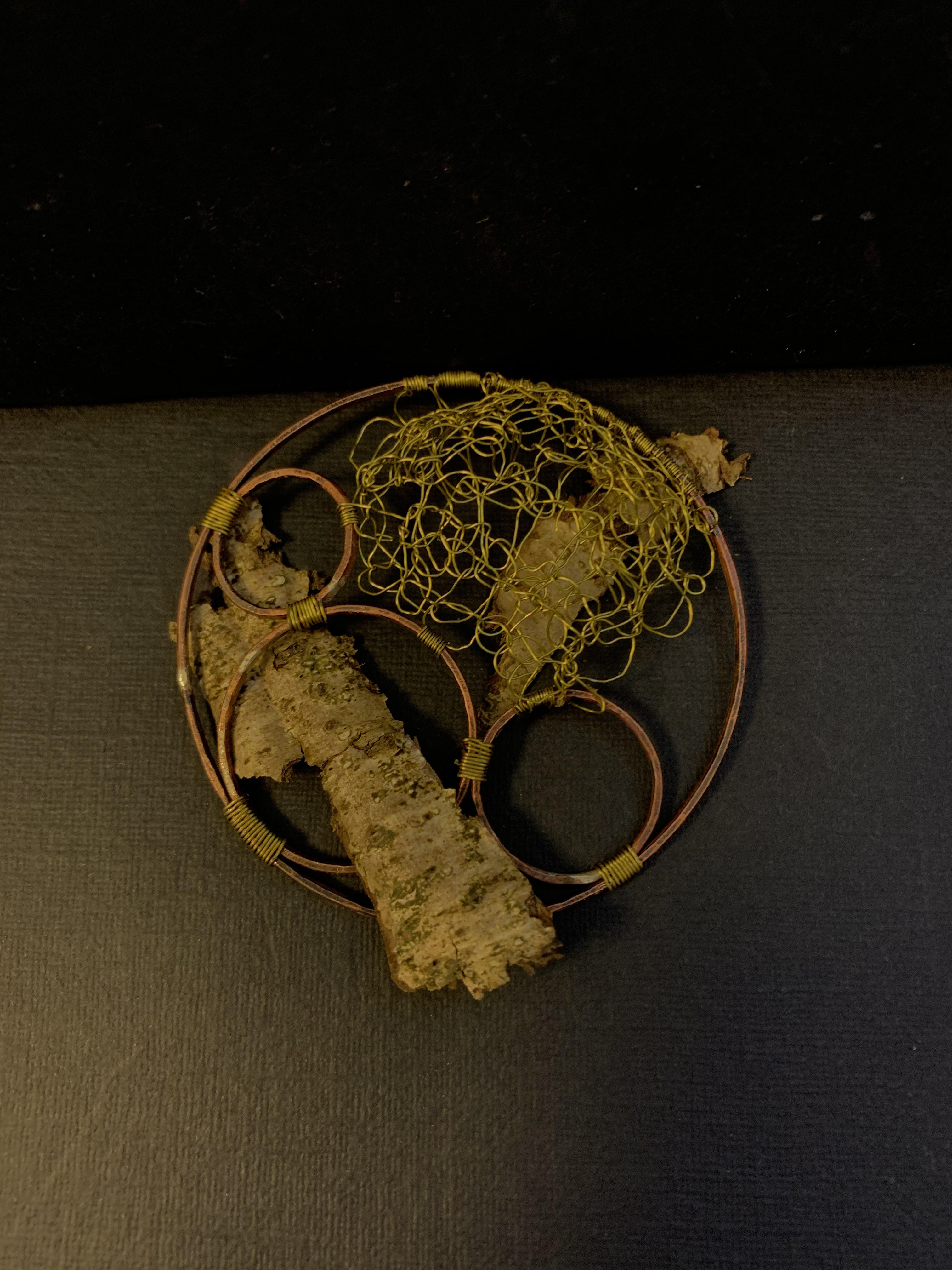
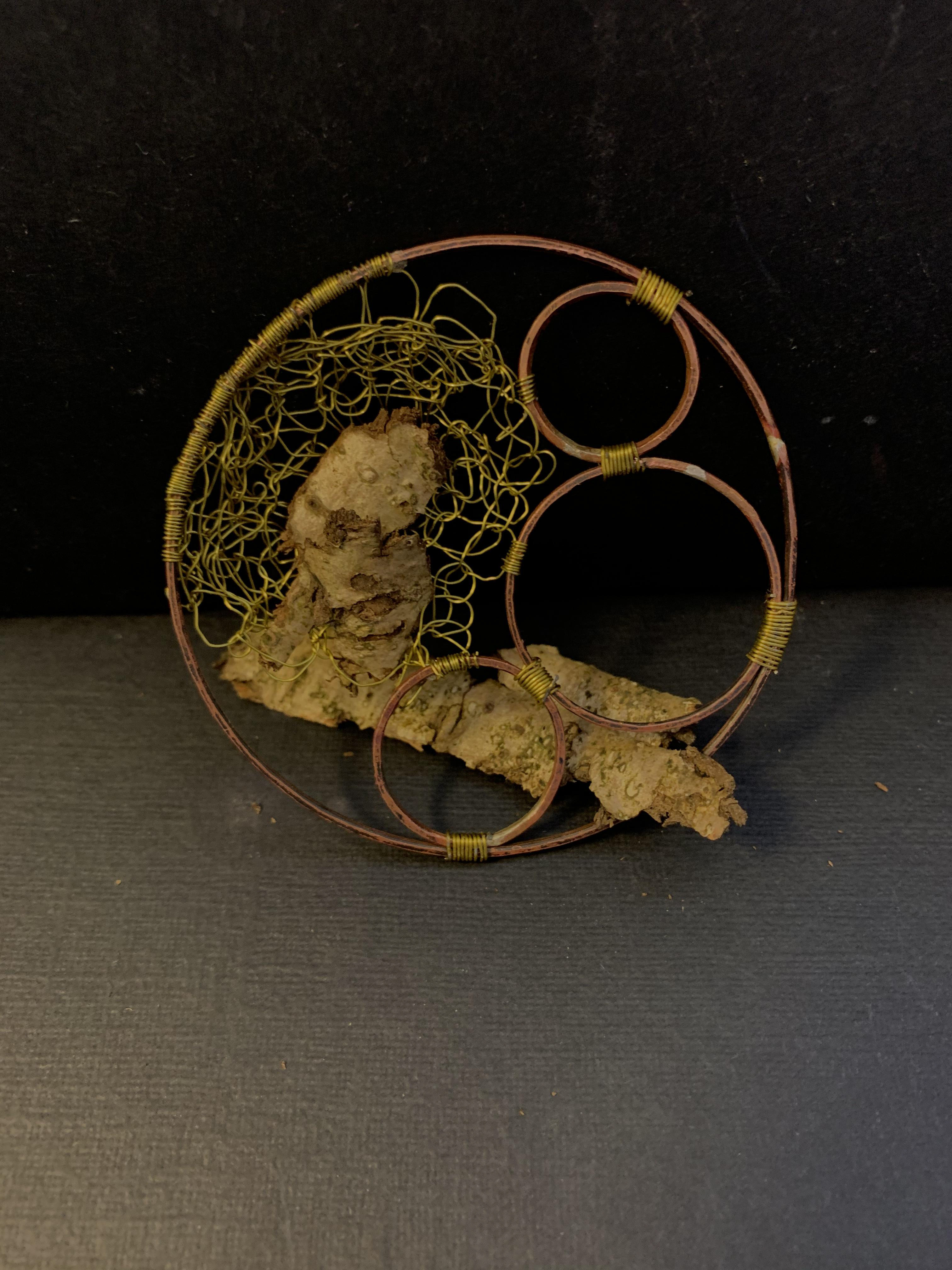
exploring the boundaries within the negative space of the piece, having lots of negative space changing the placement or involving objects changes the boundaries. also creating this crocheted cup ables to trap and hold objects like Antti Laitinen who looks a trapped boundaries